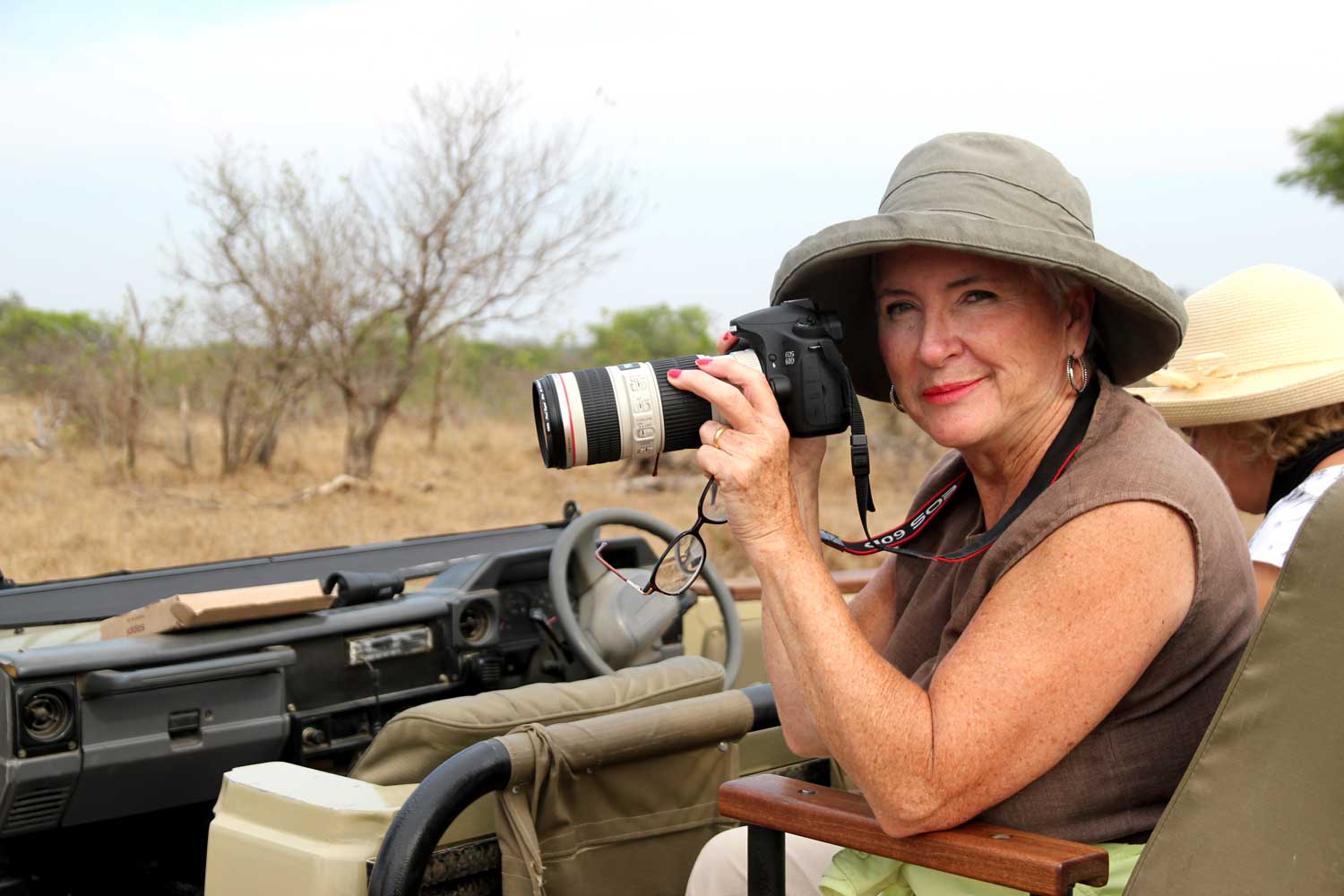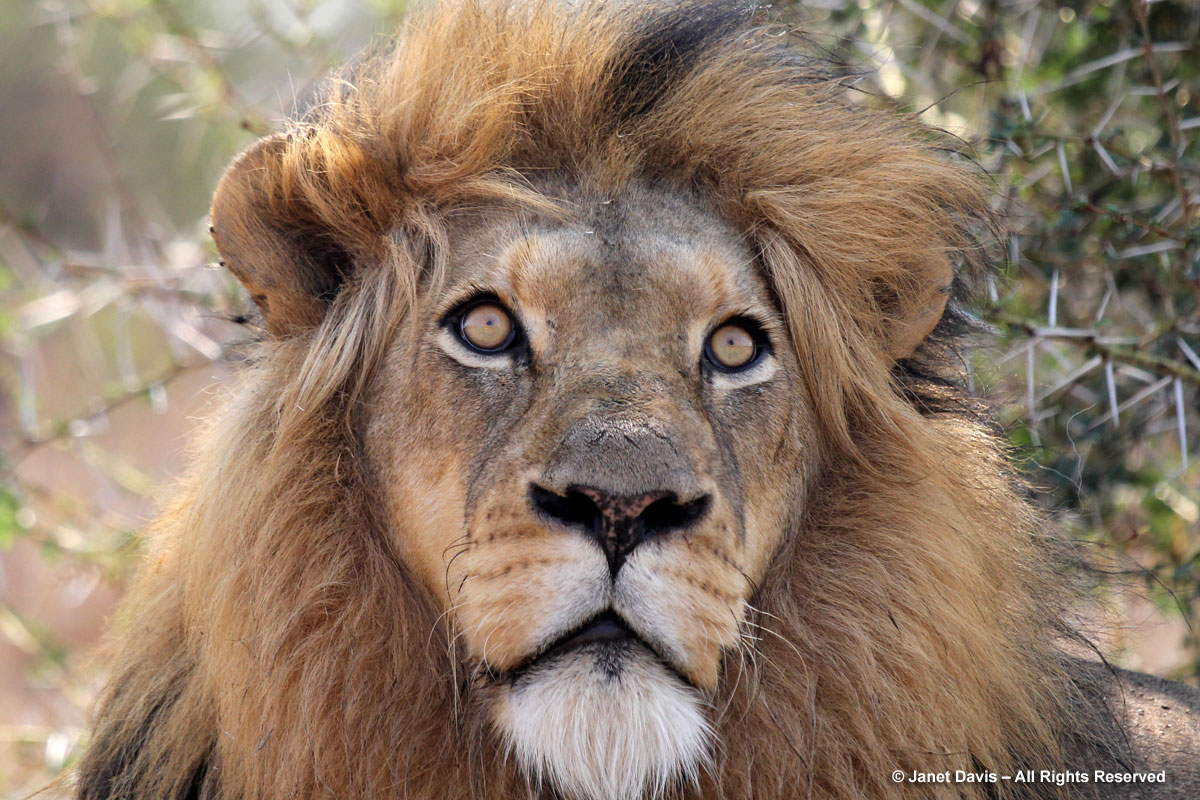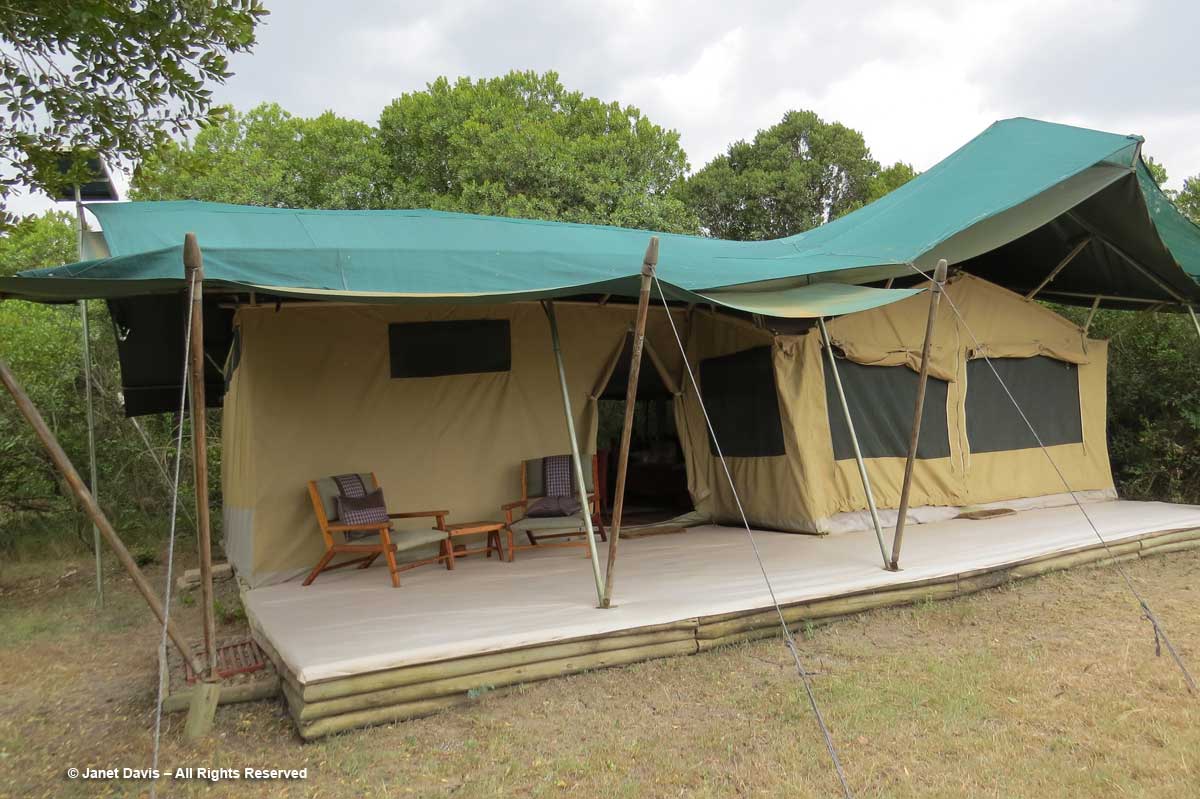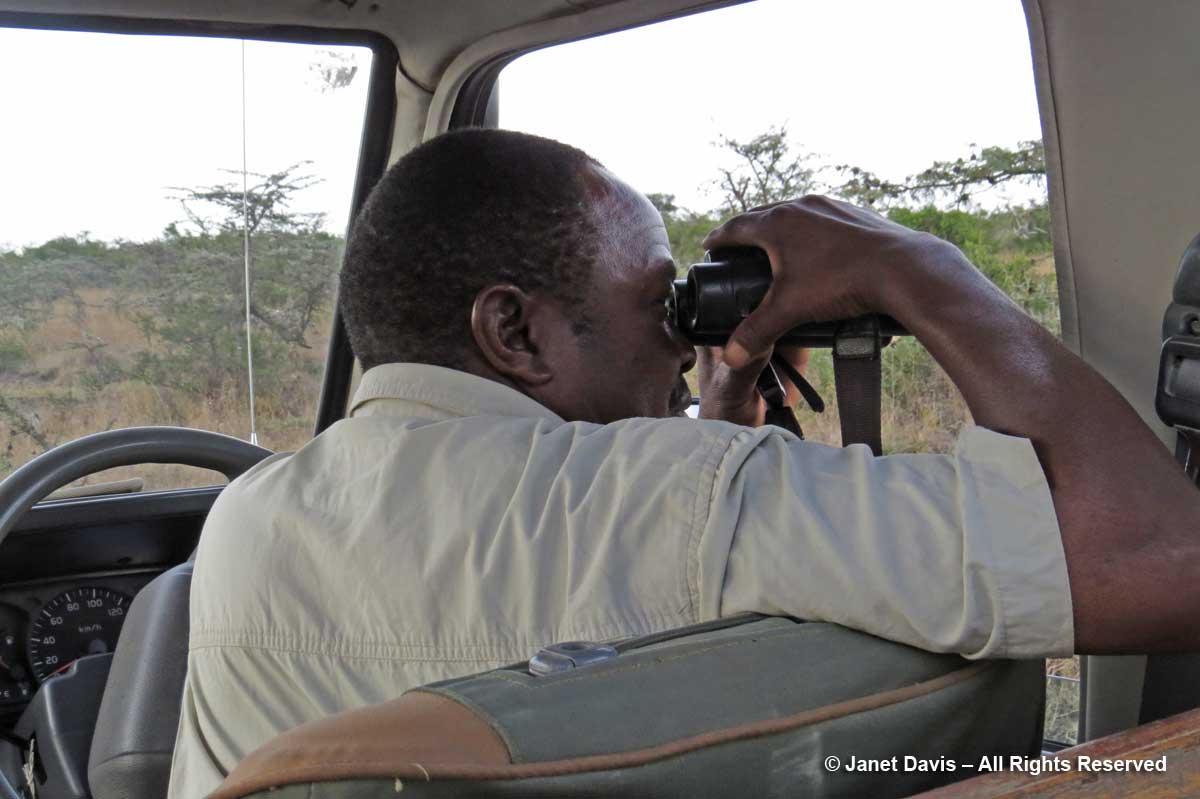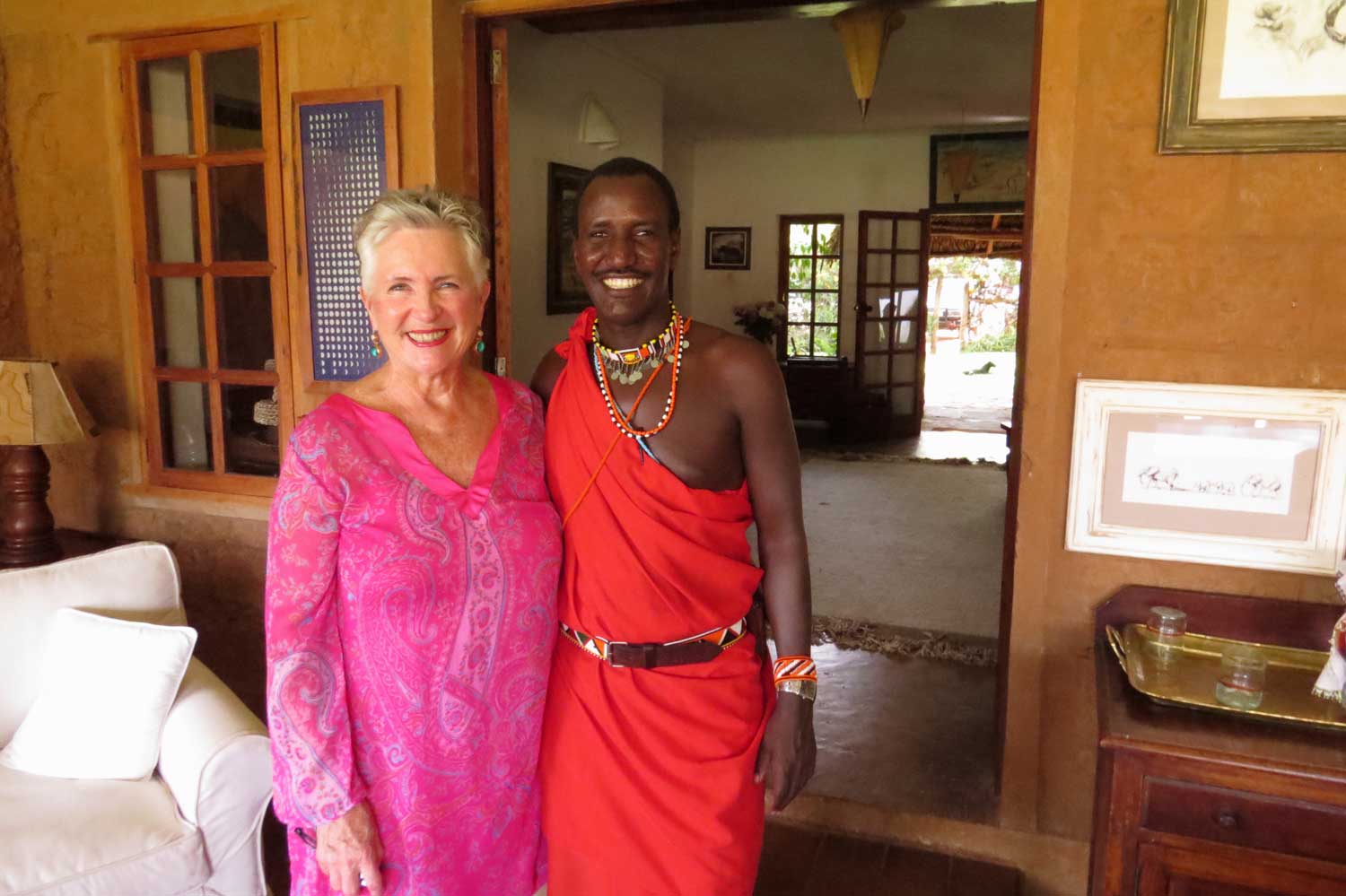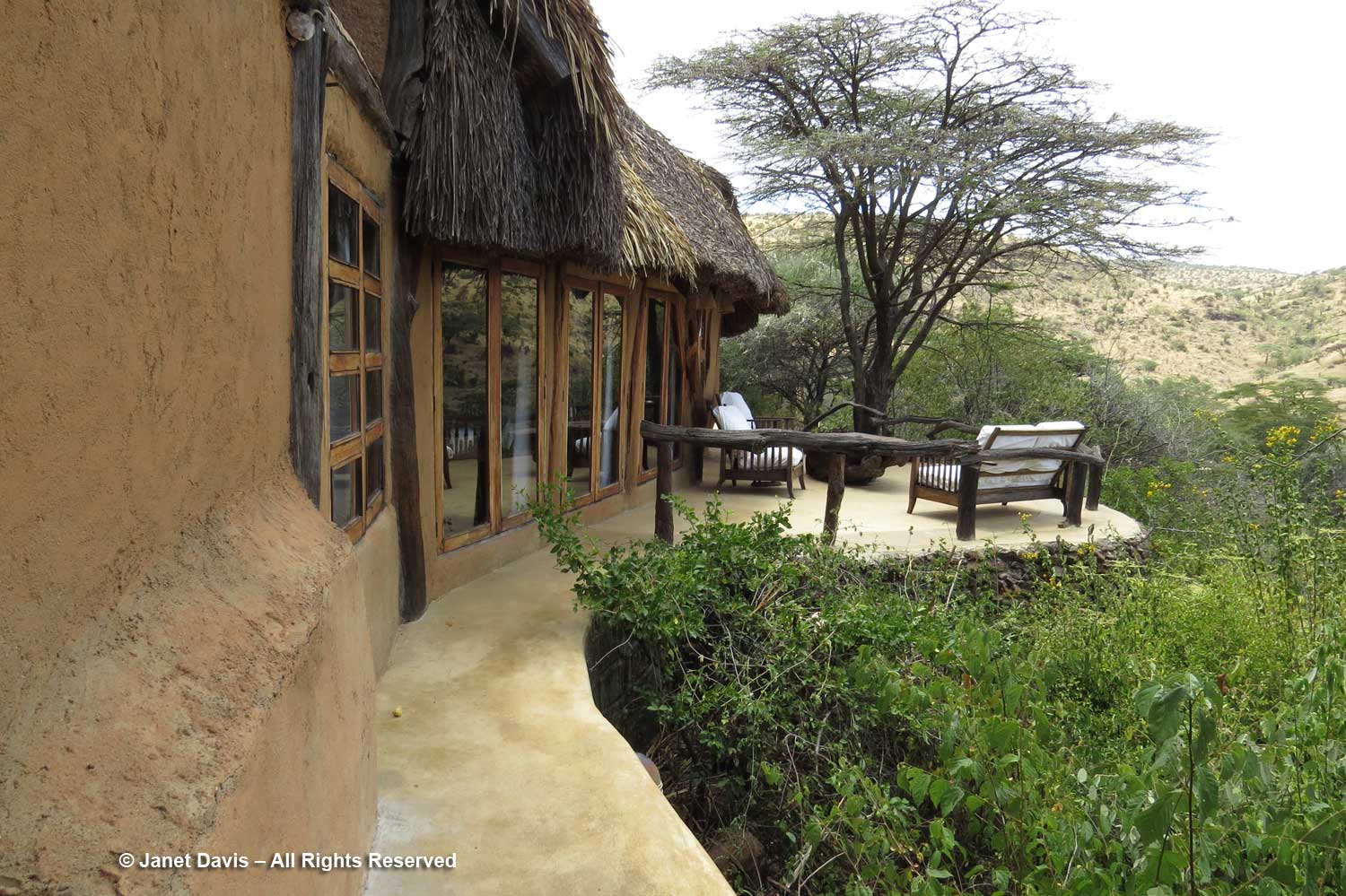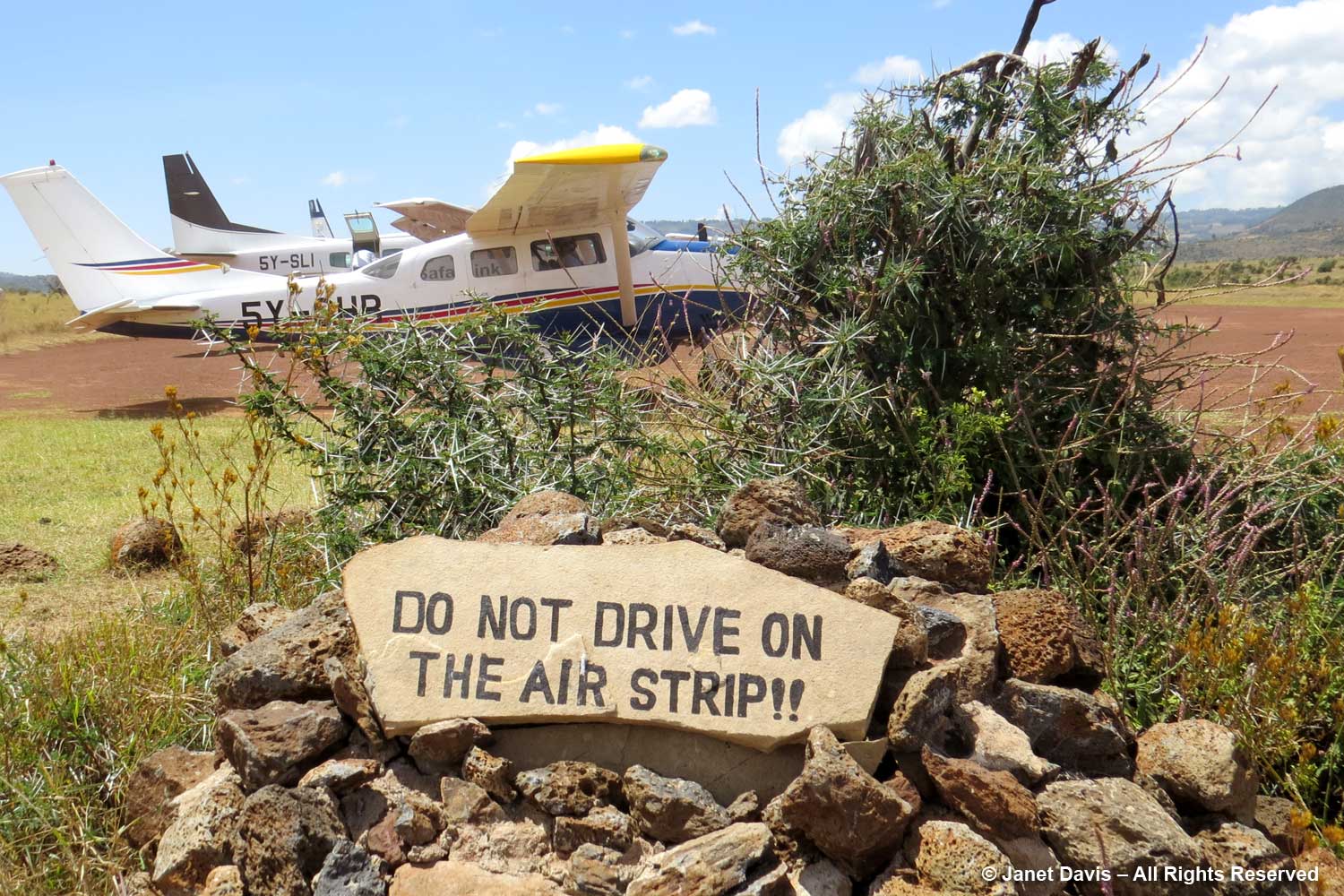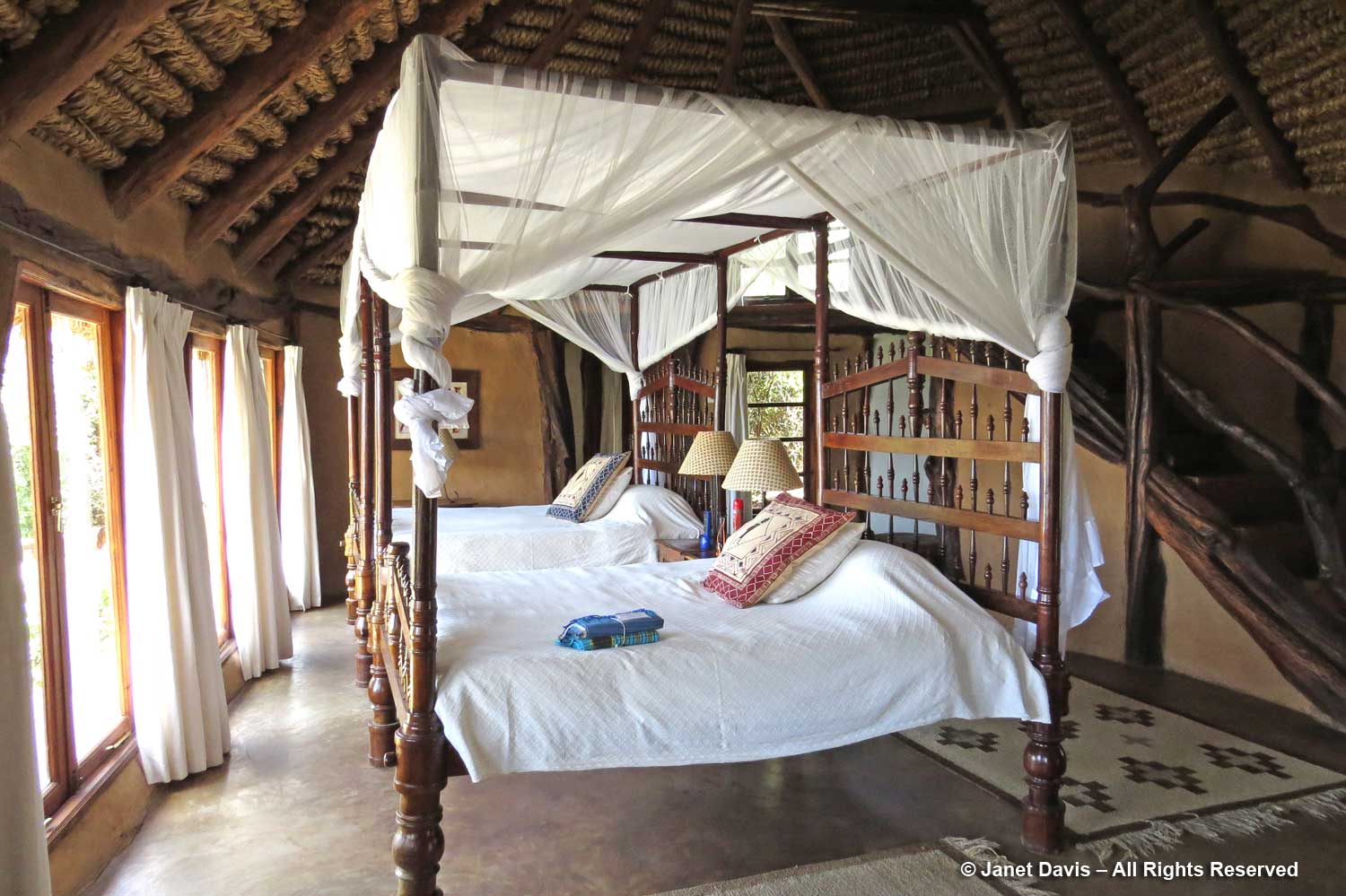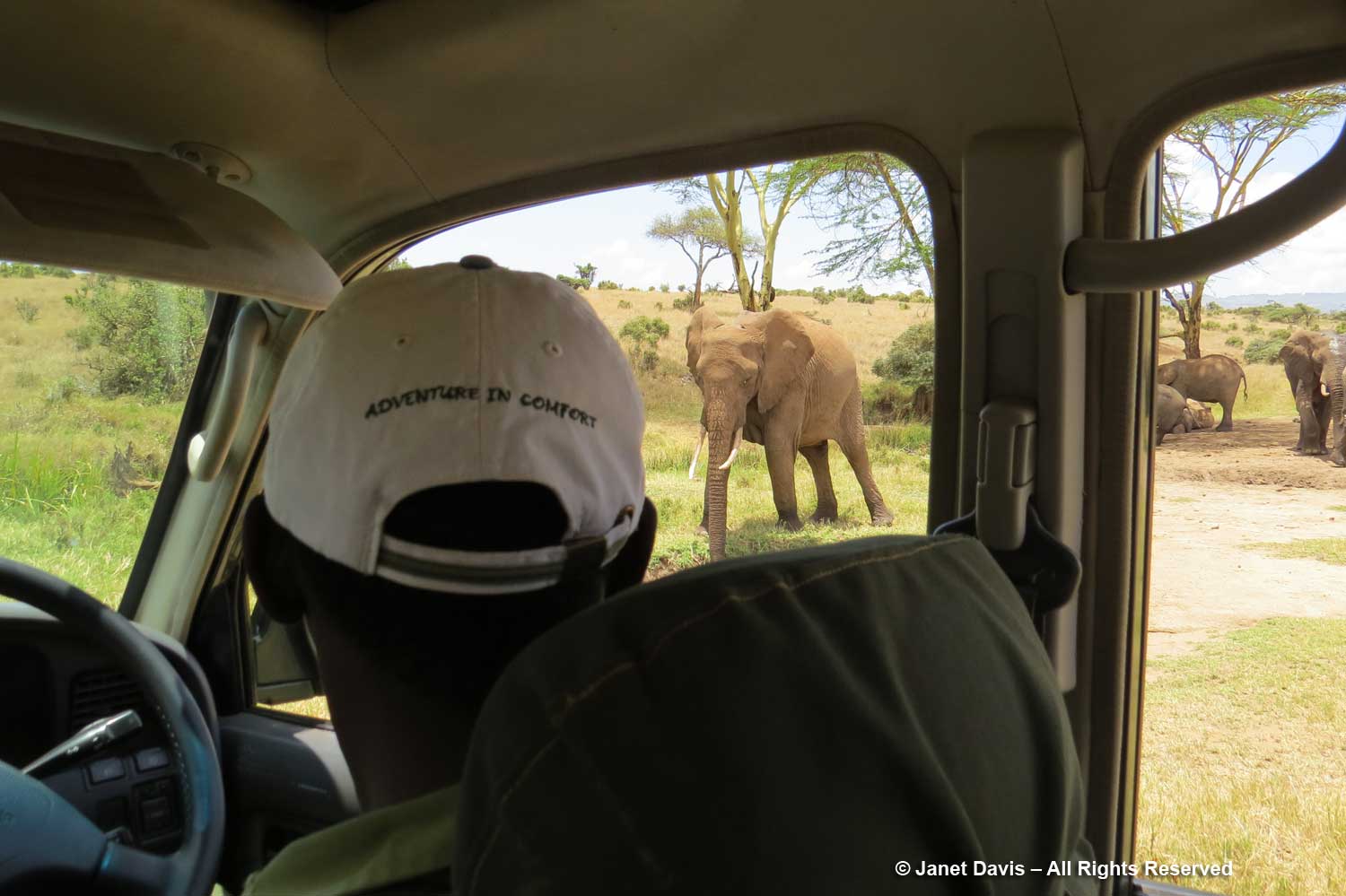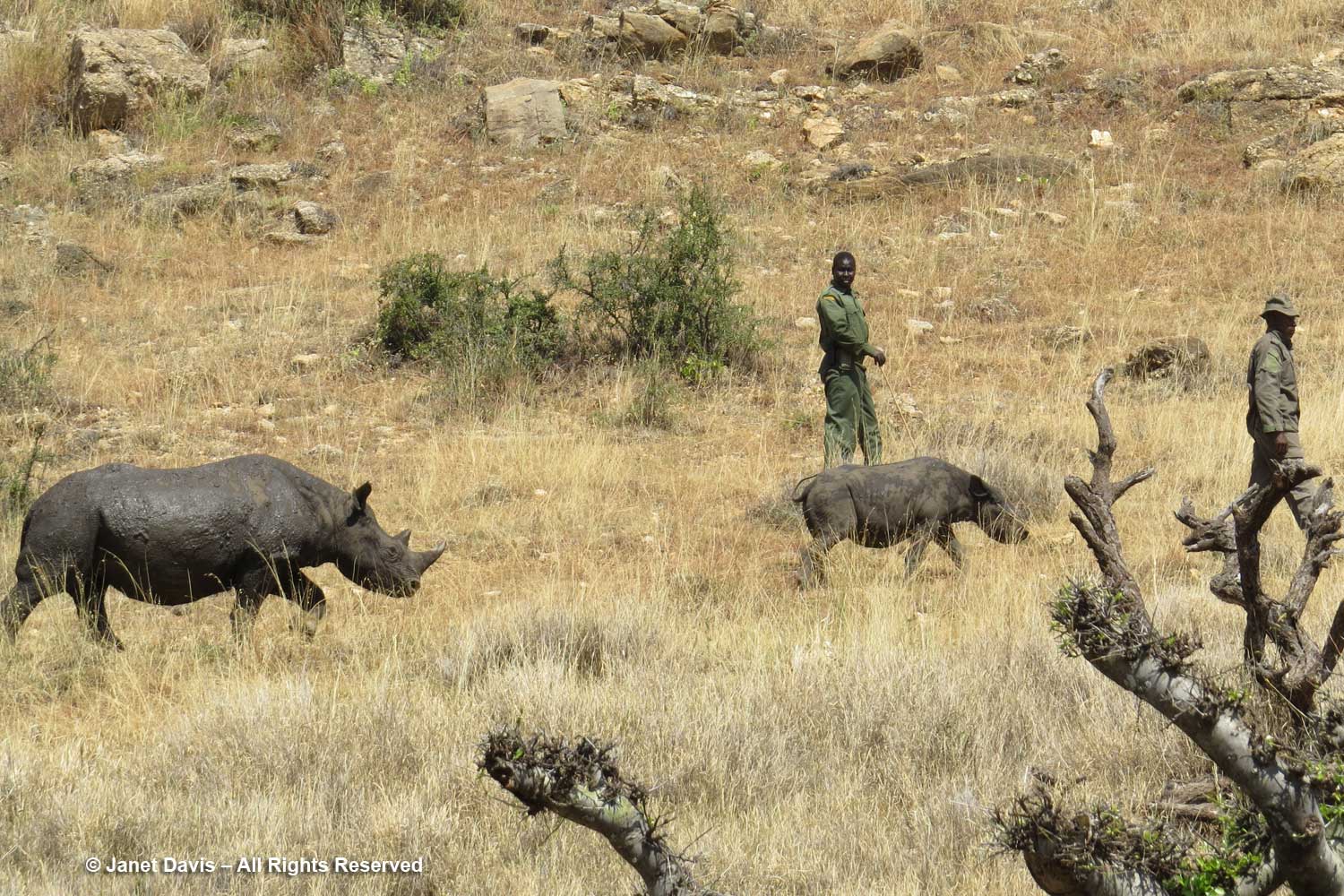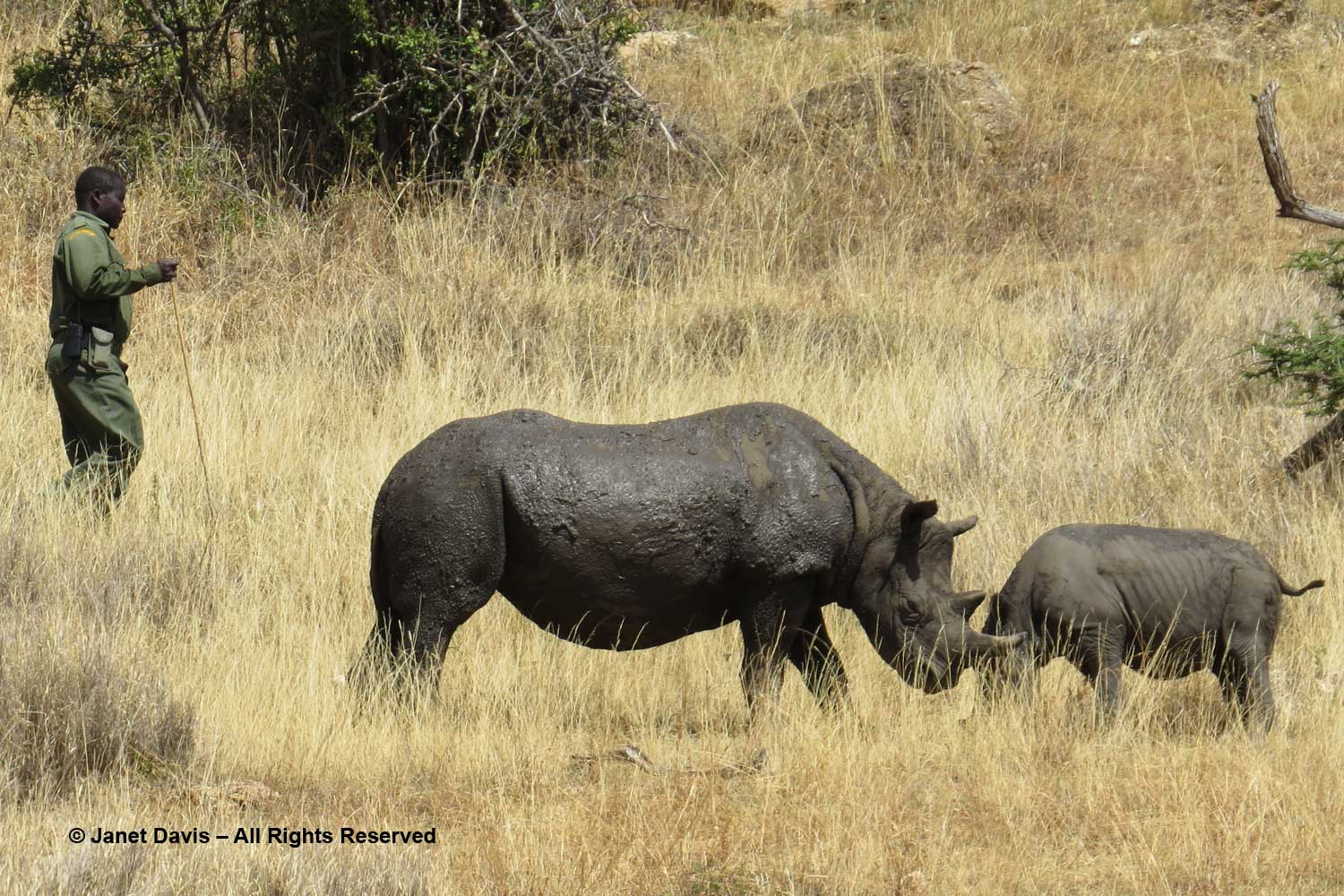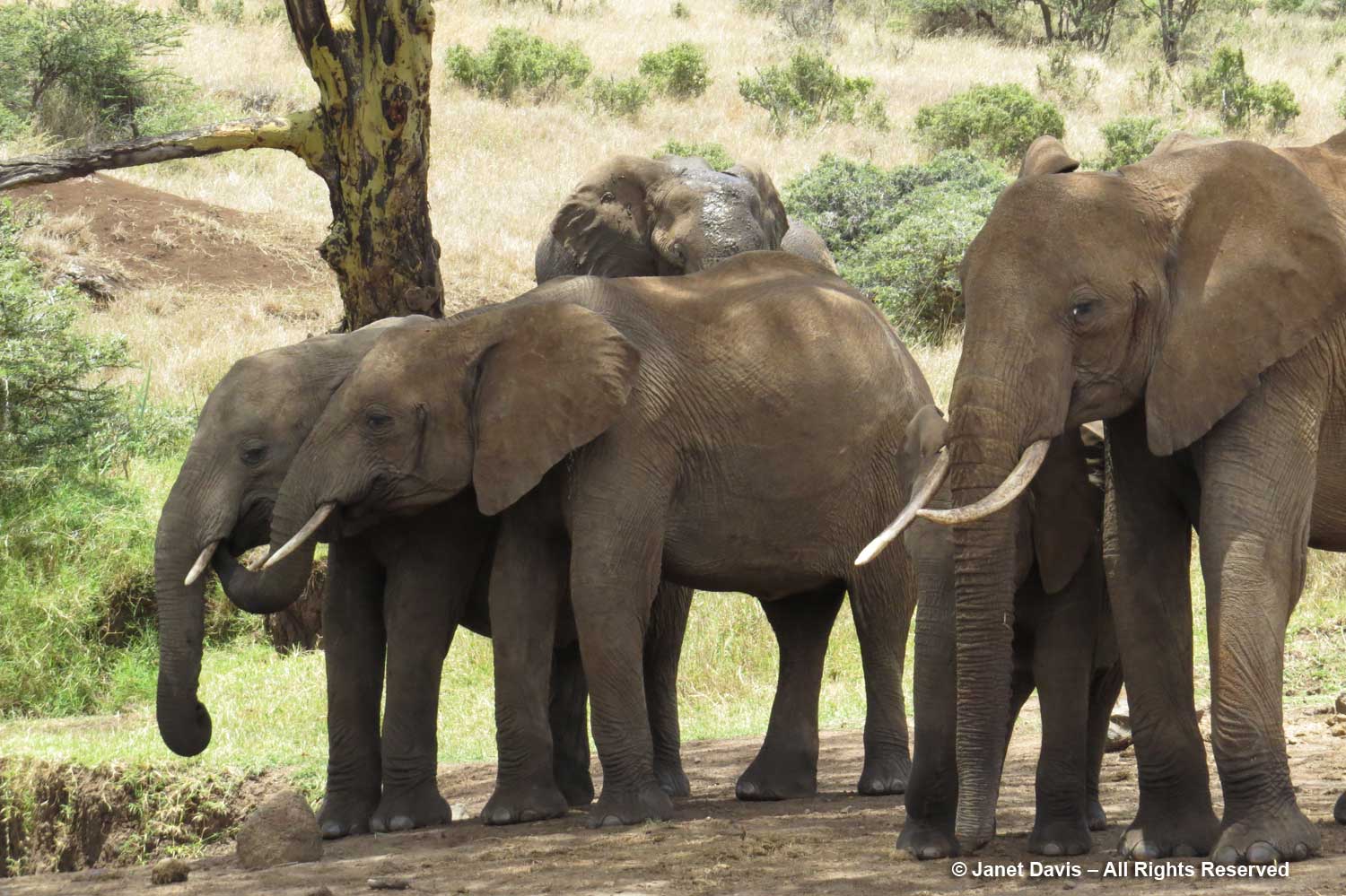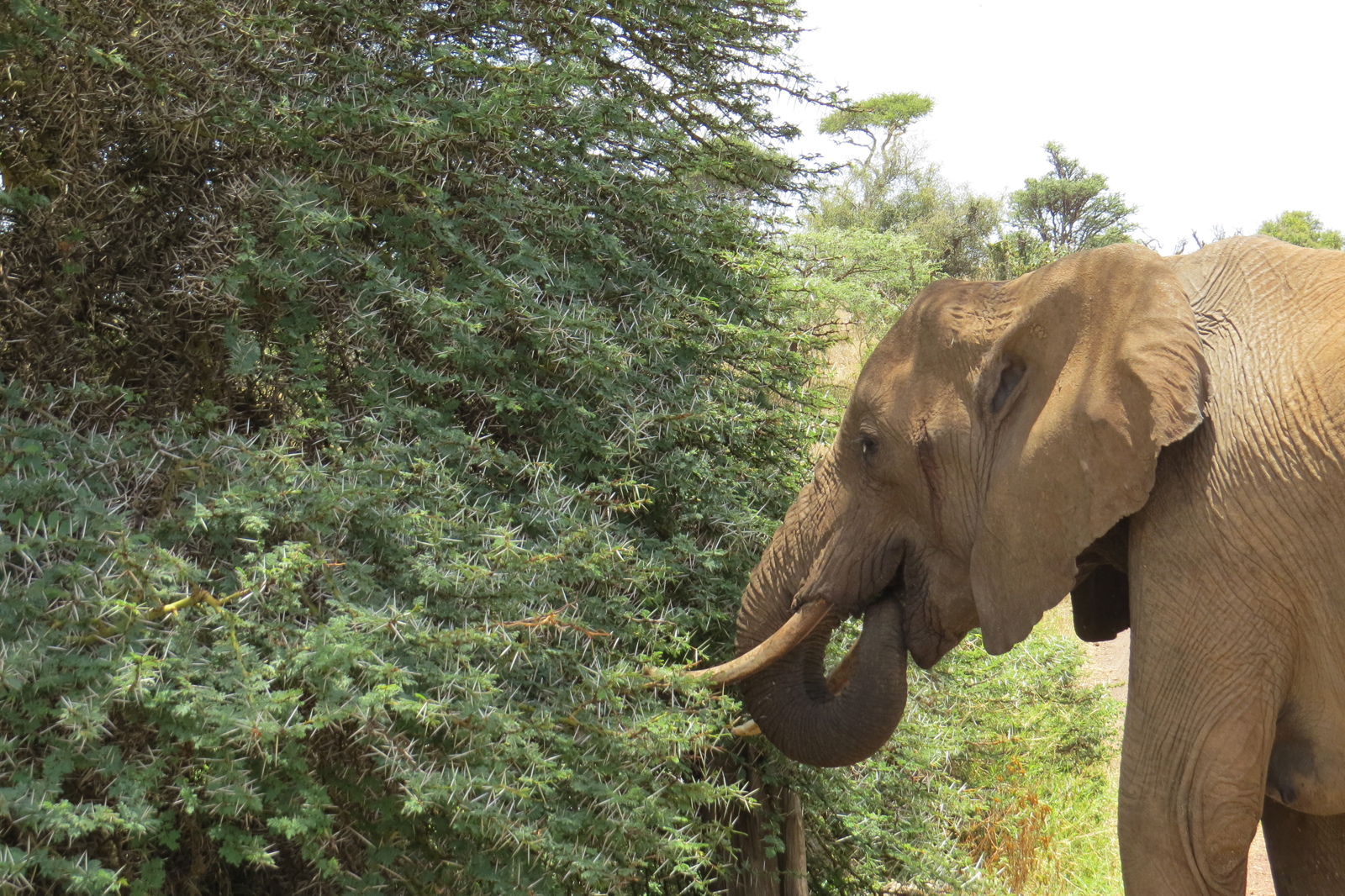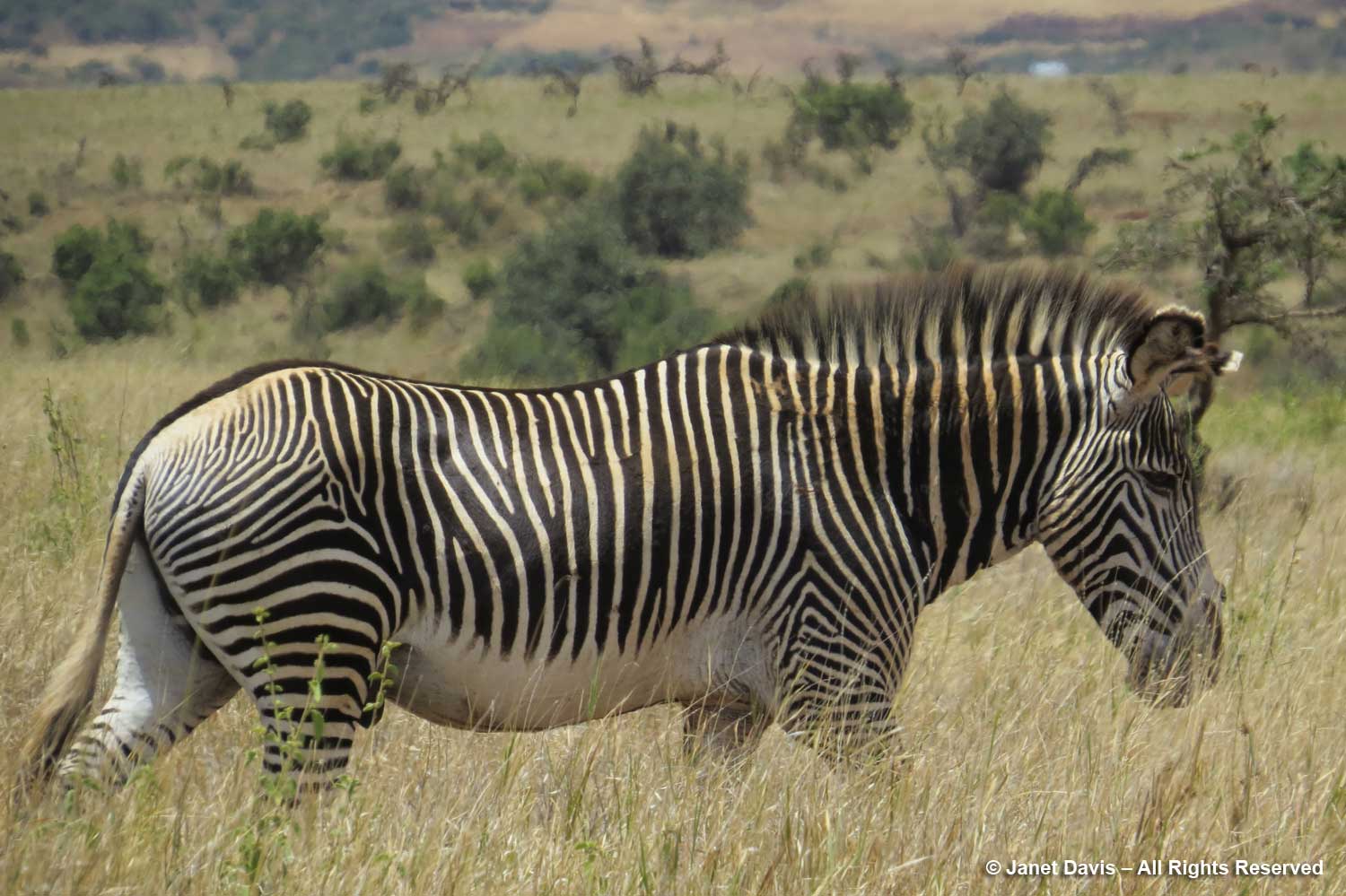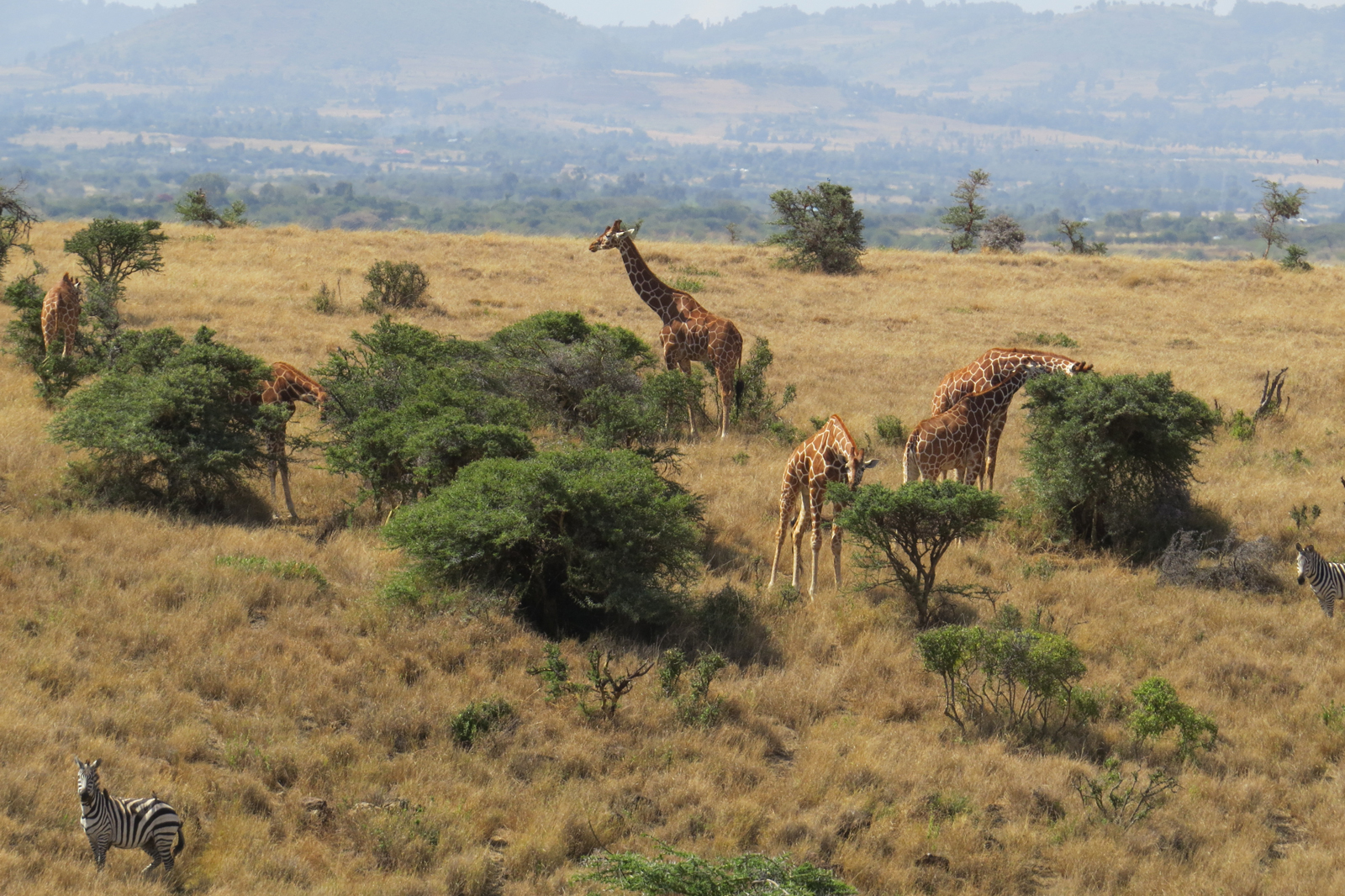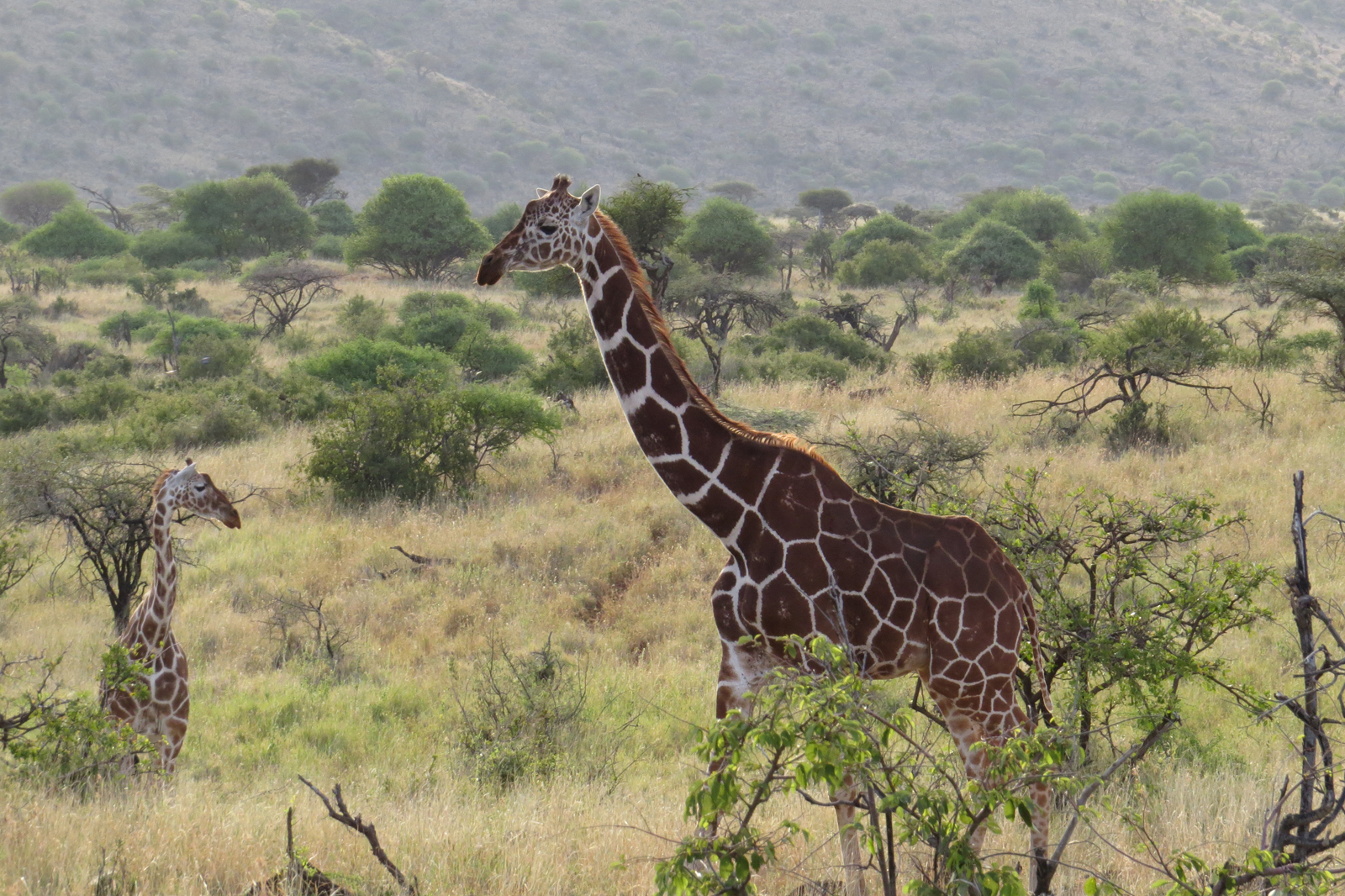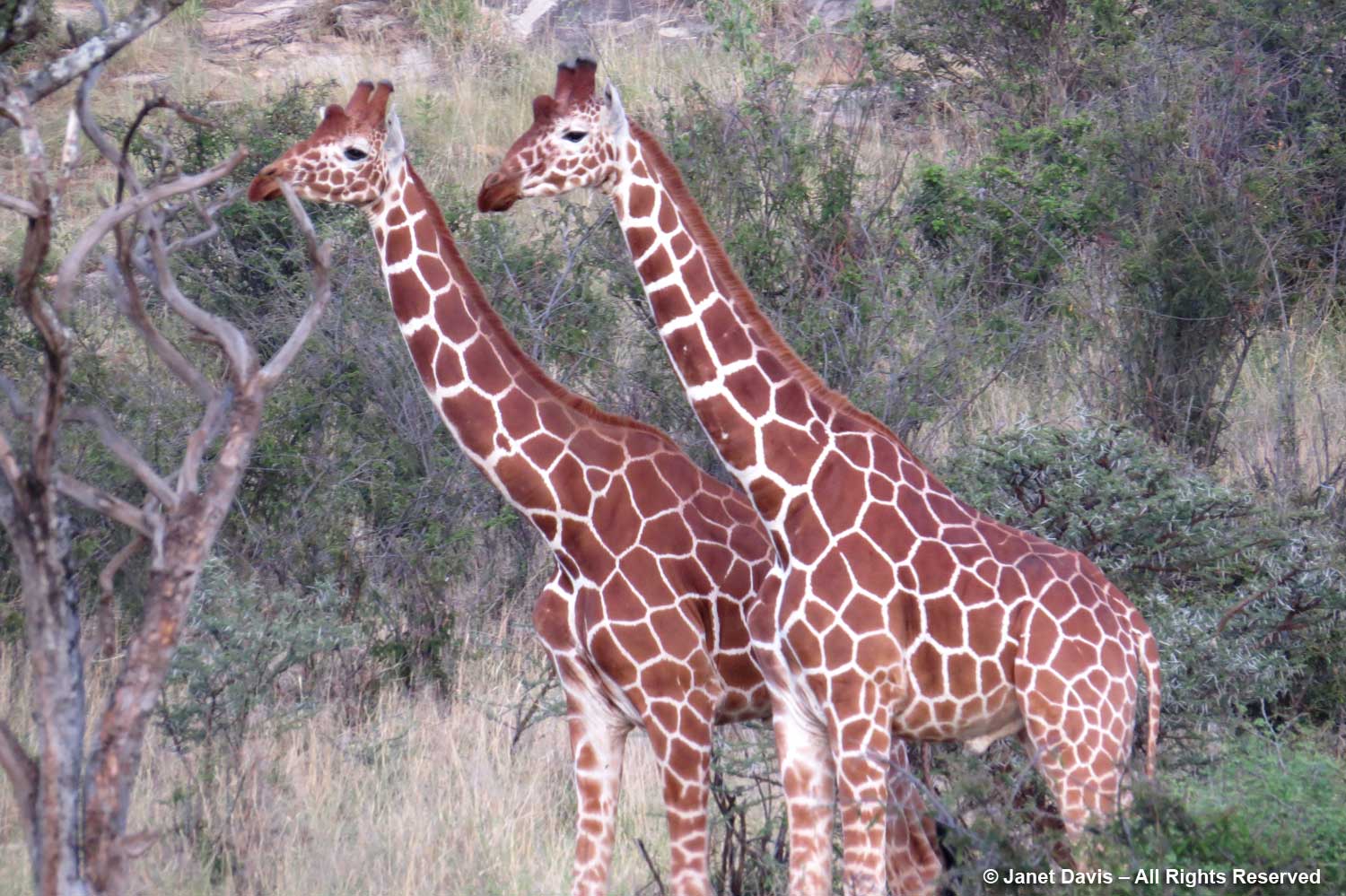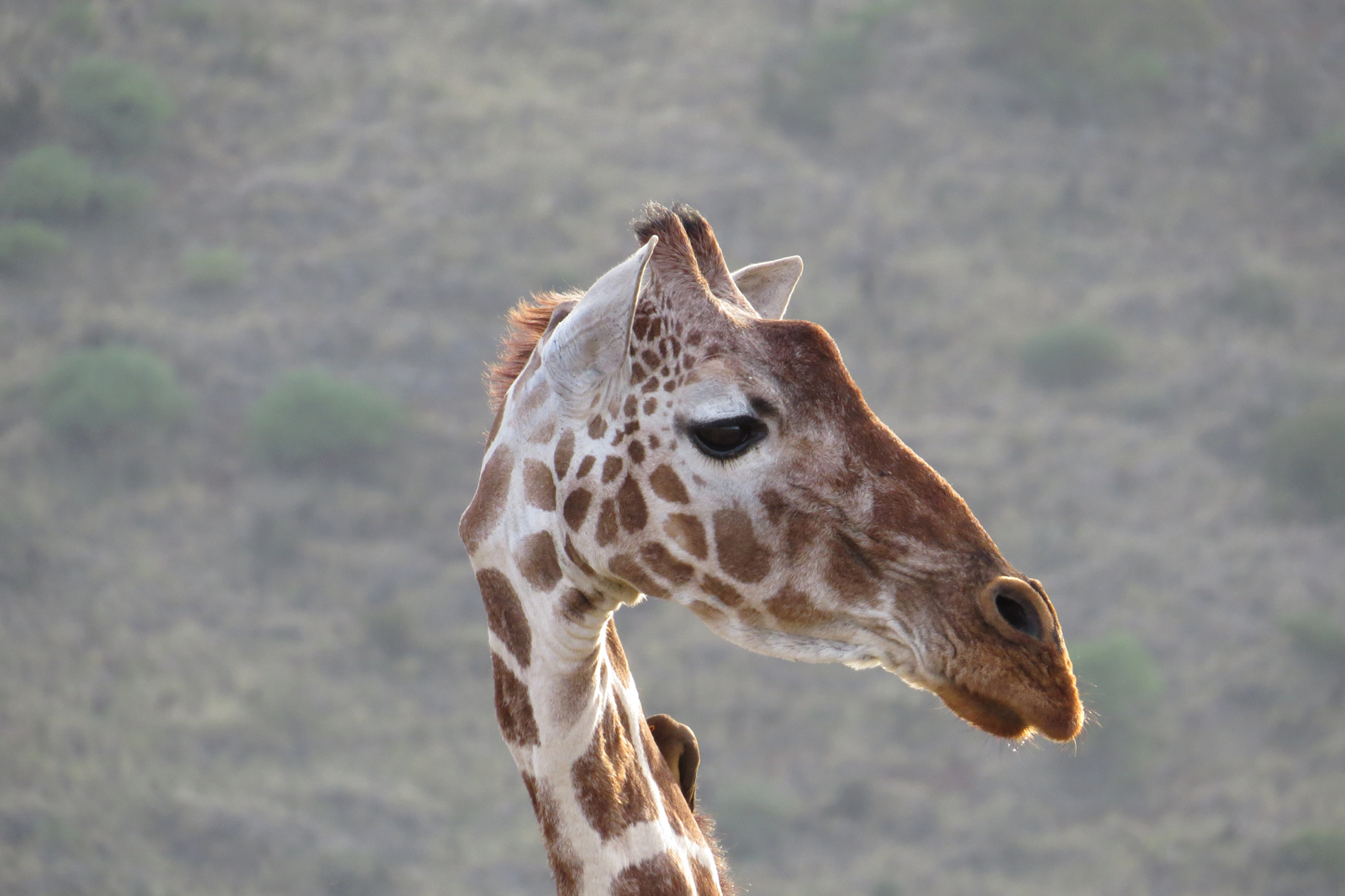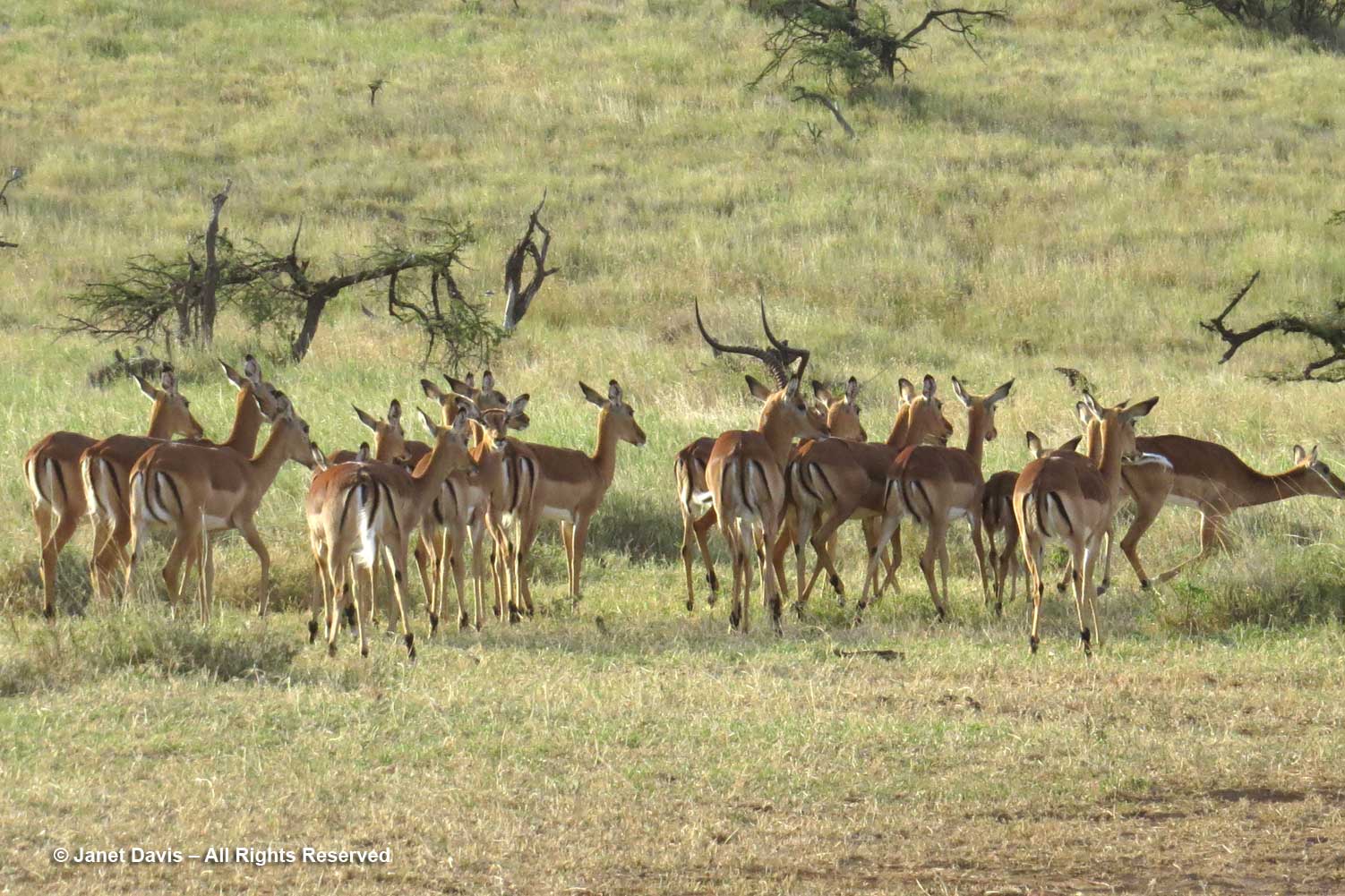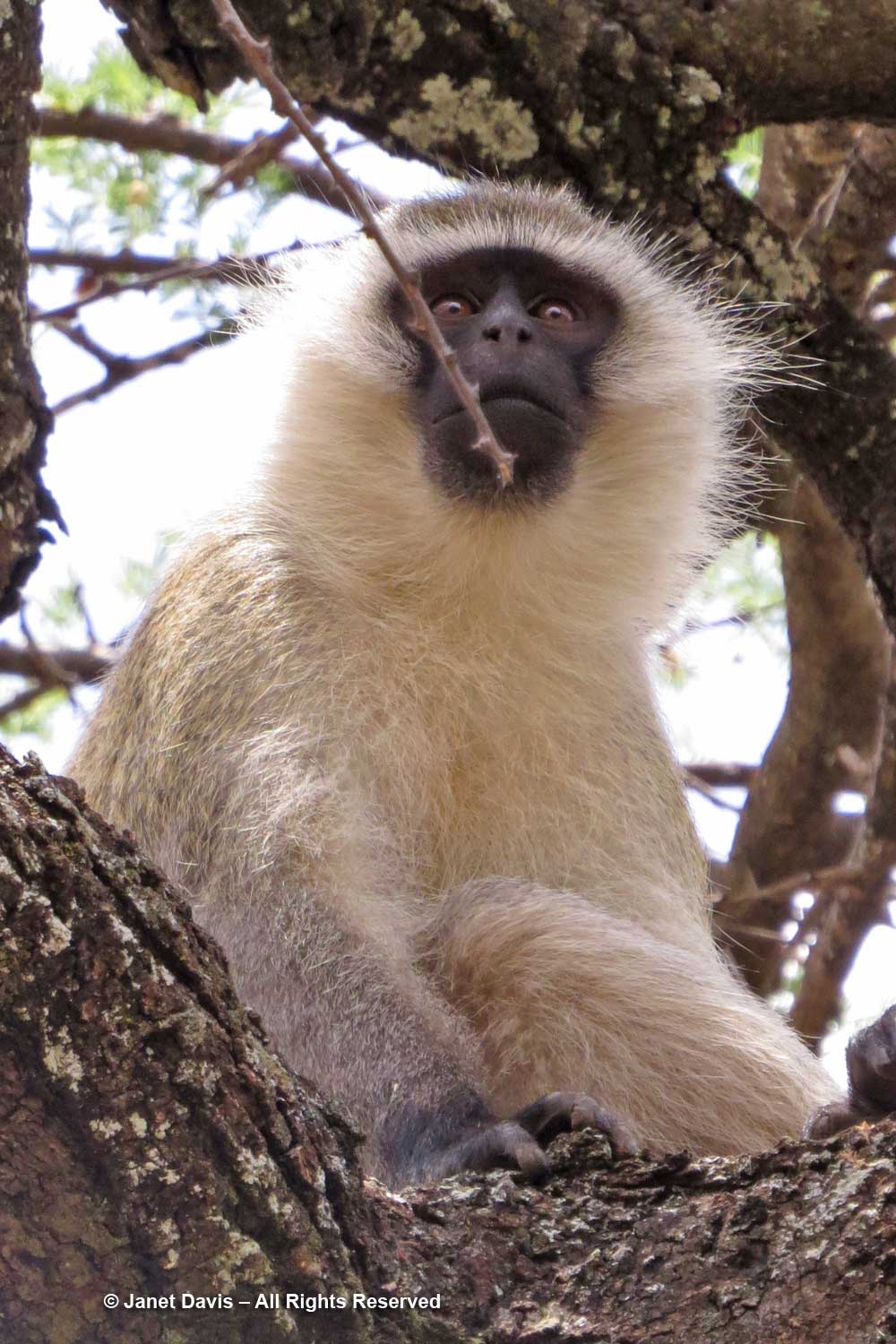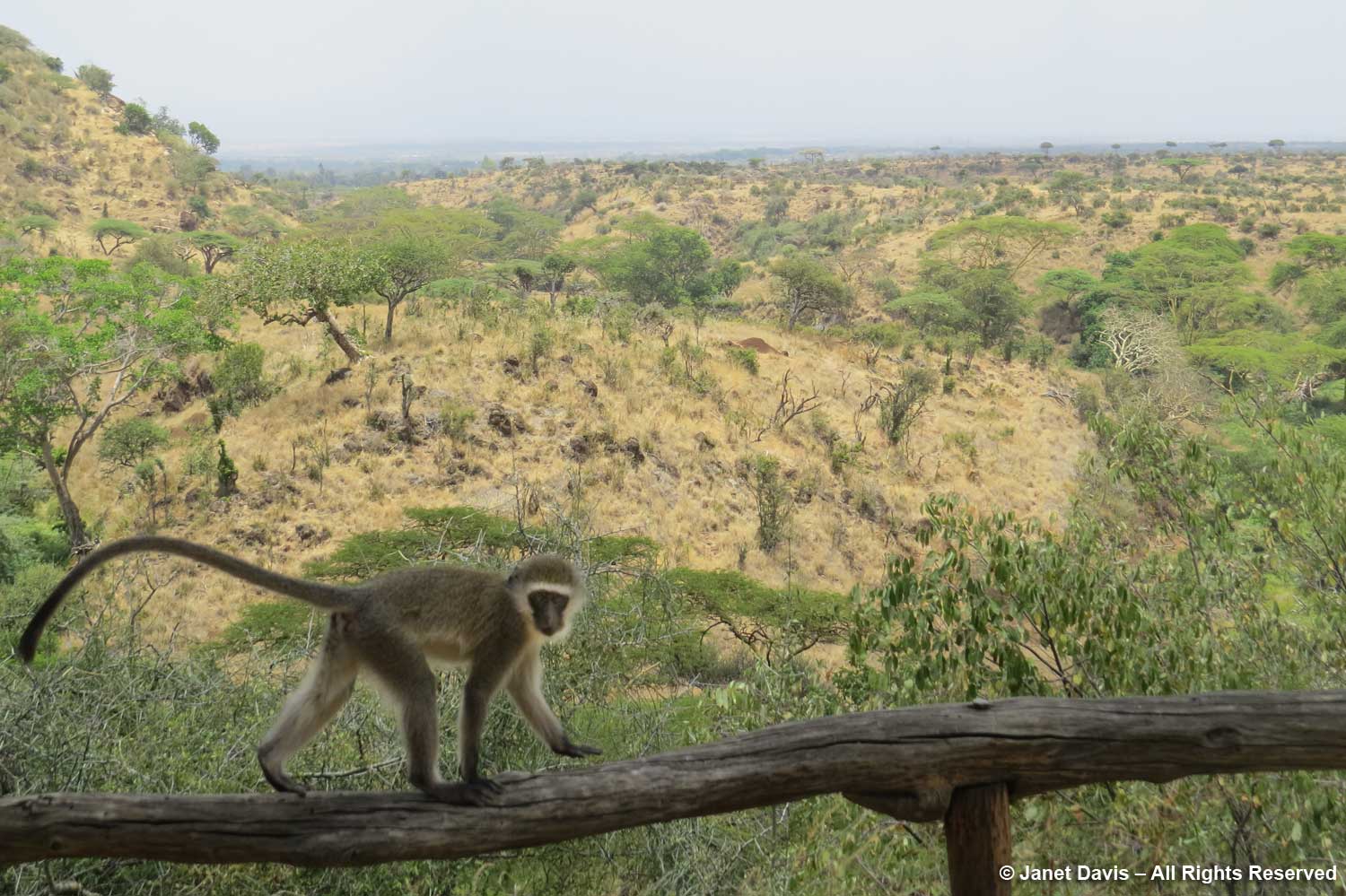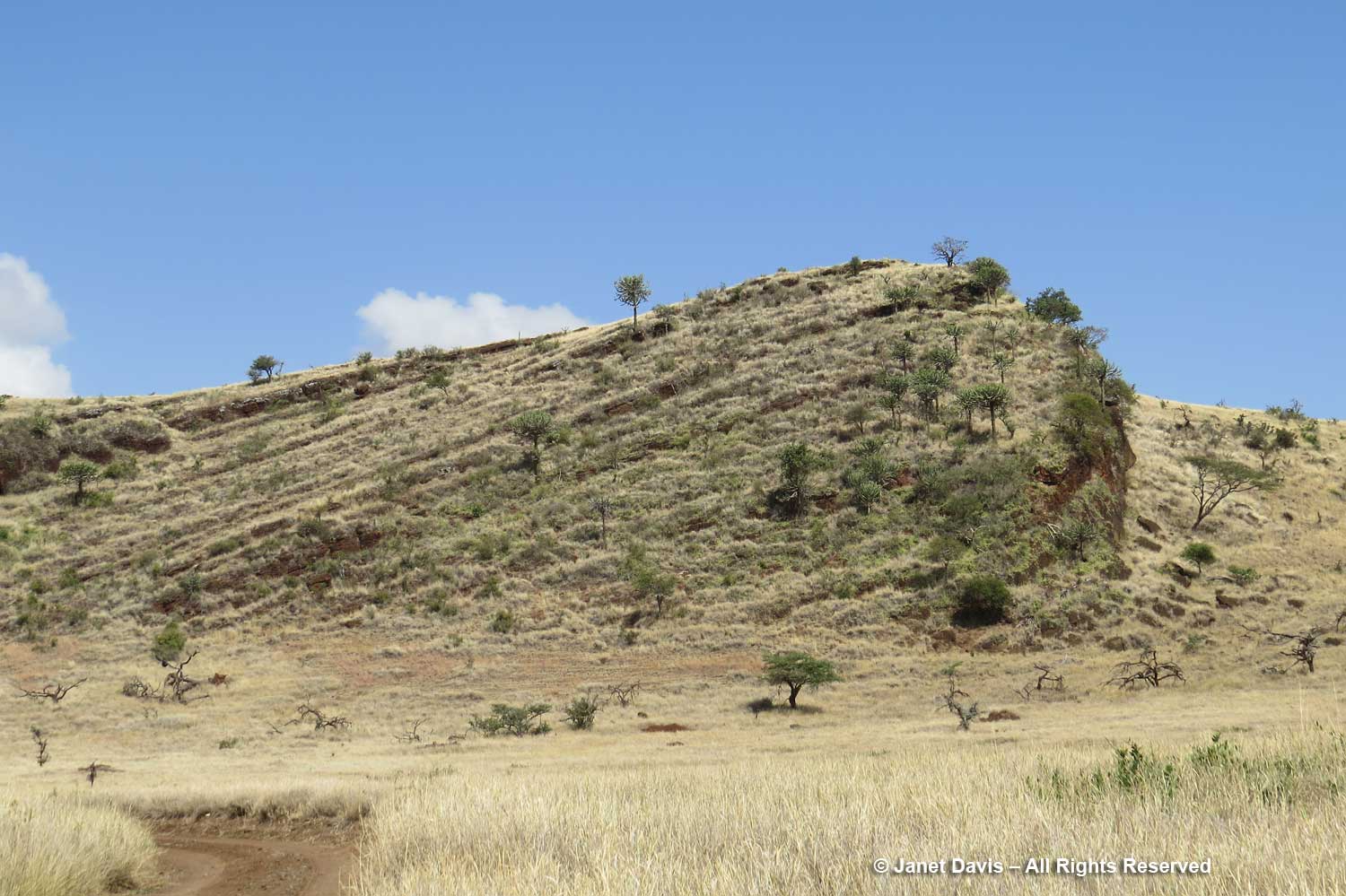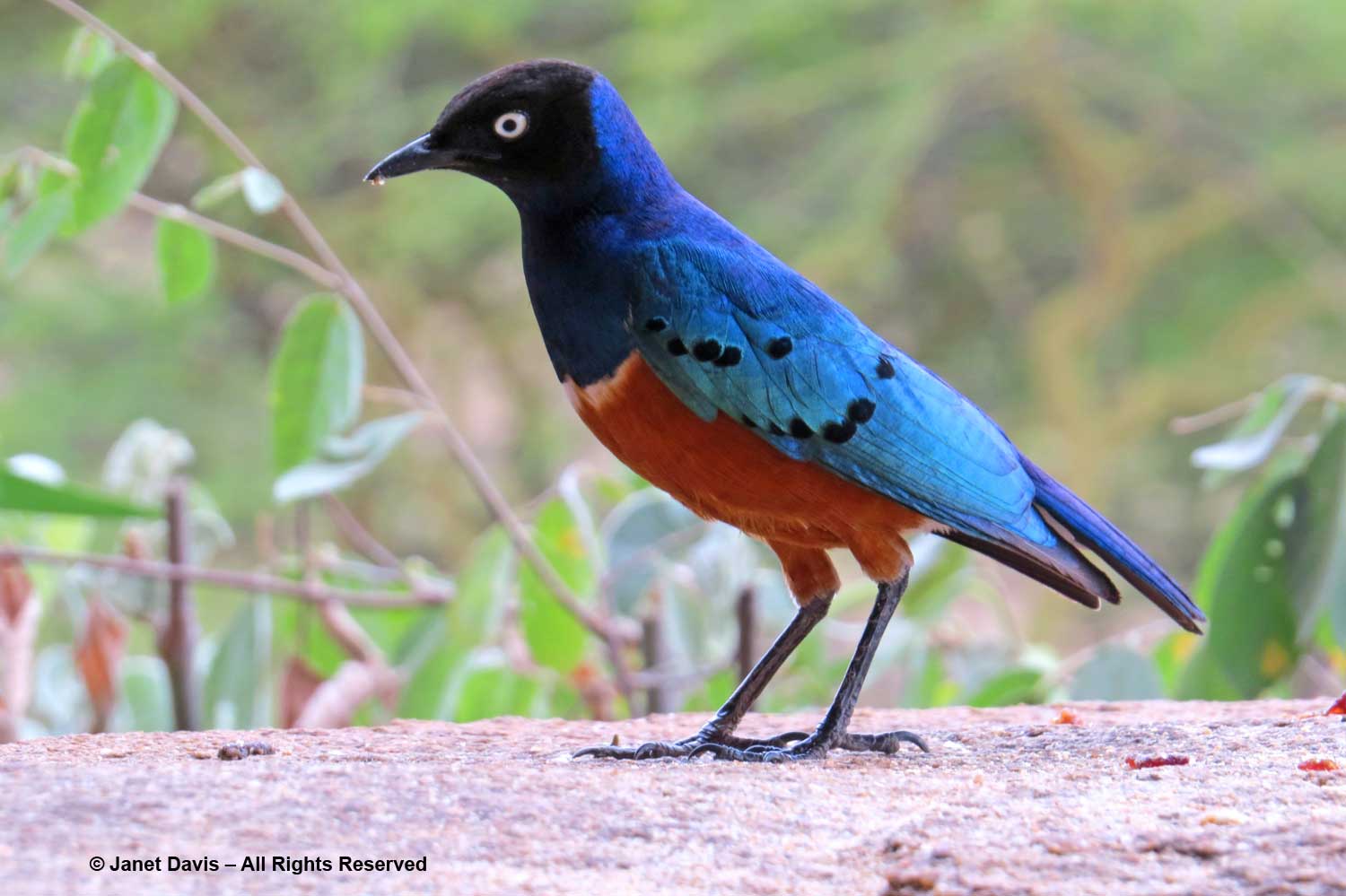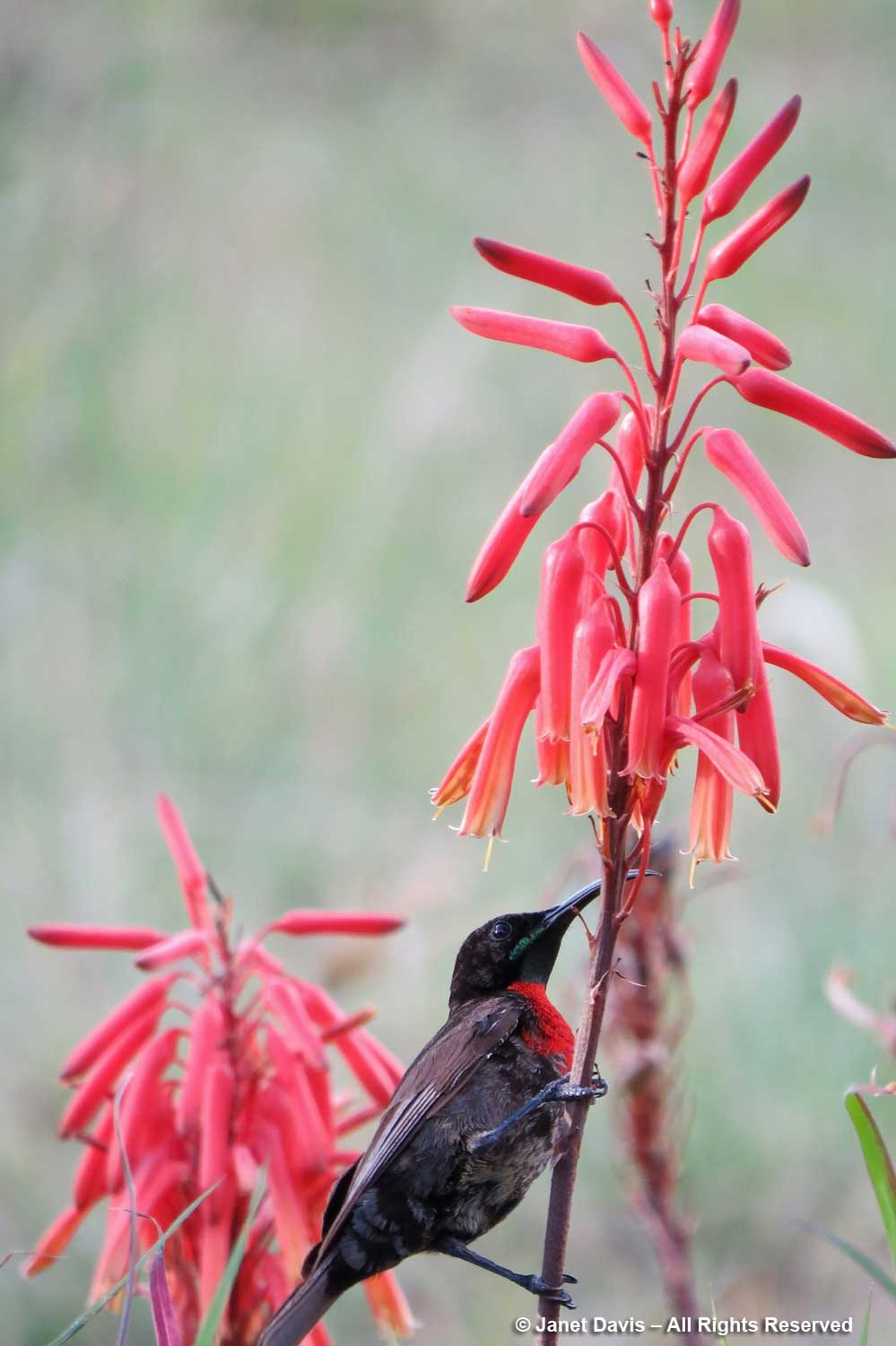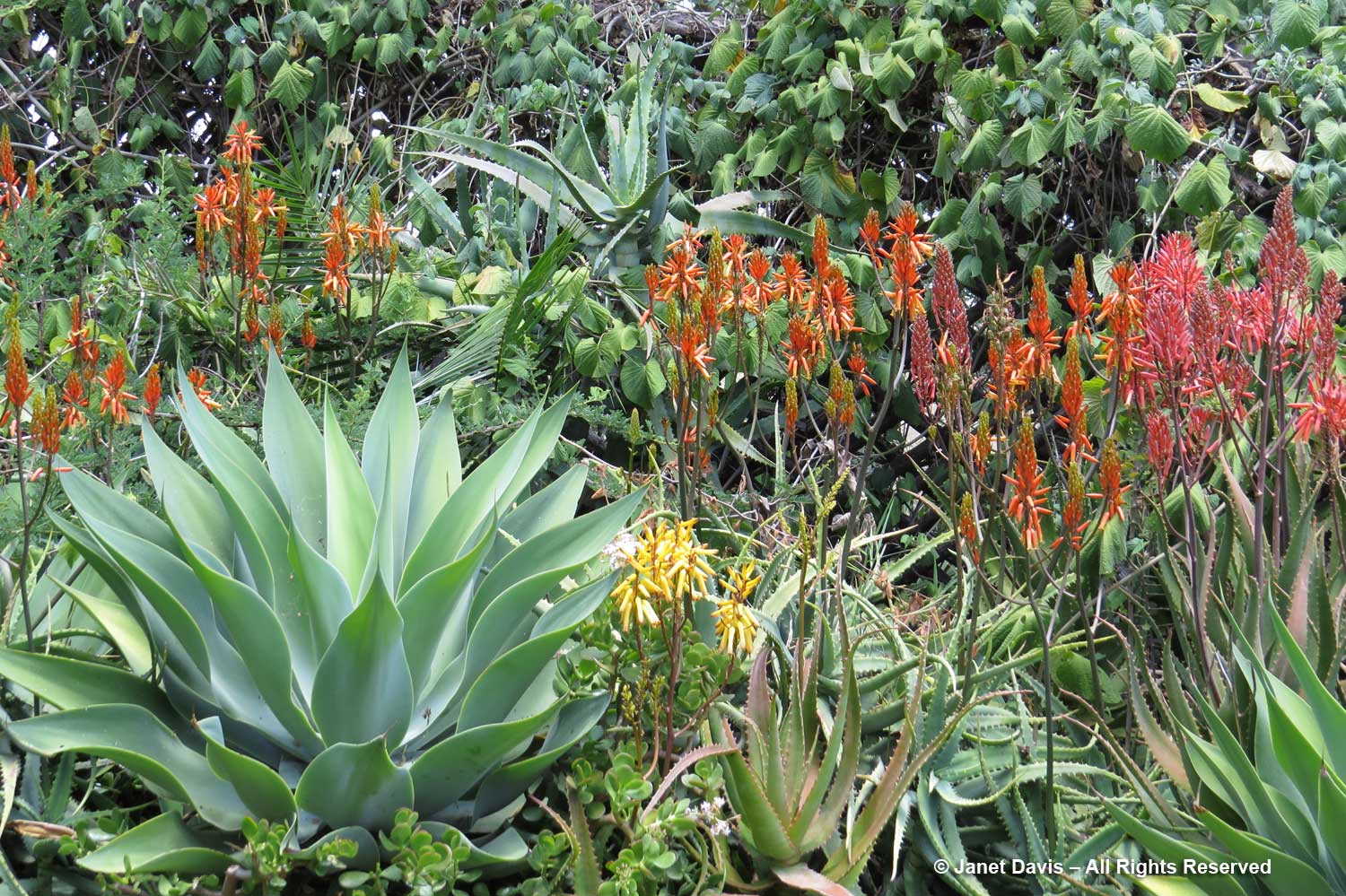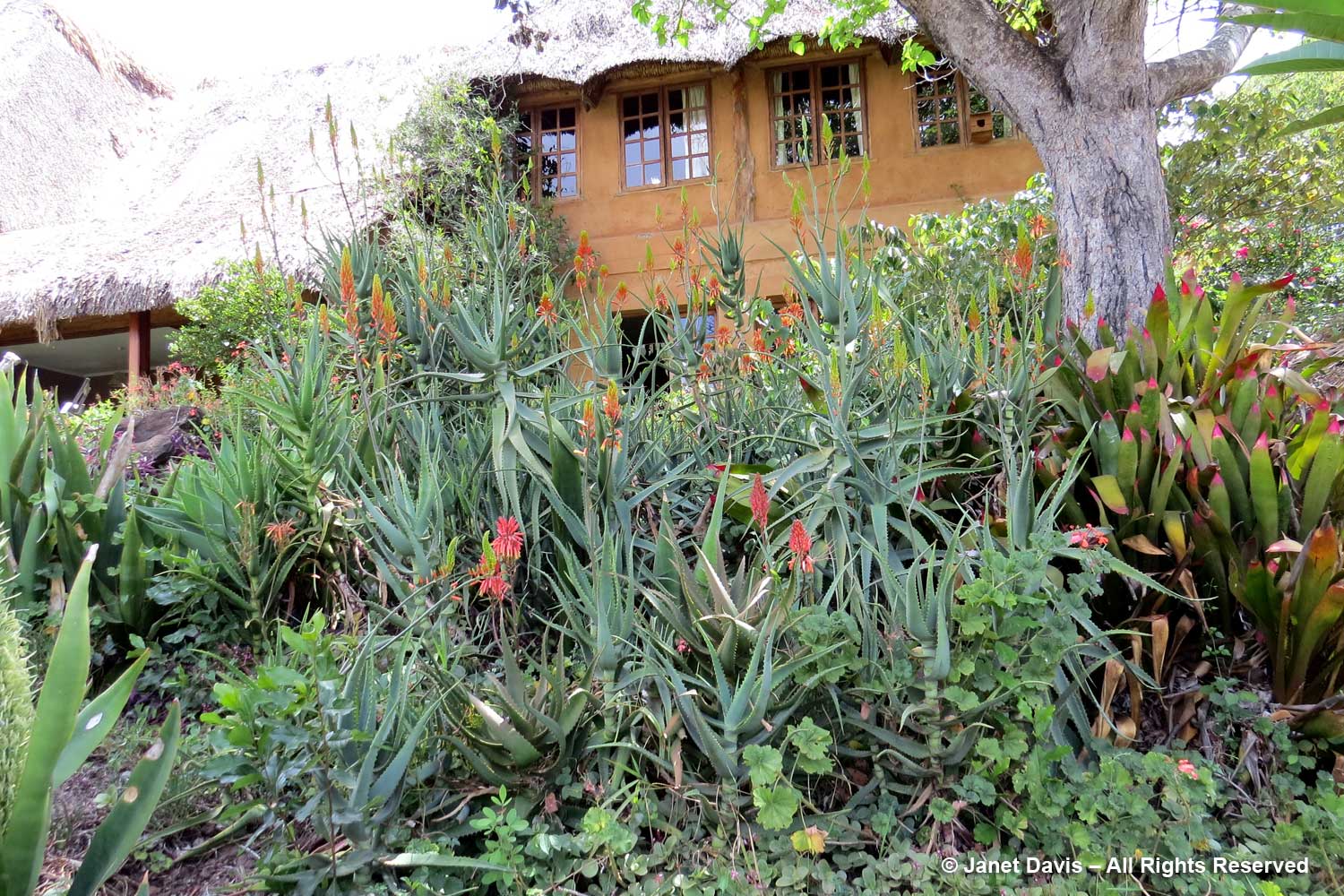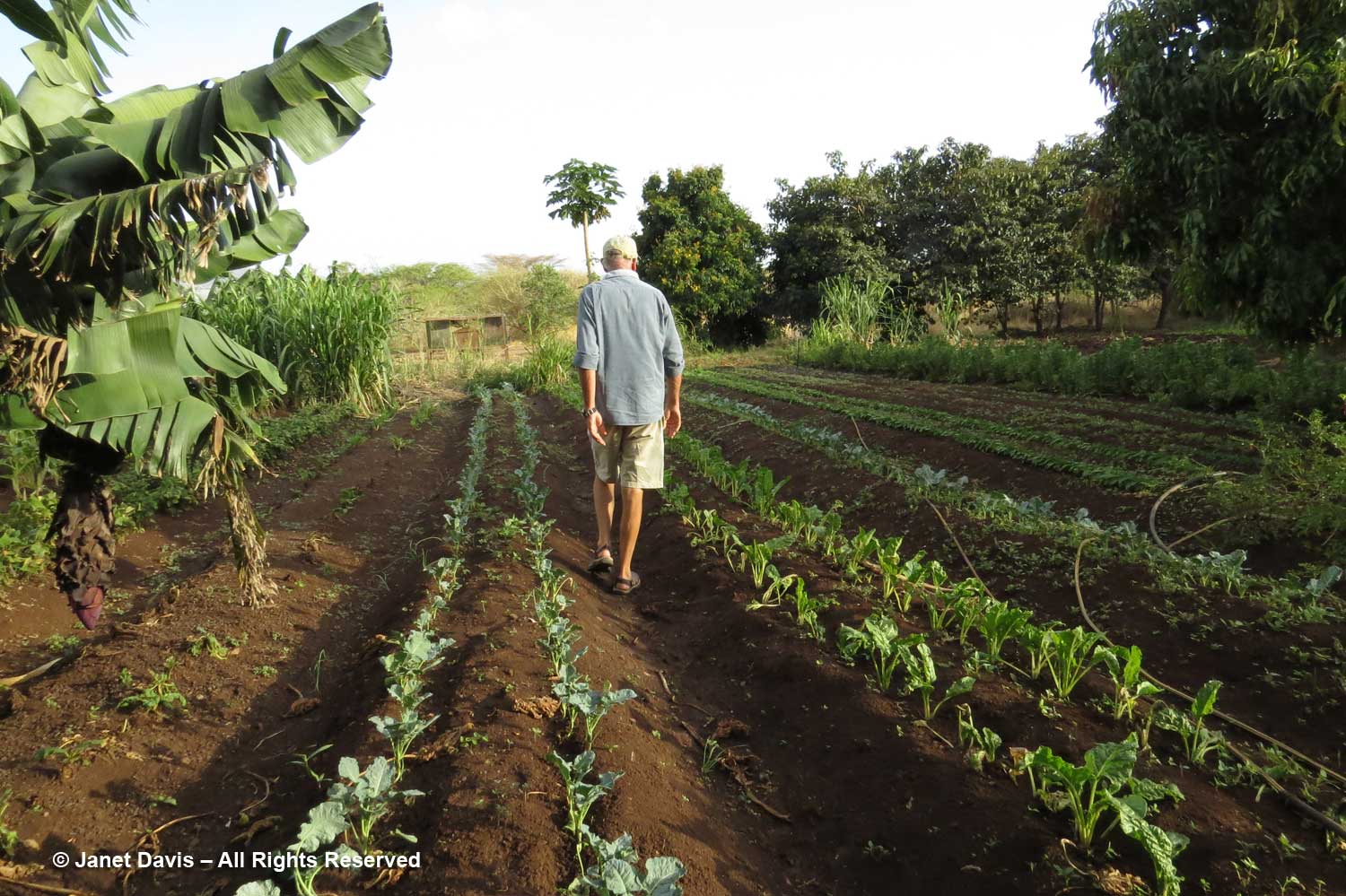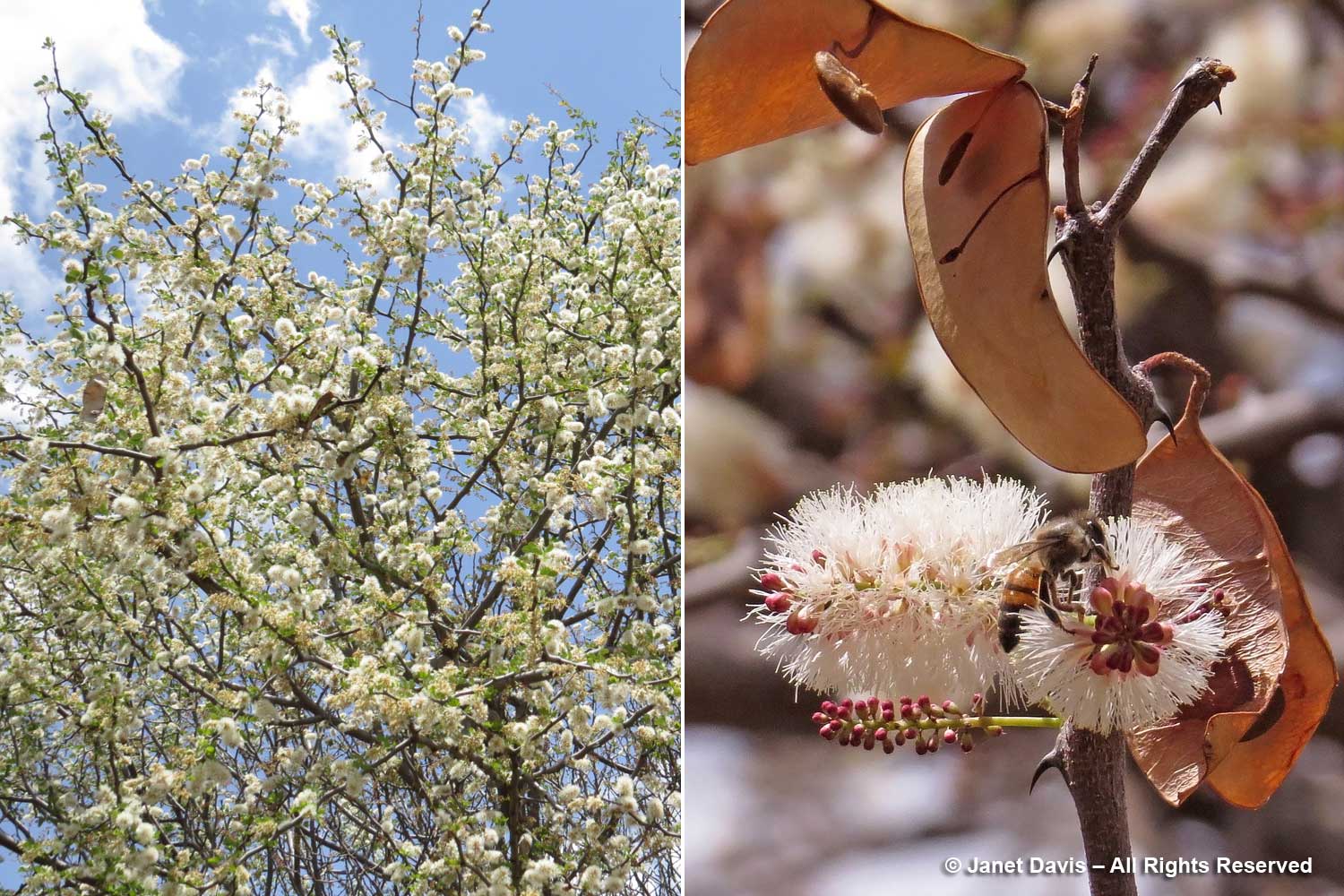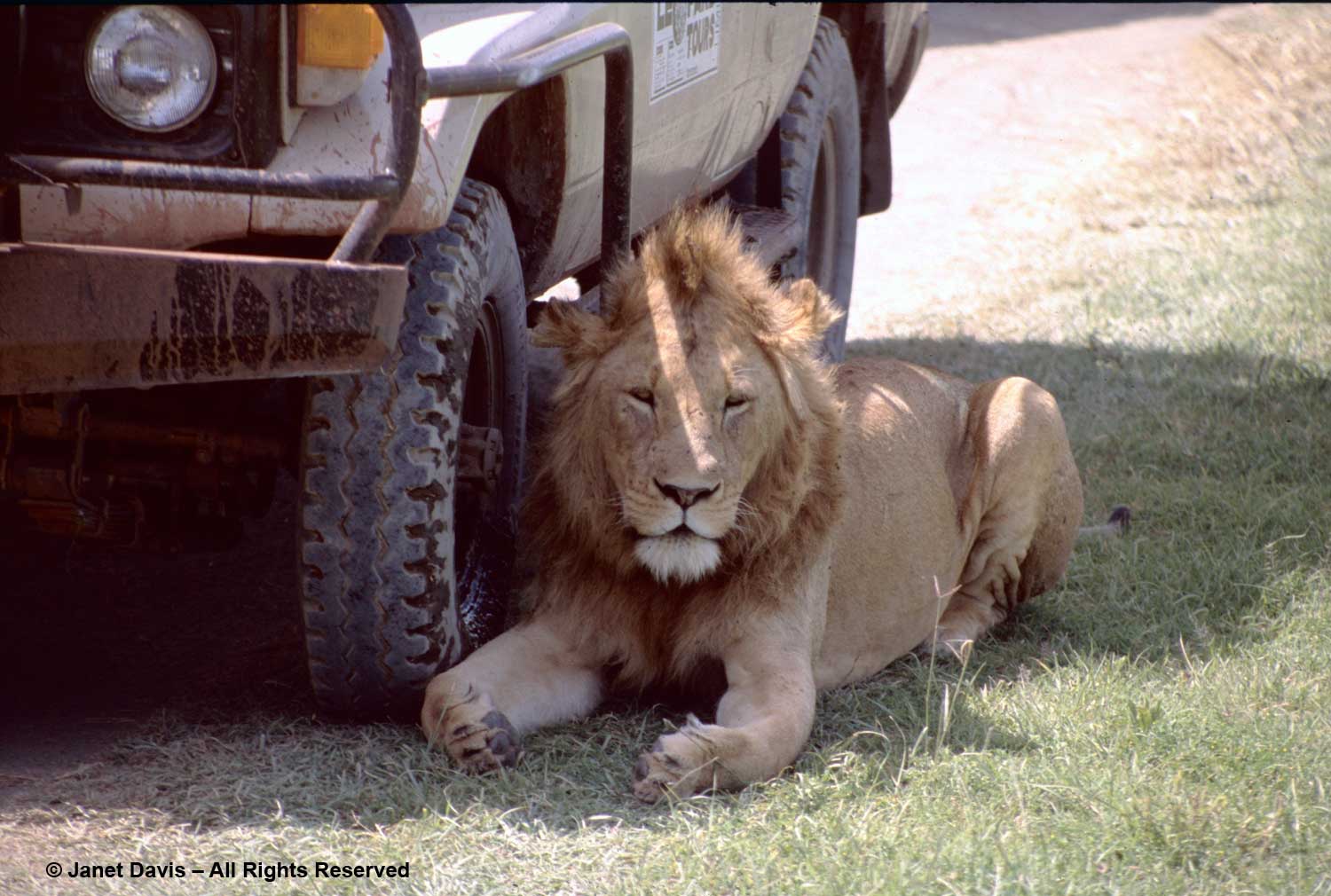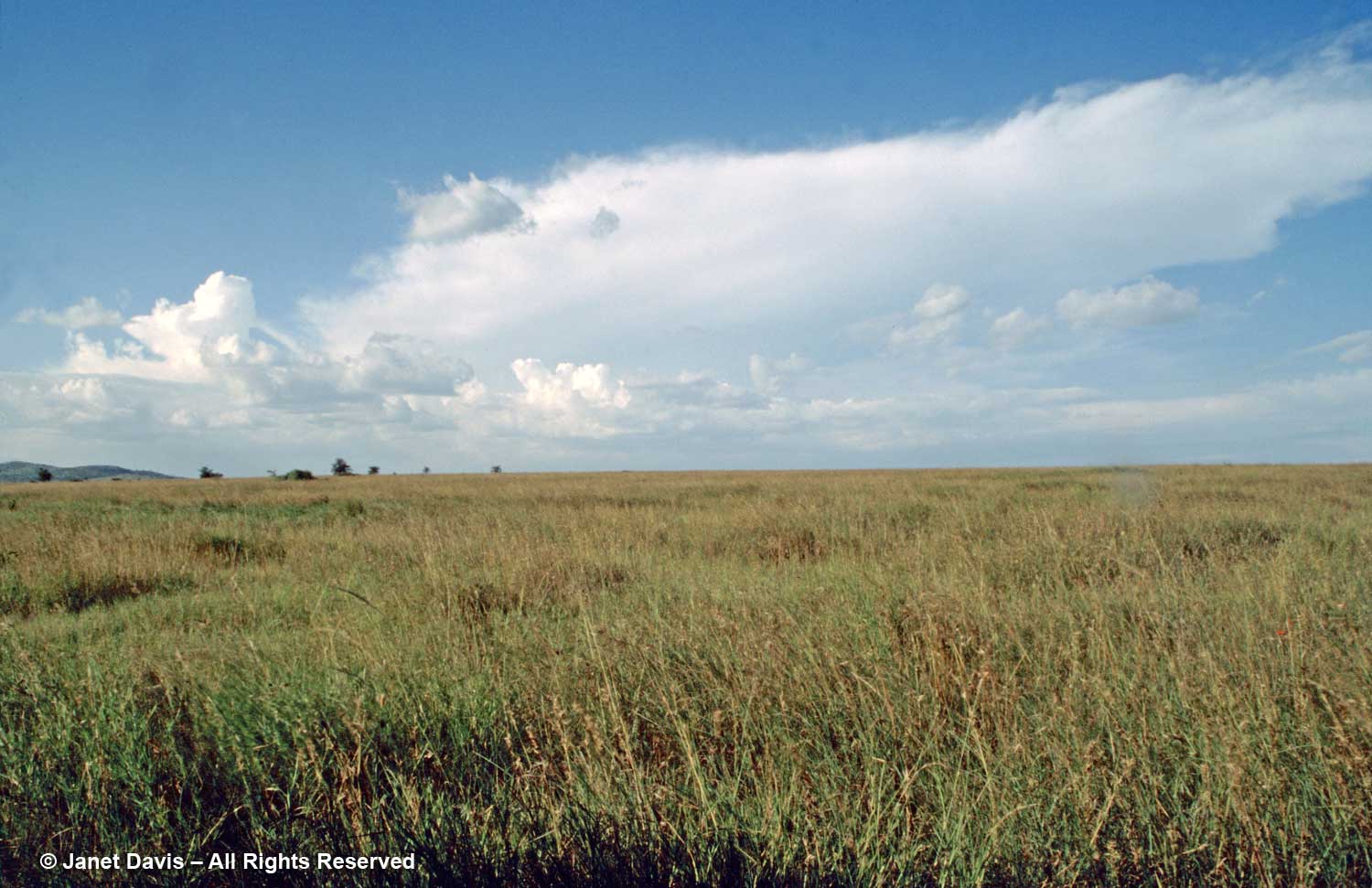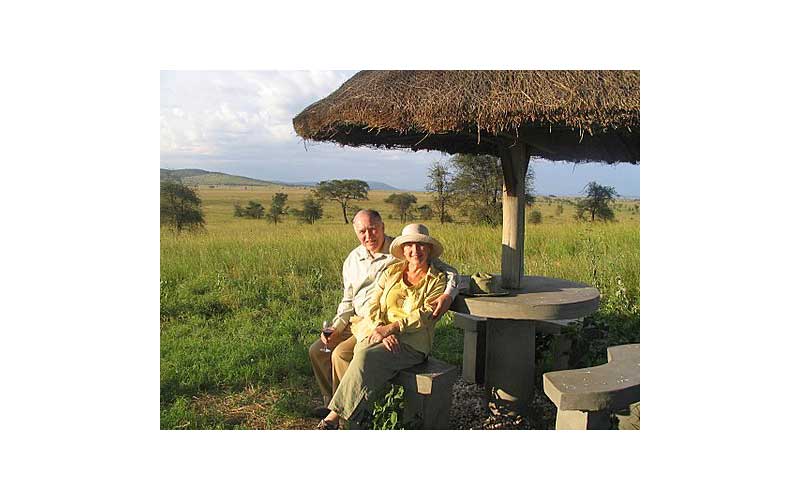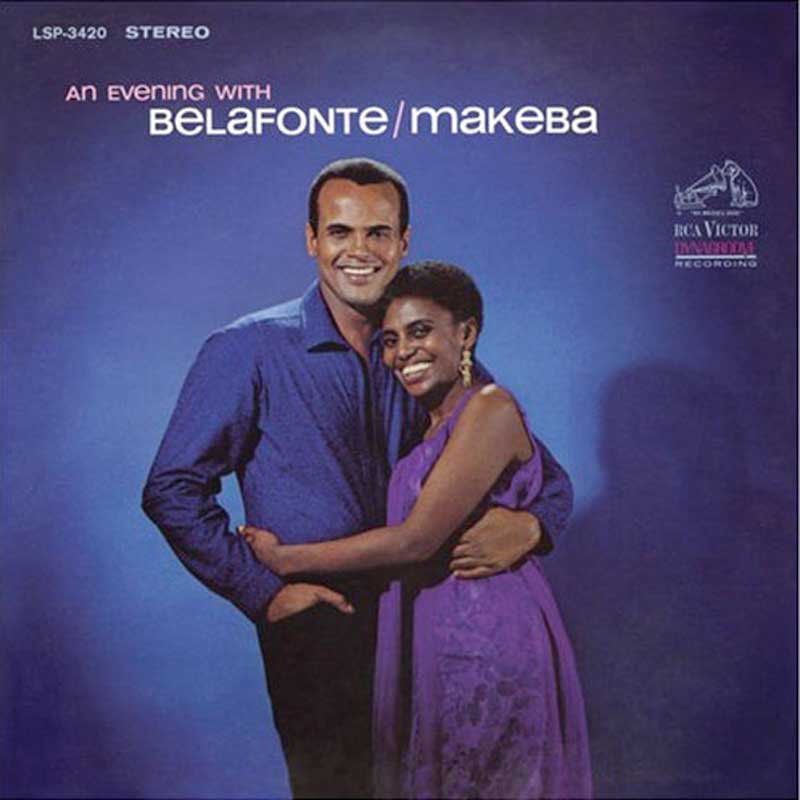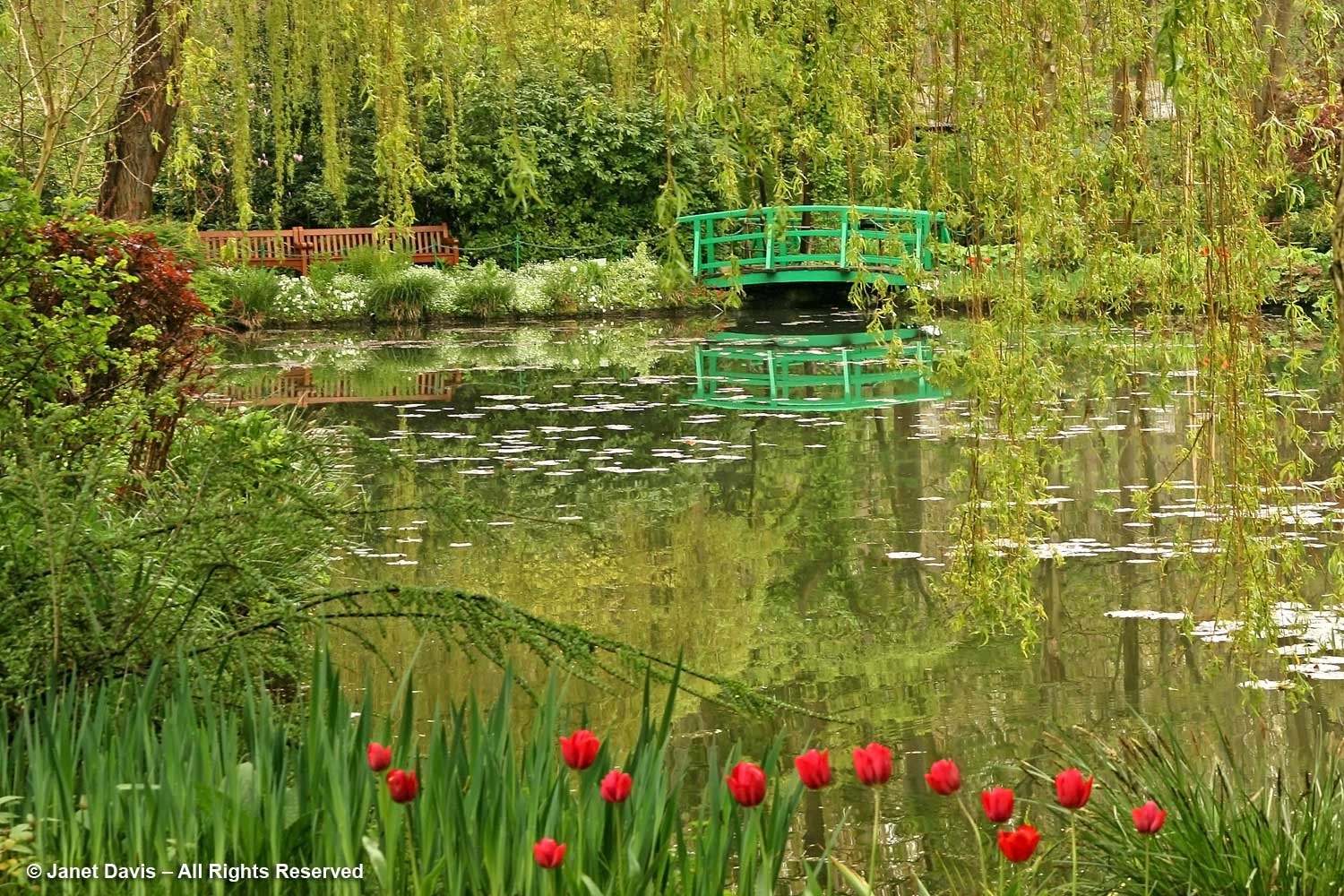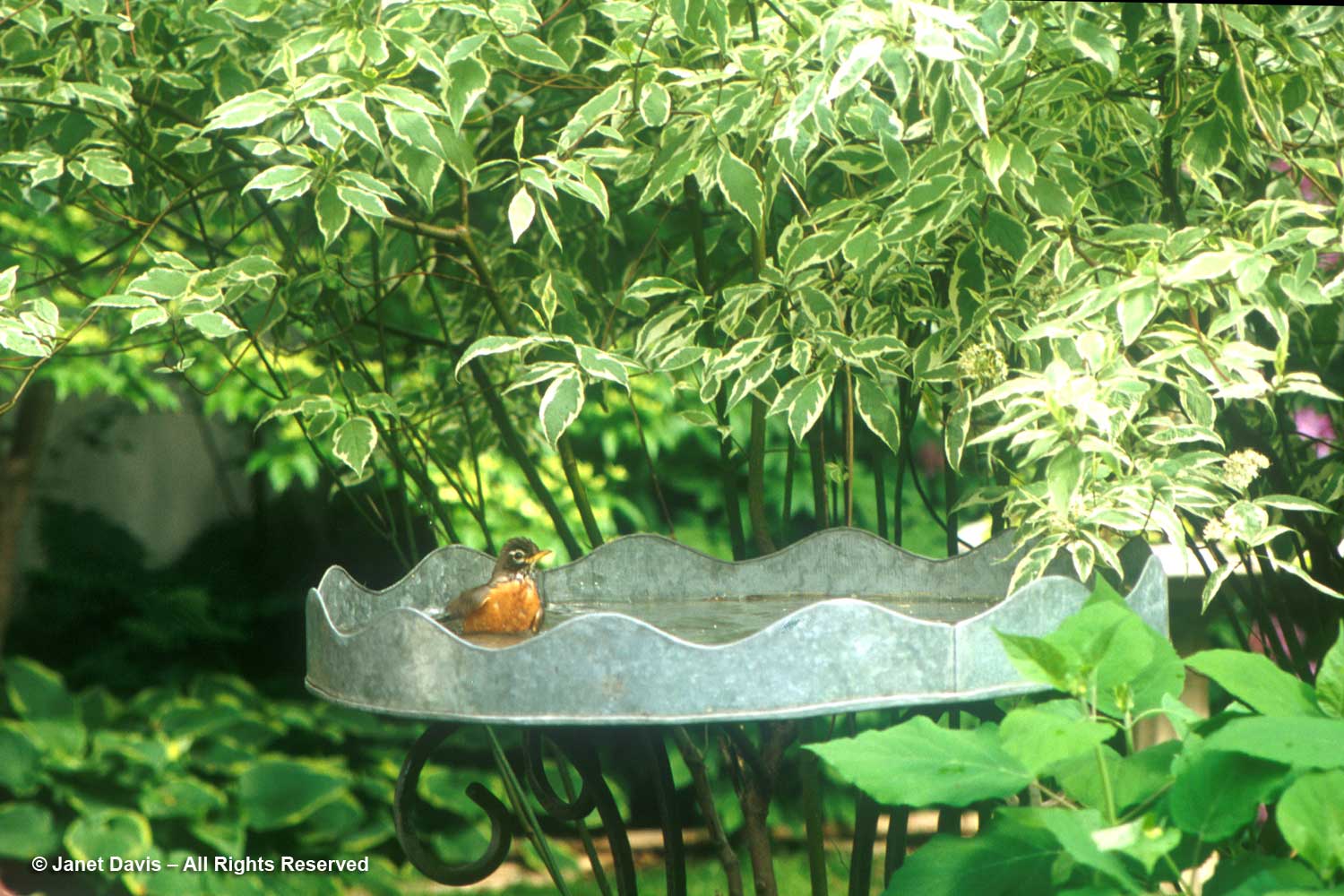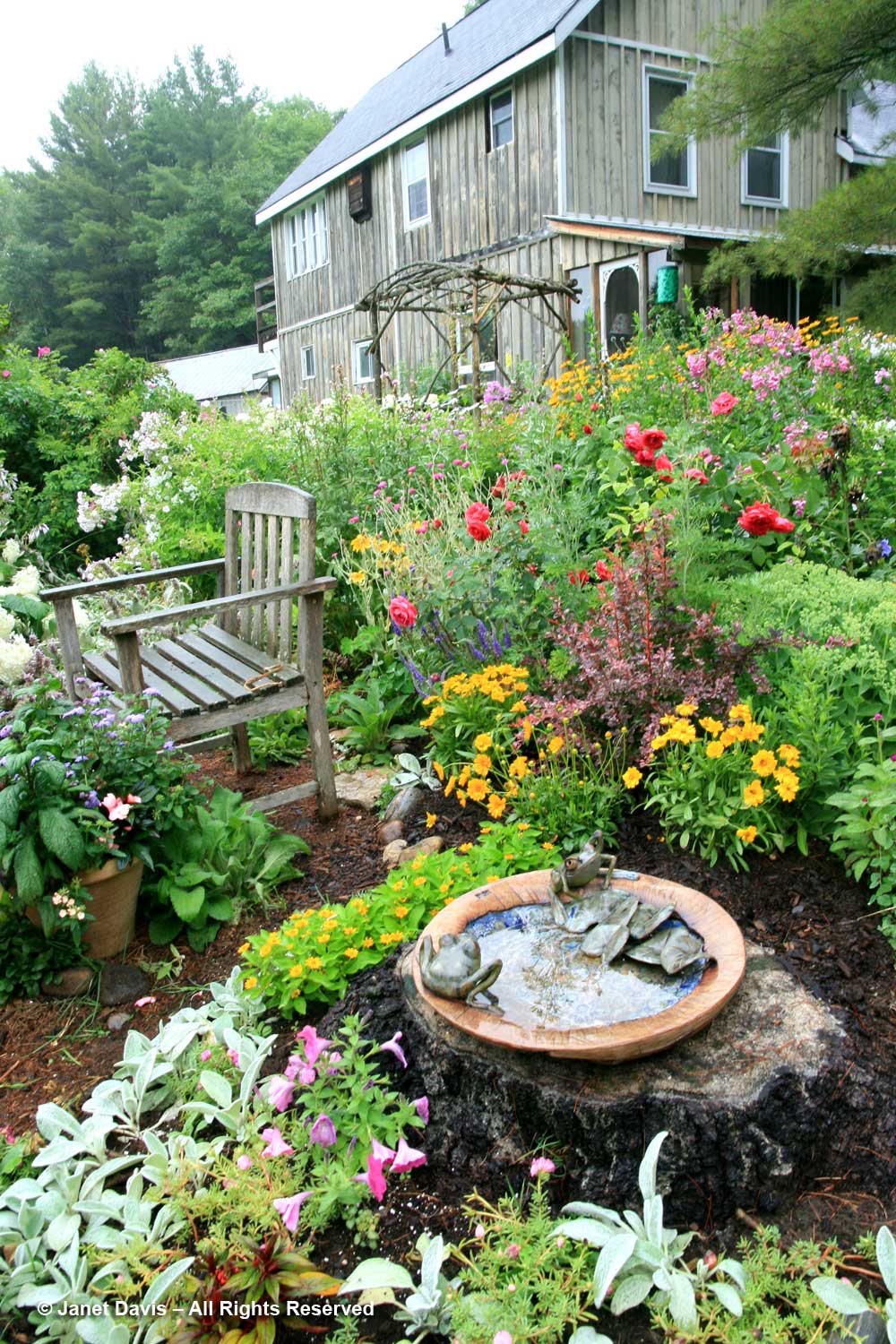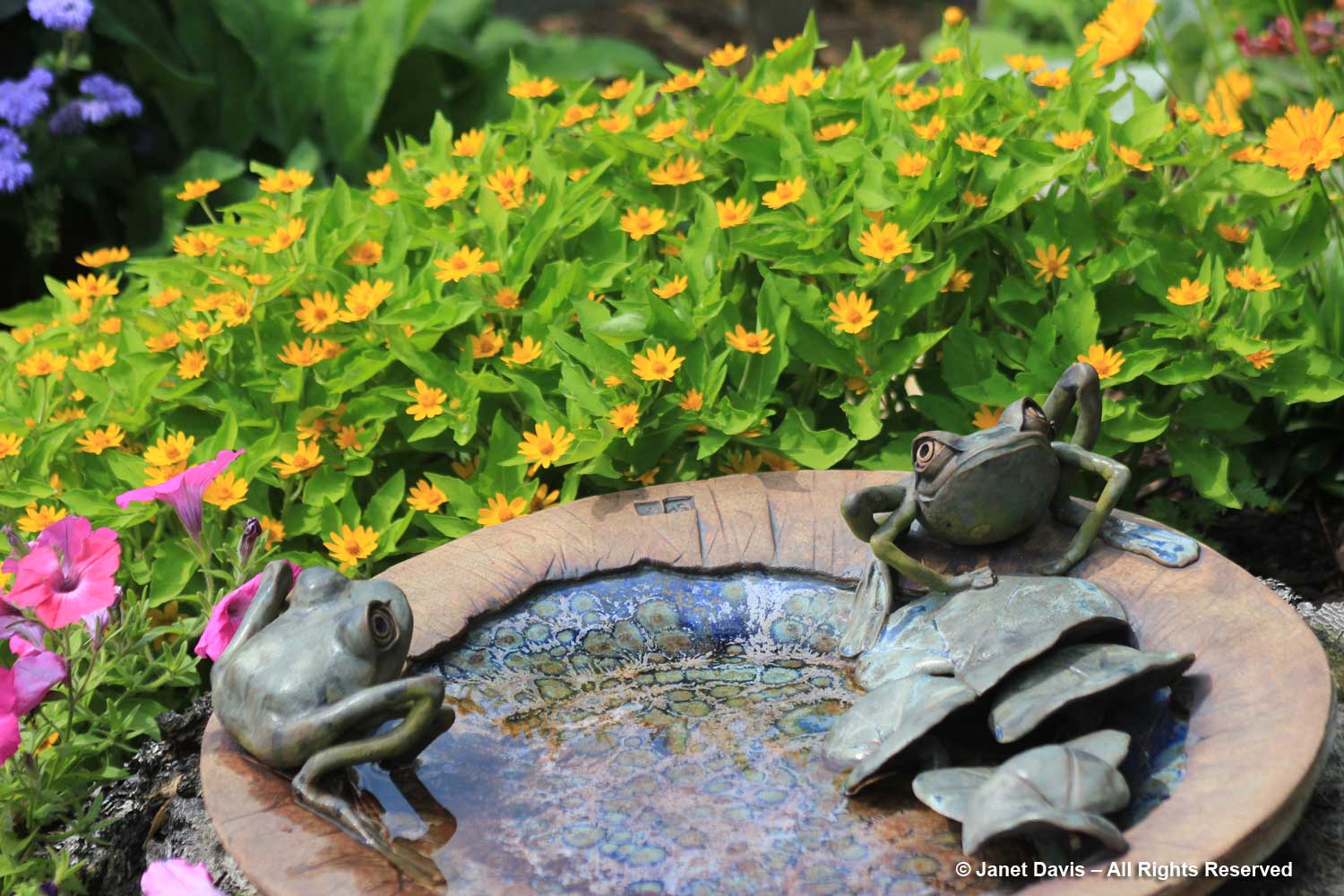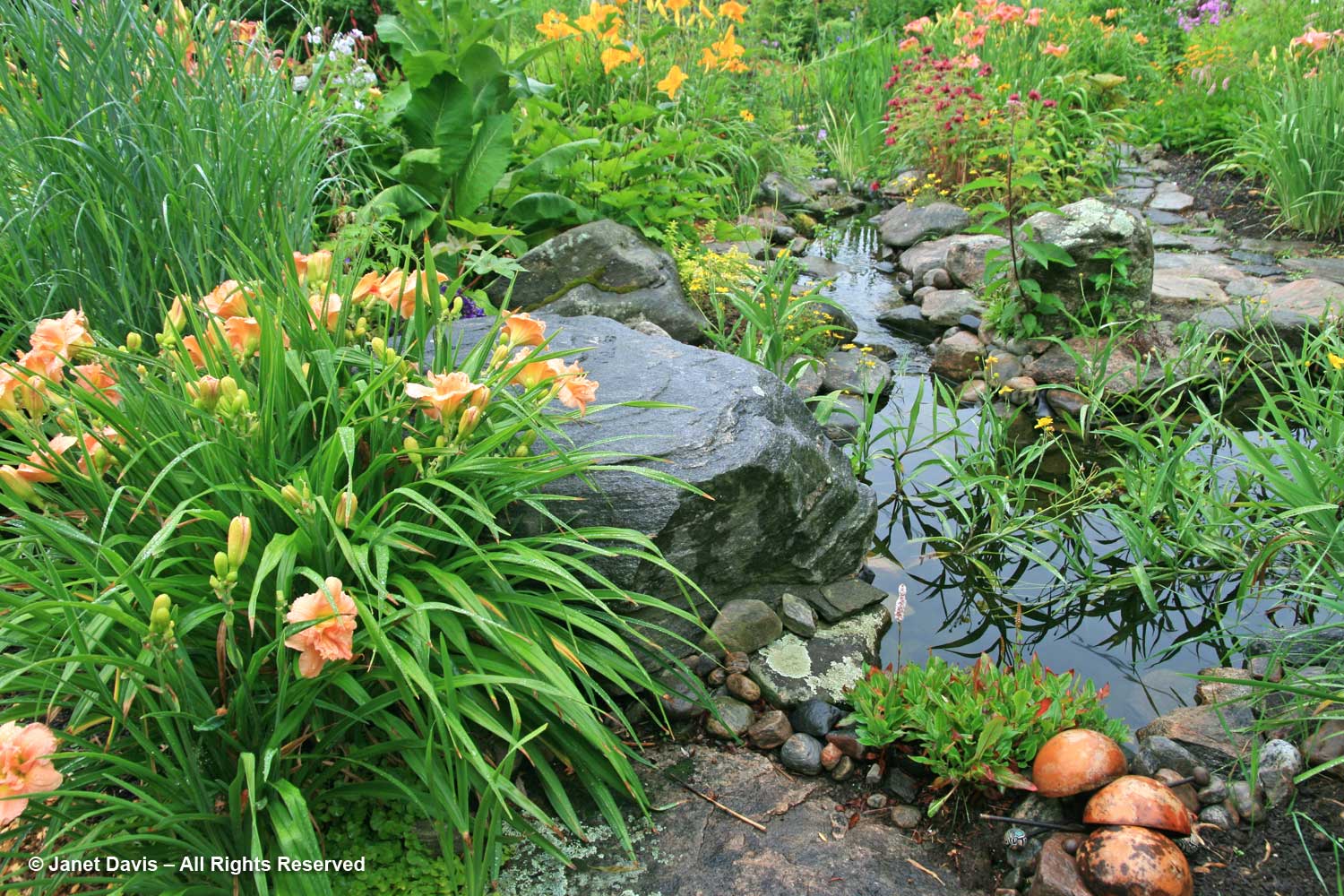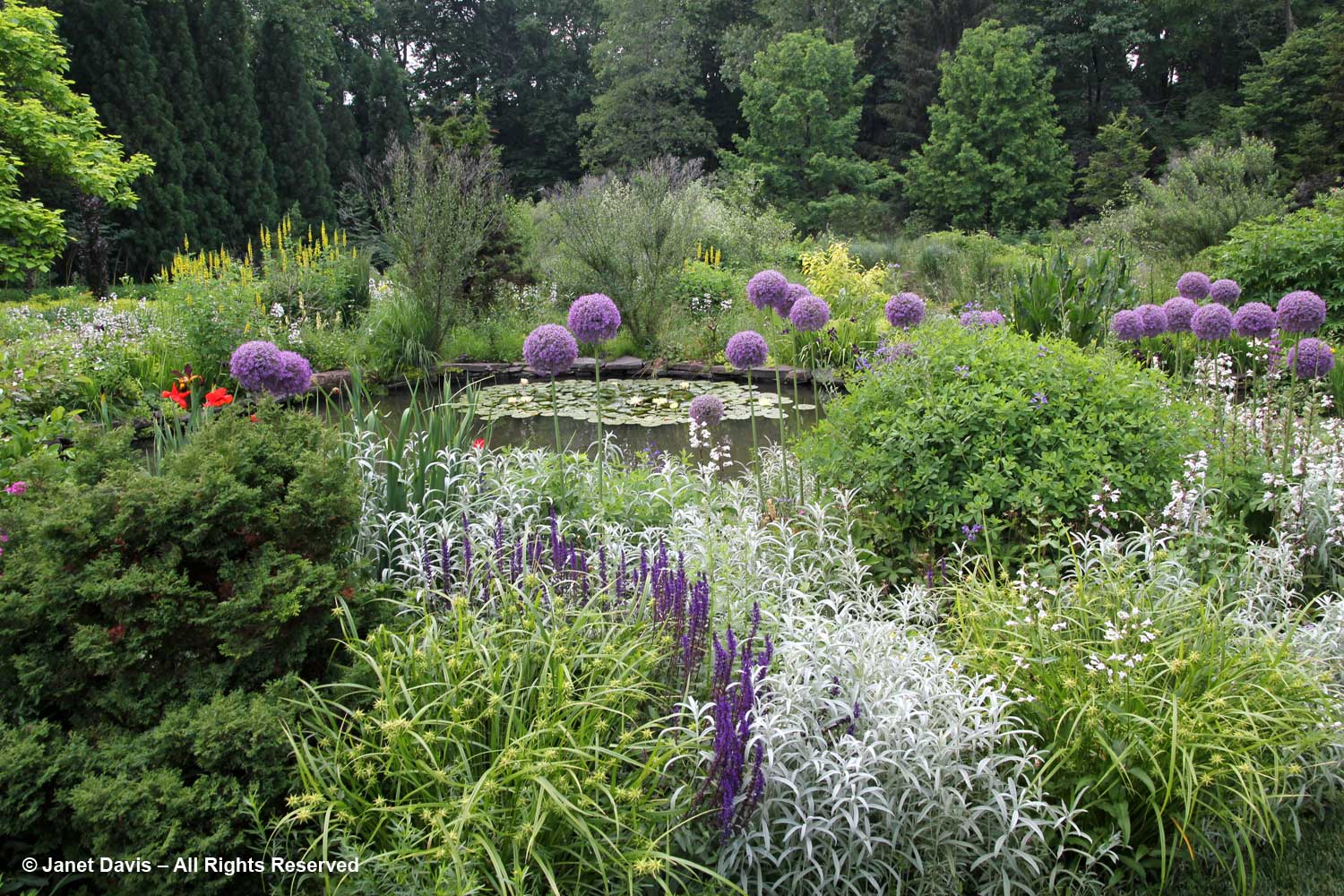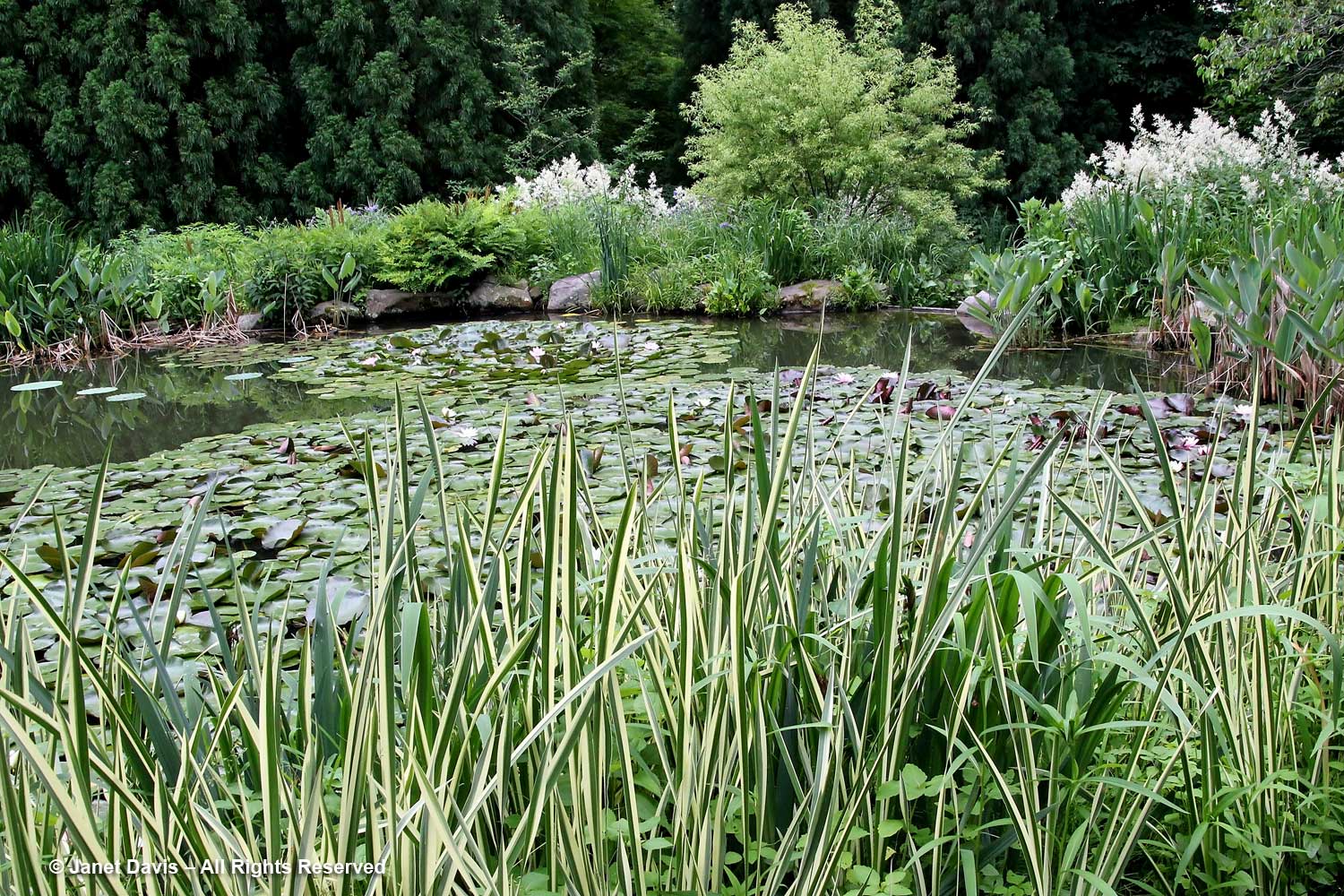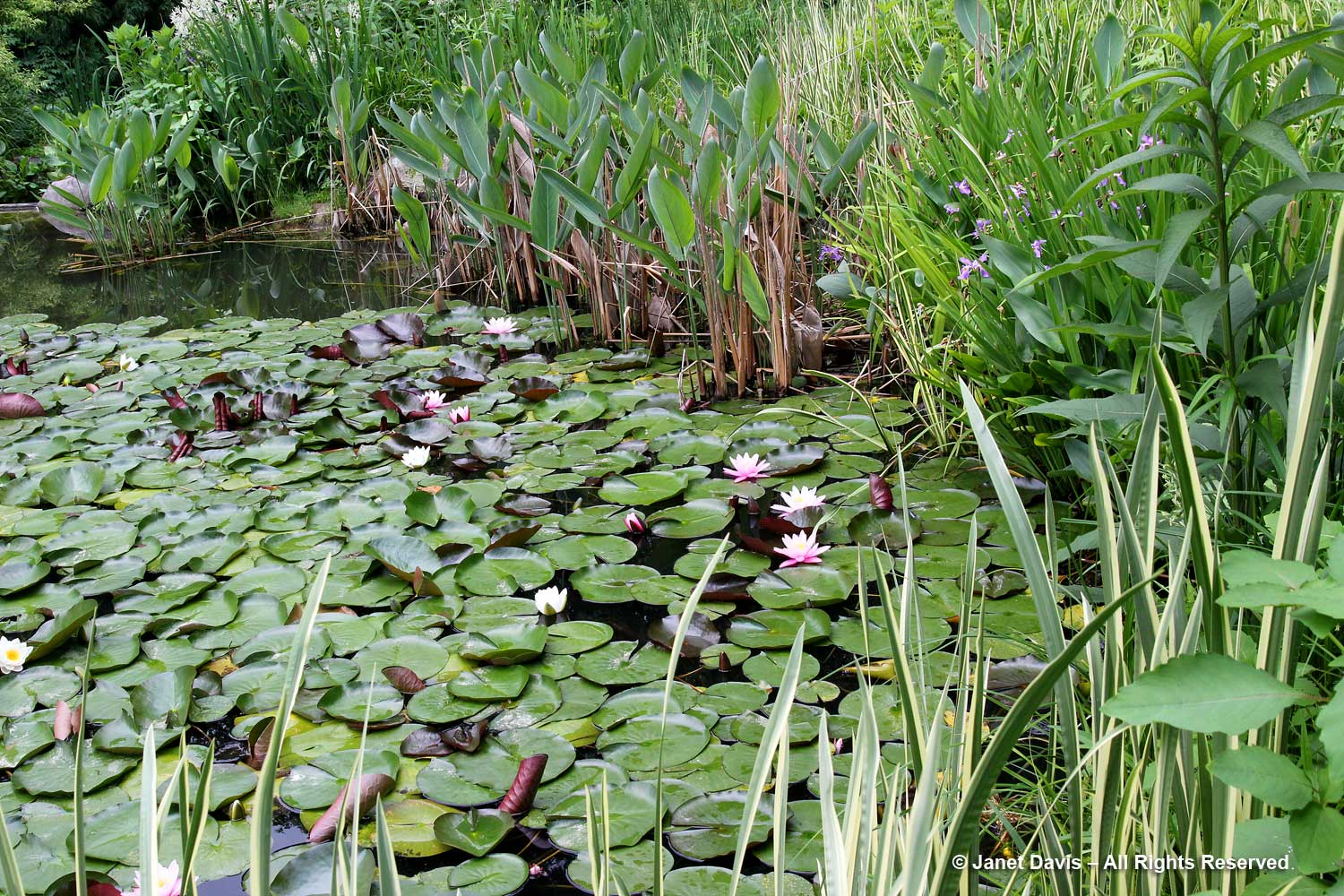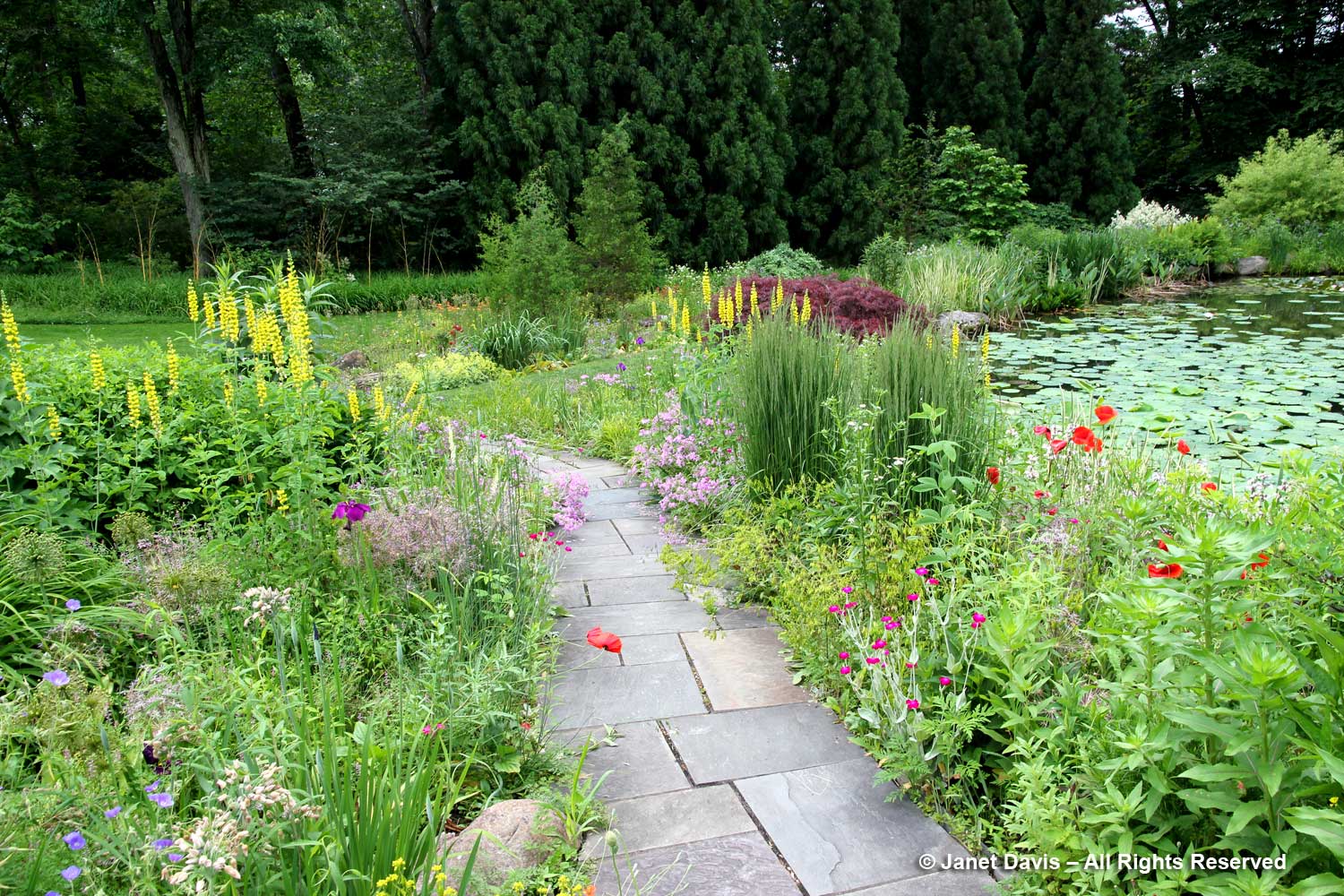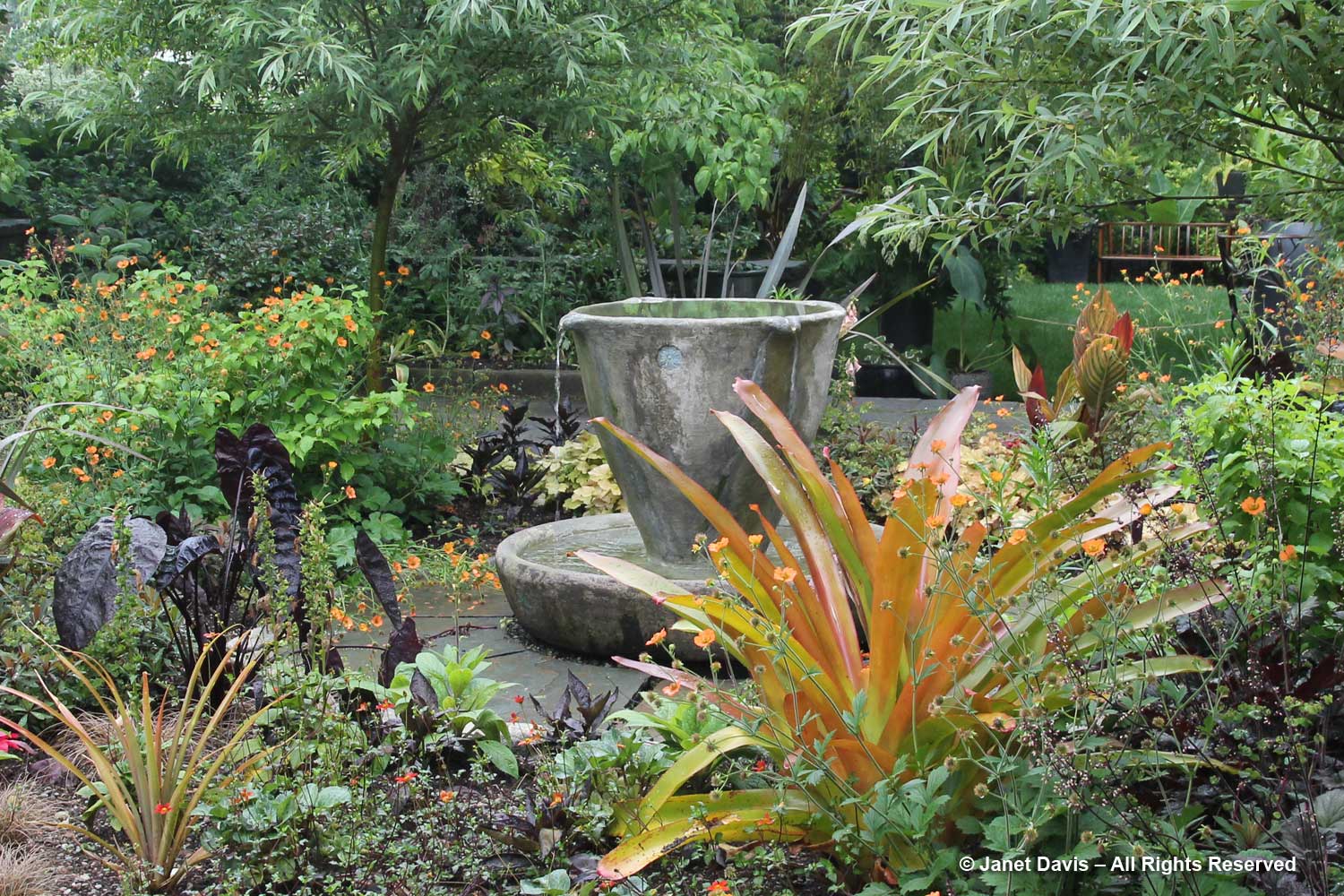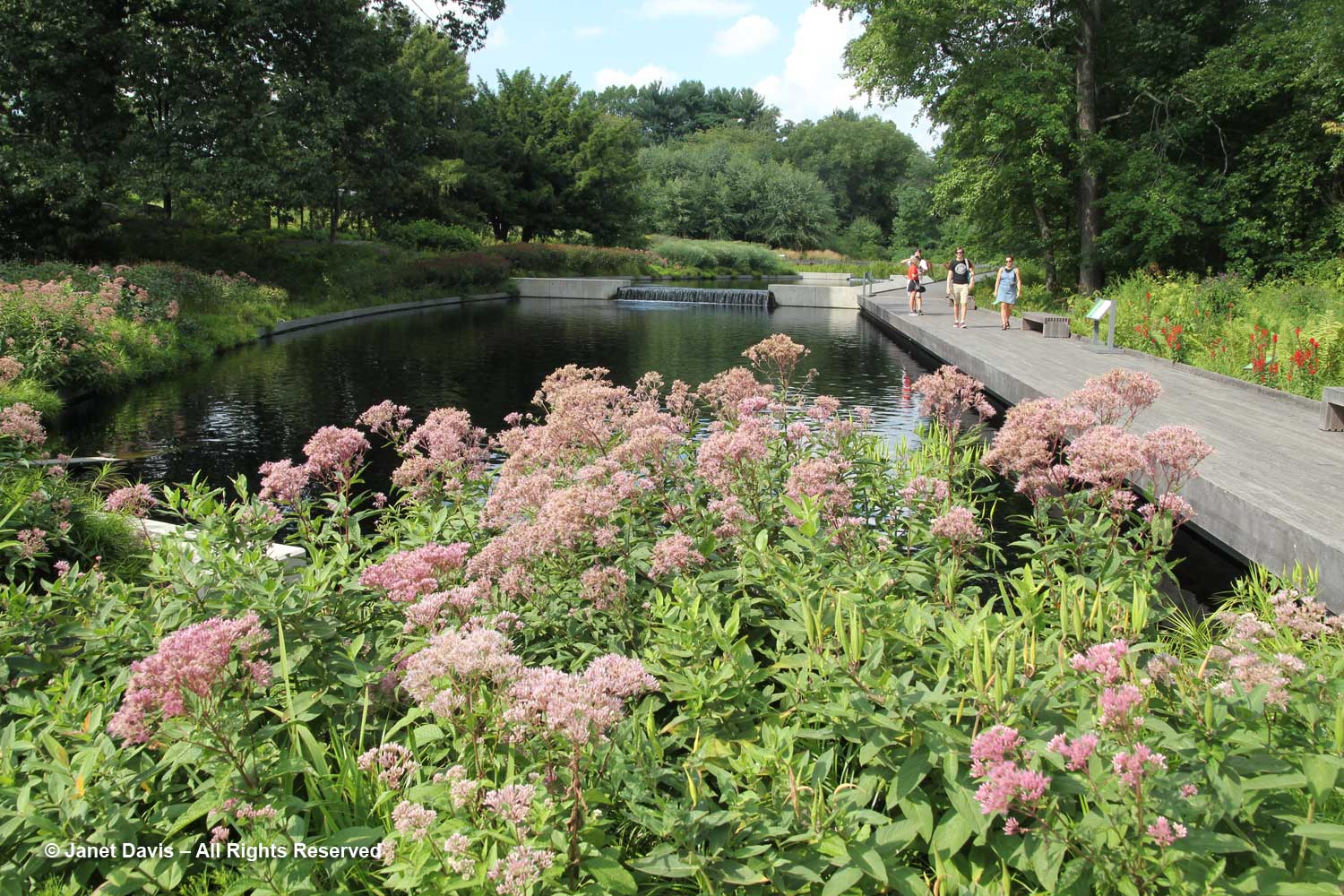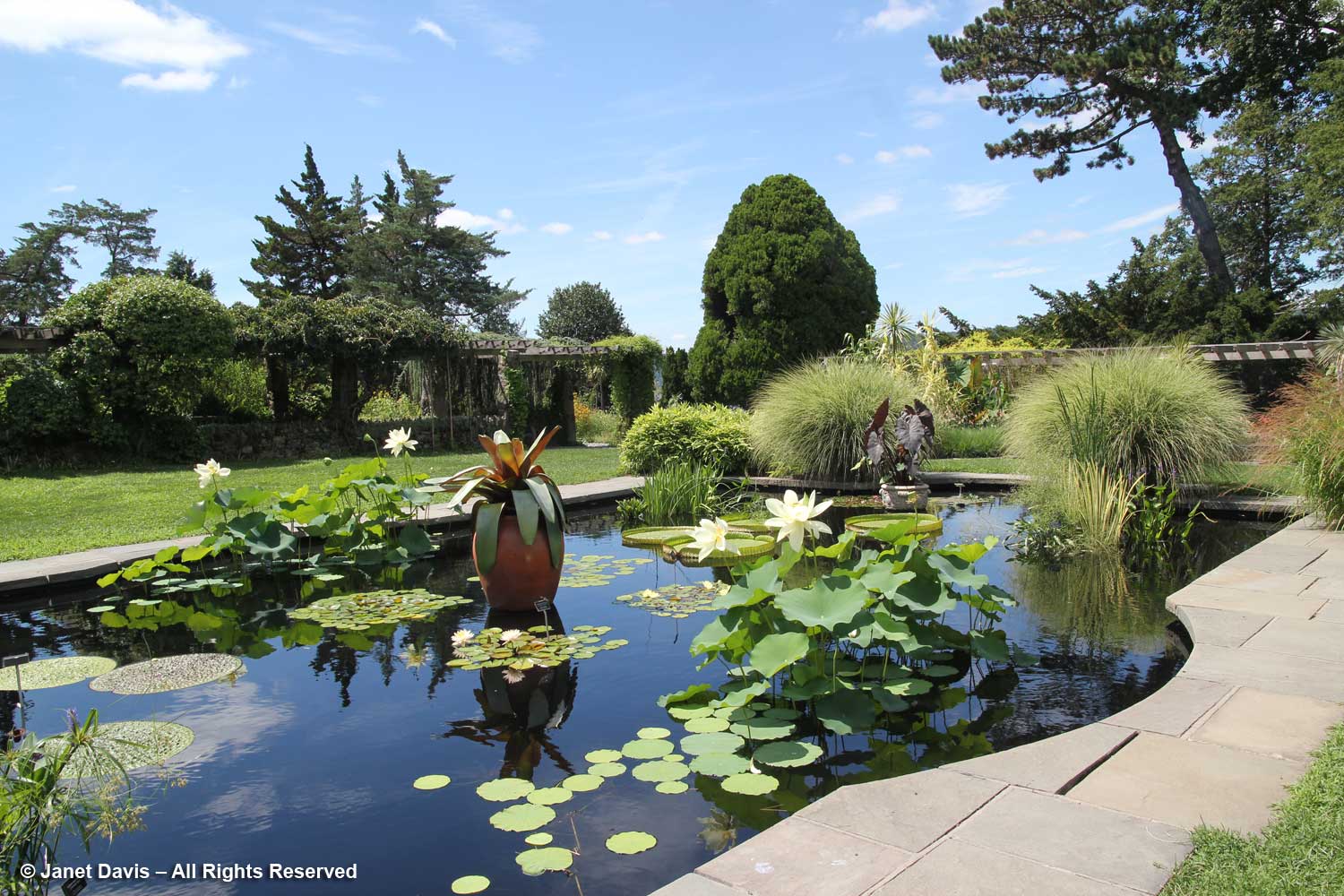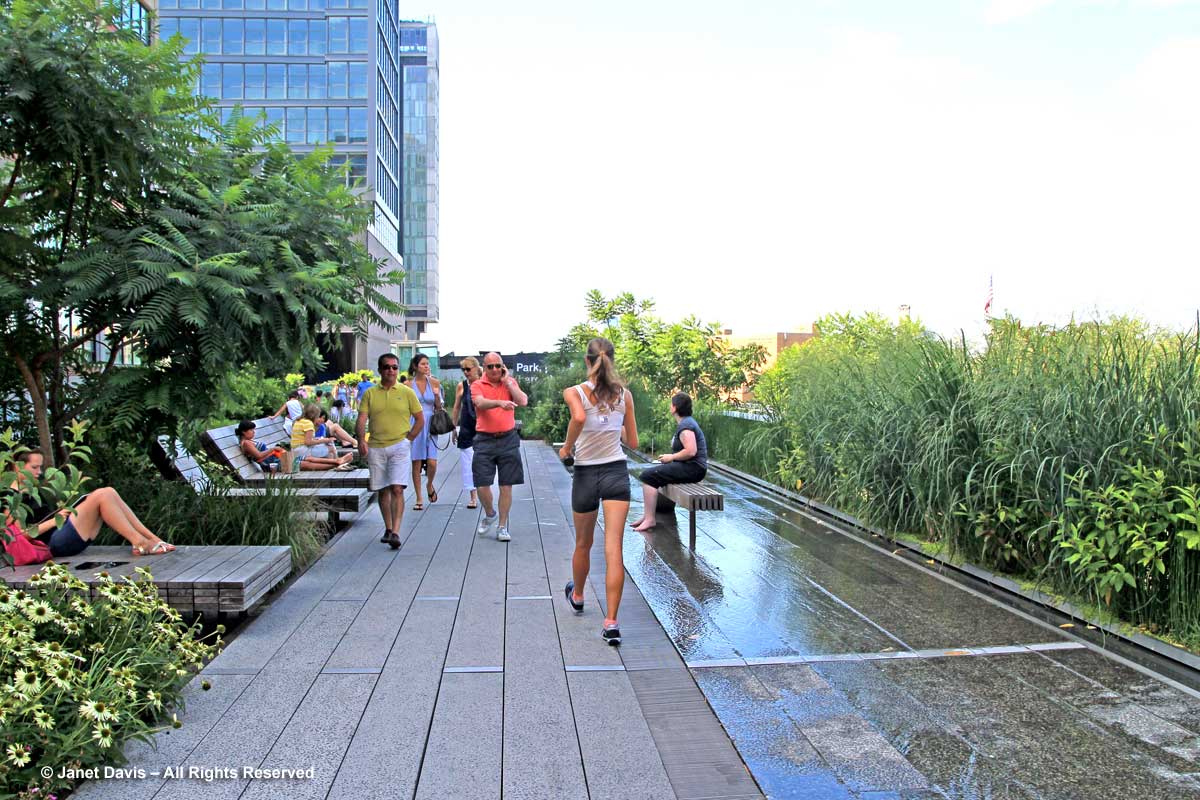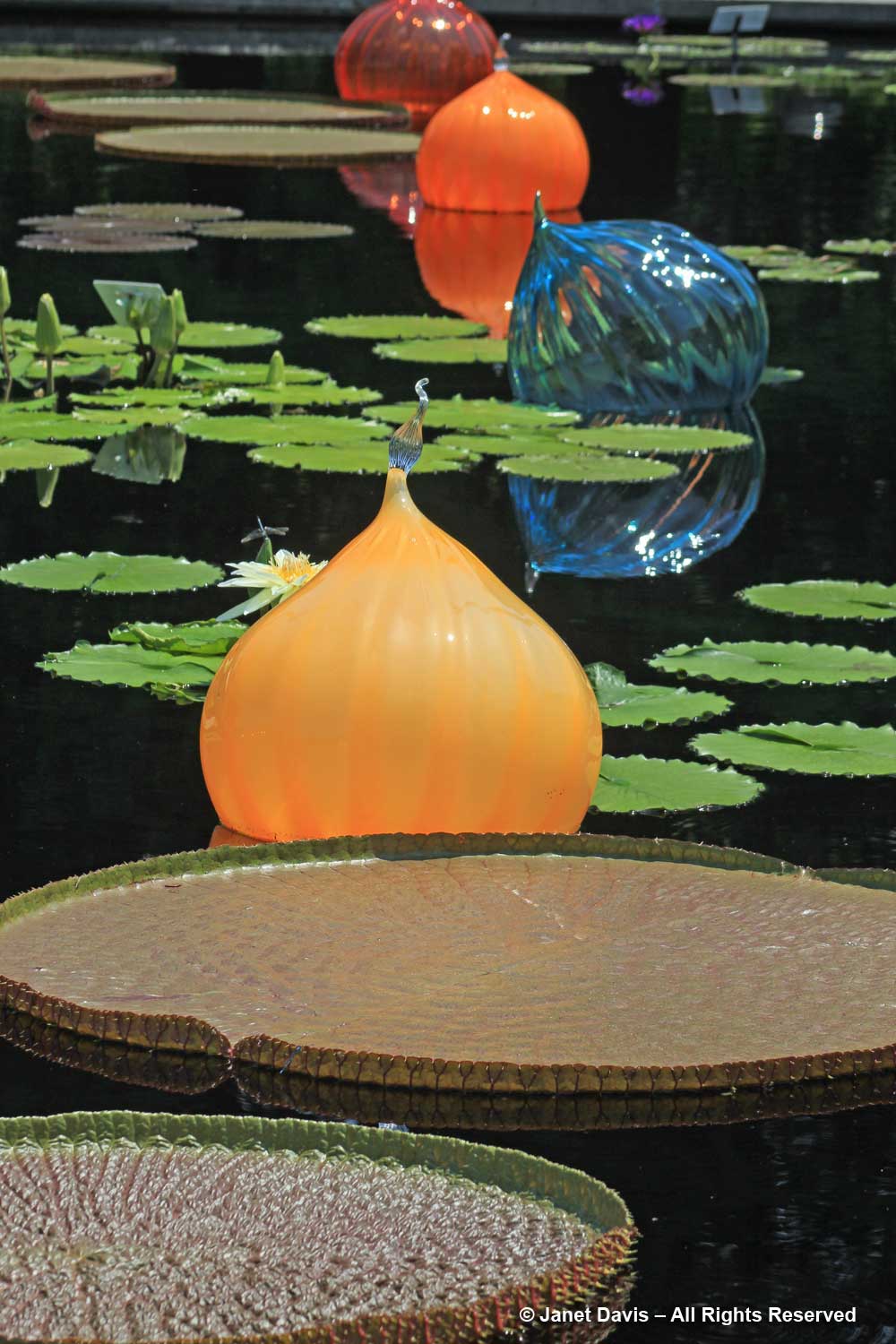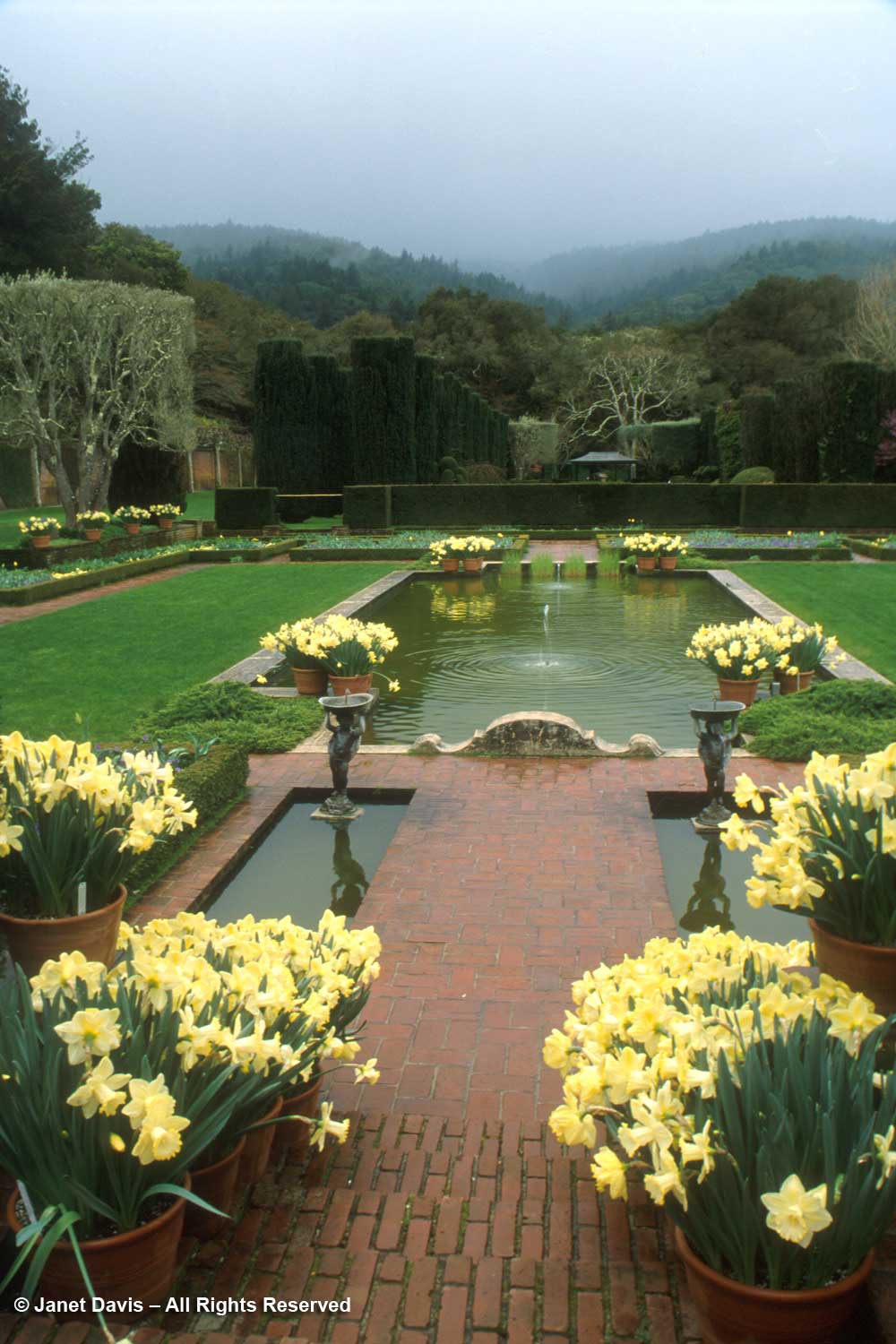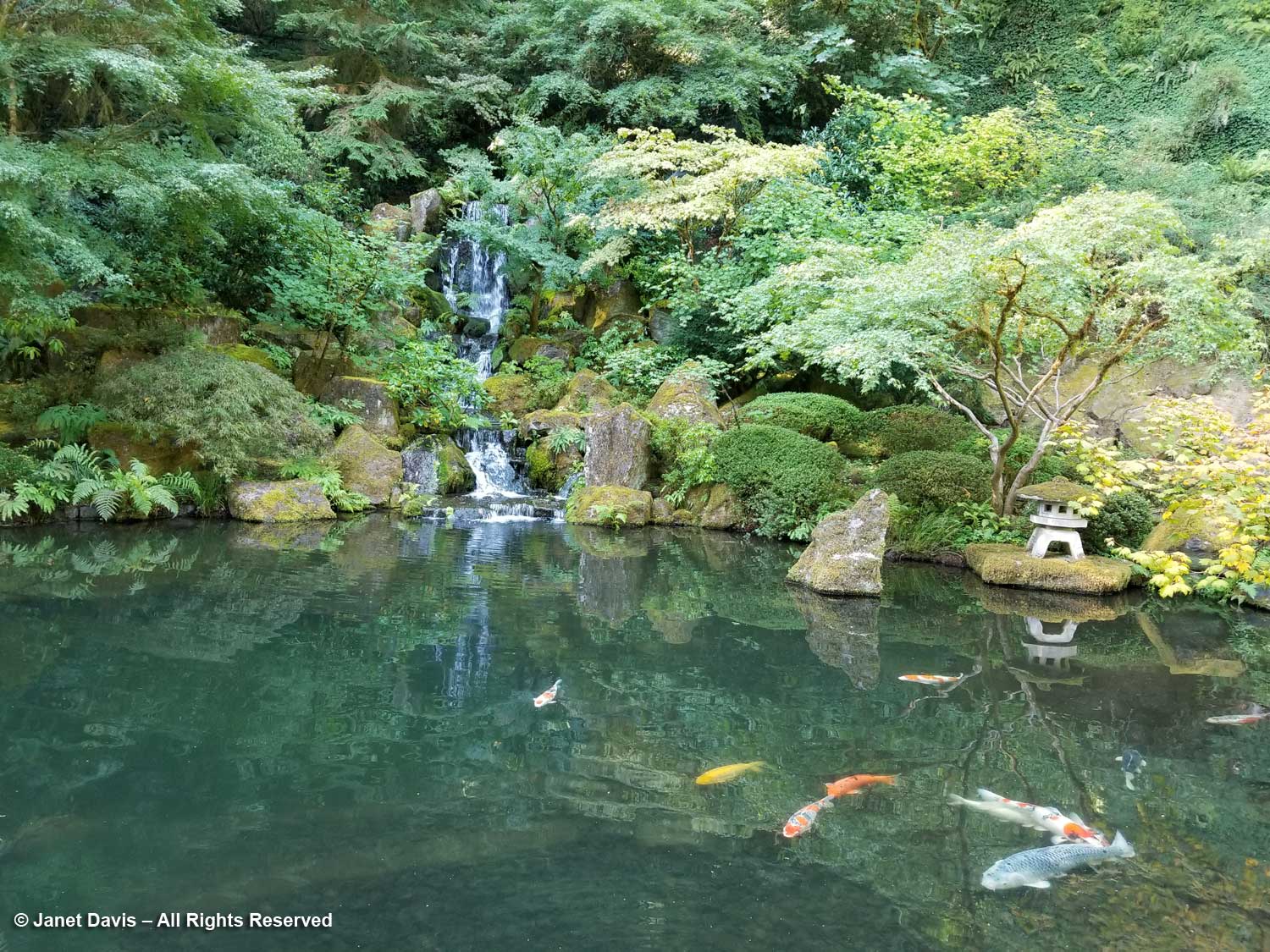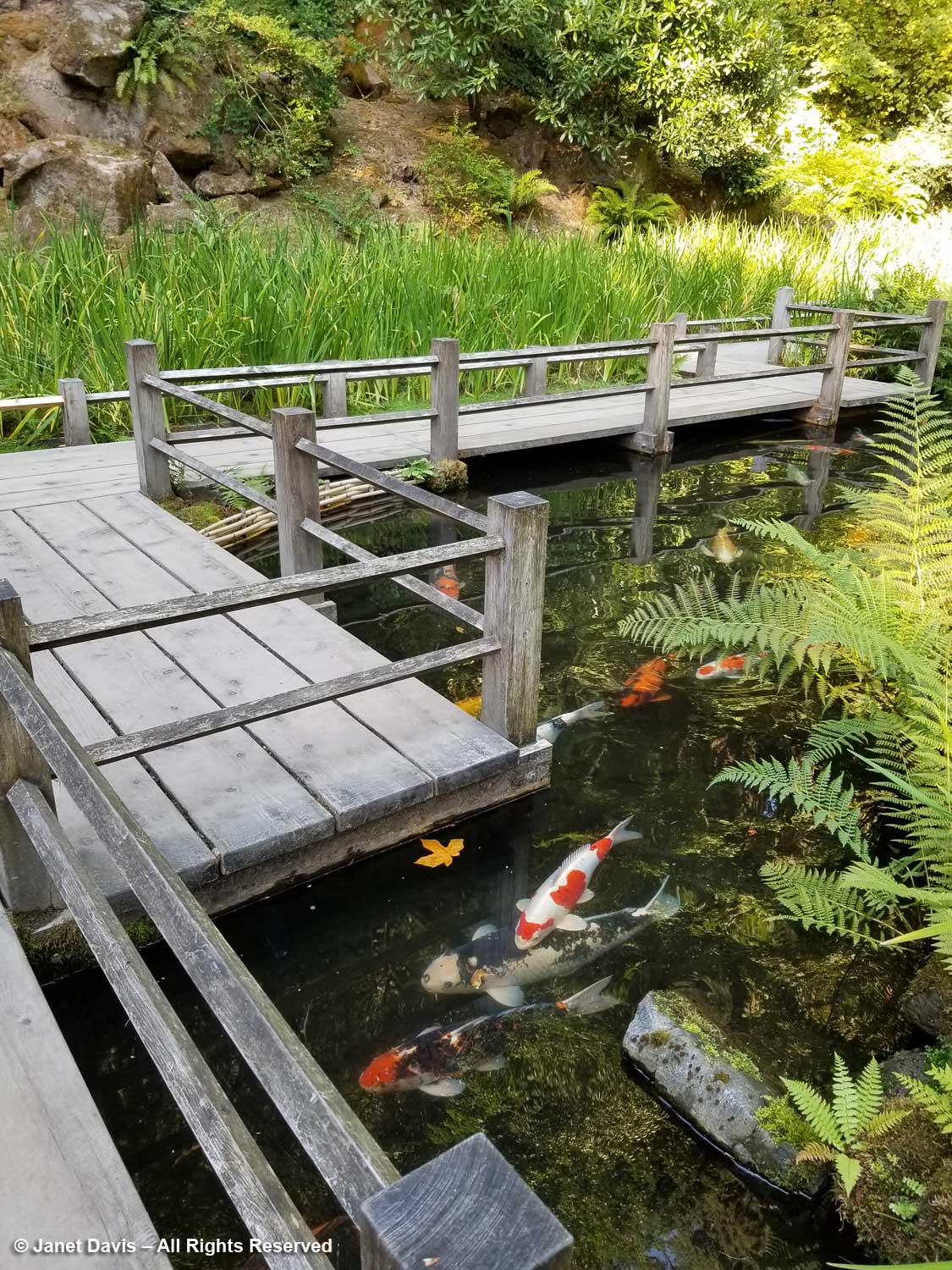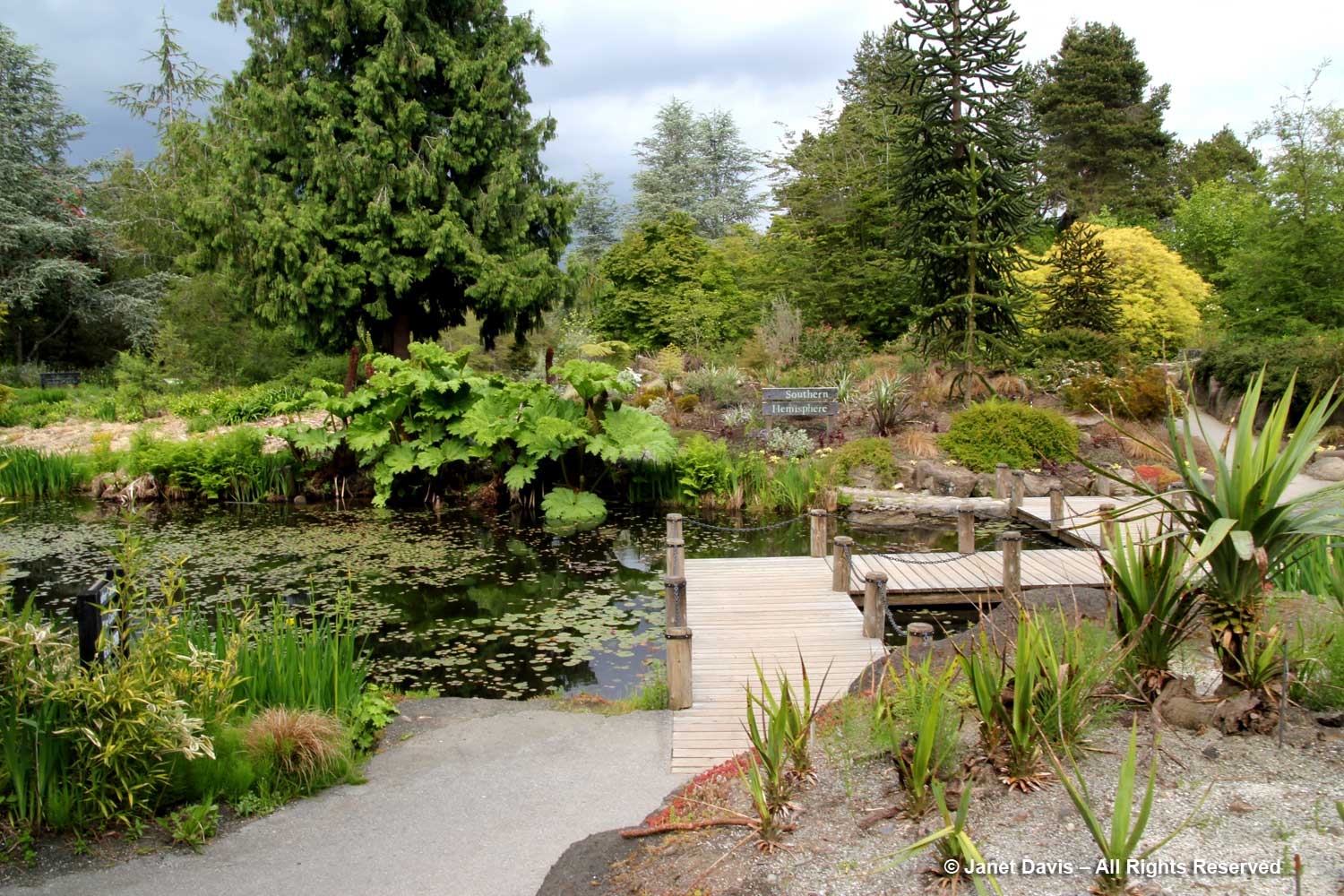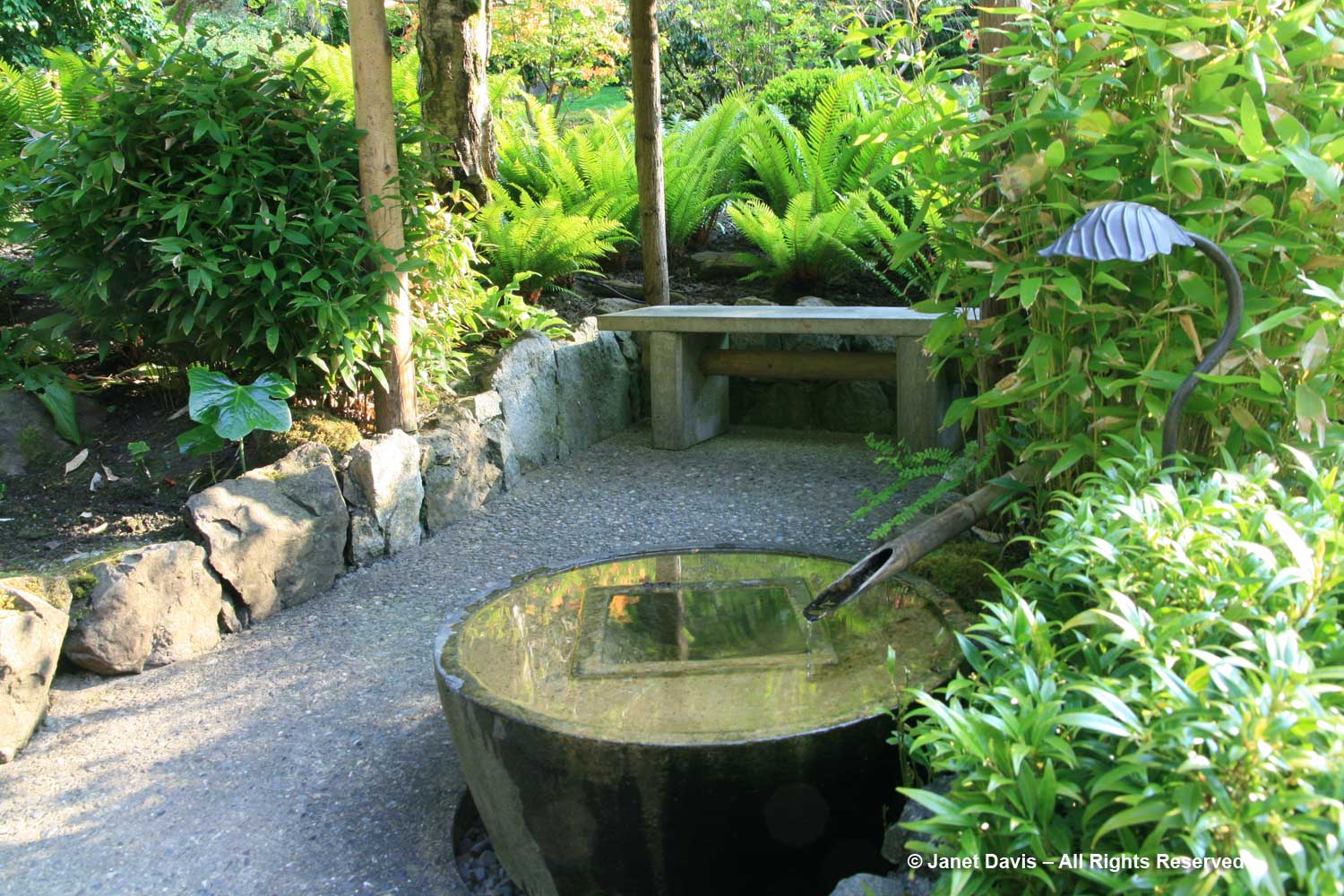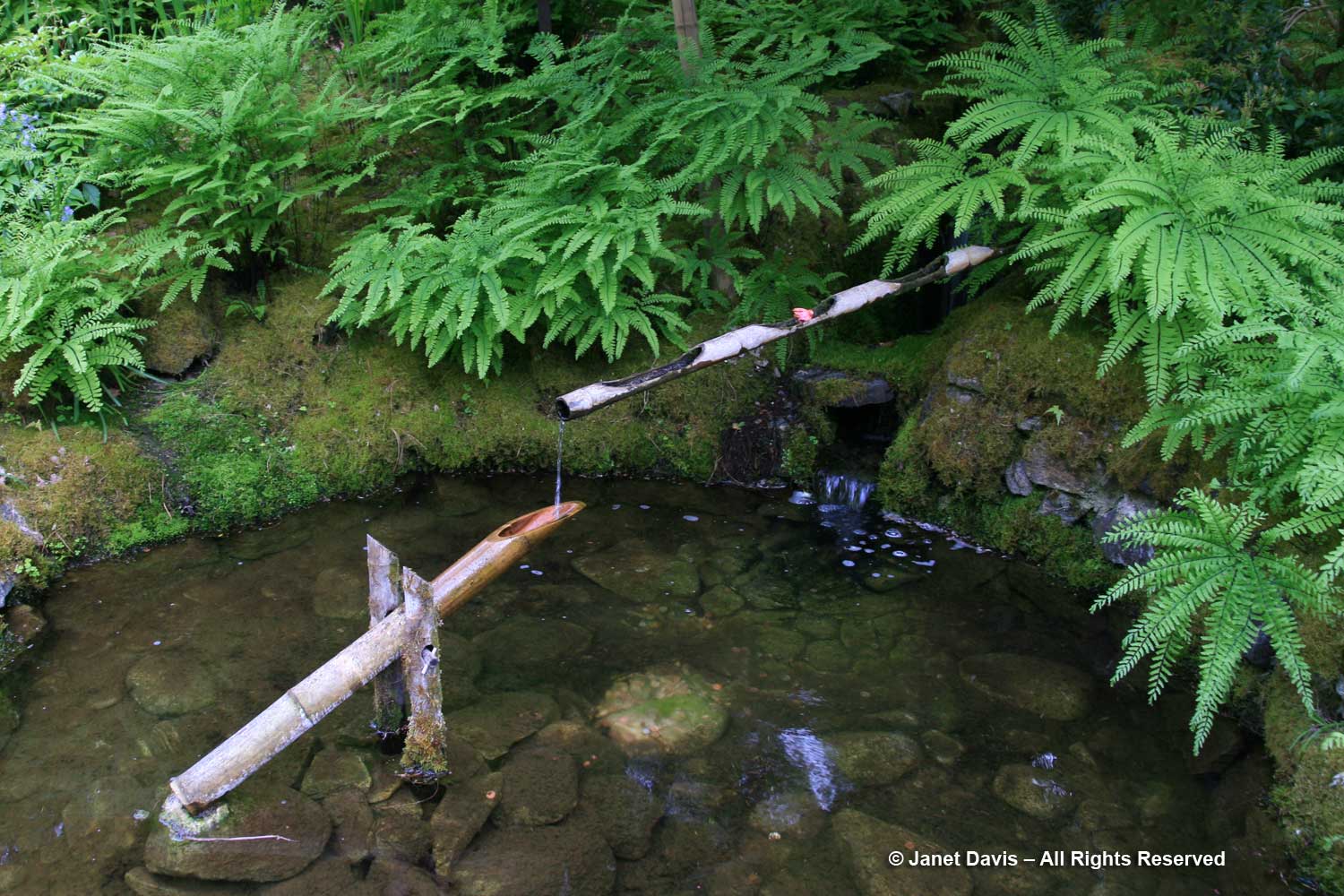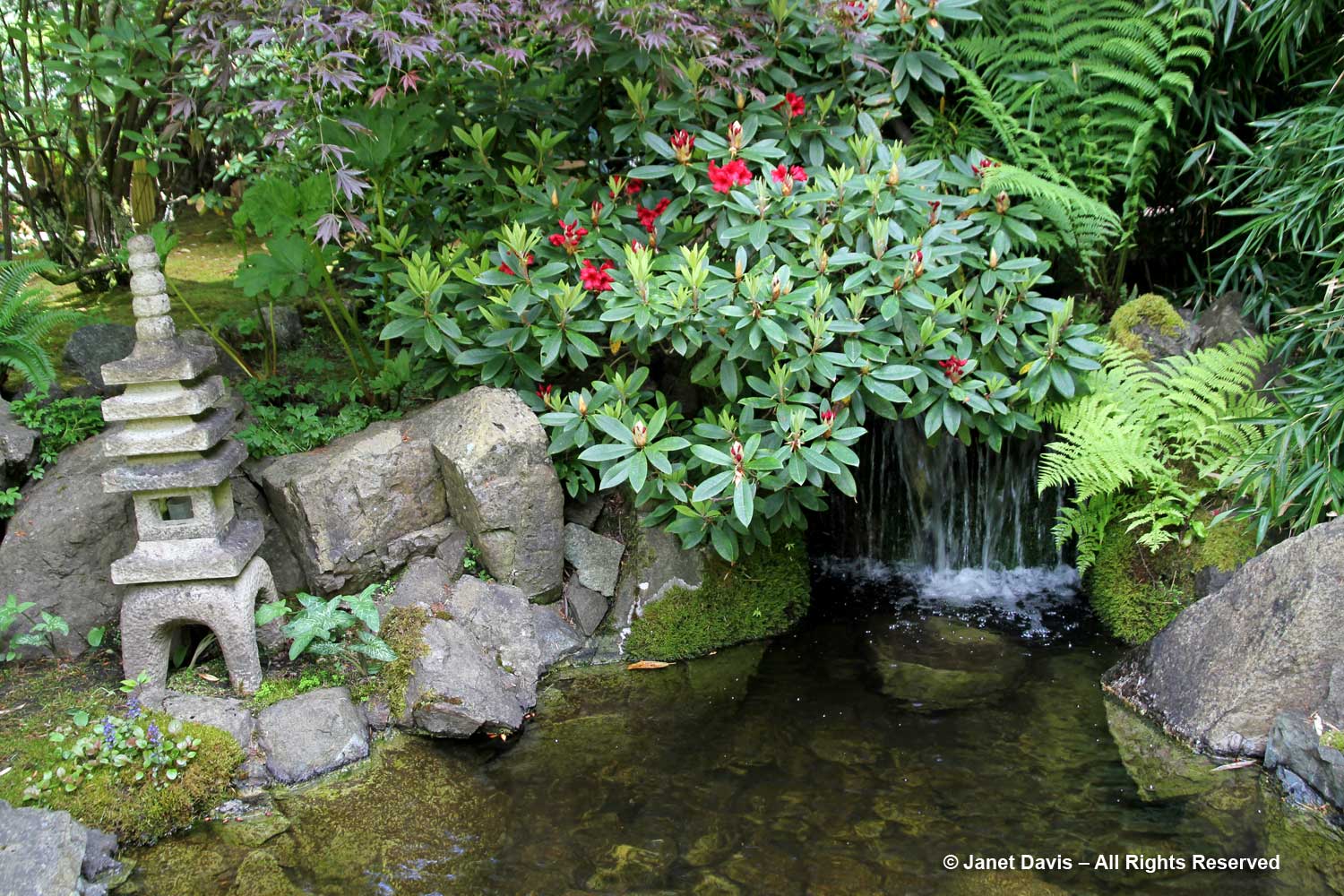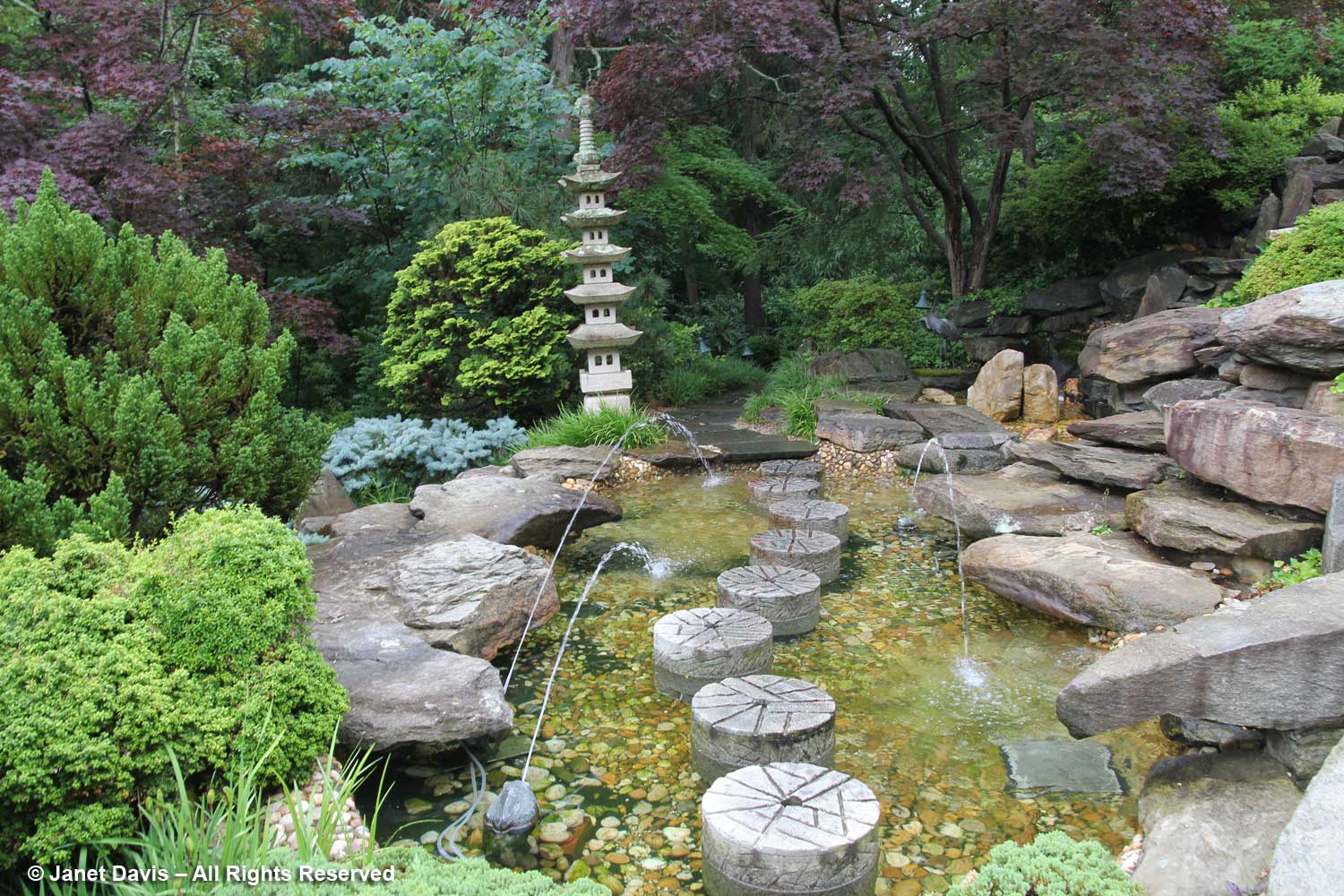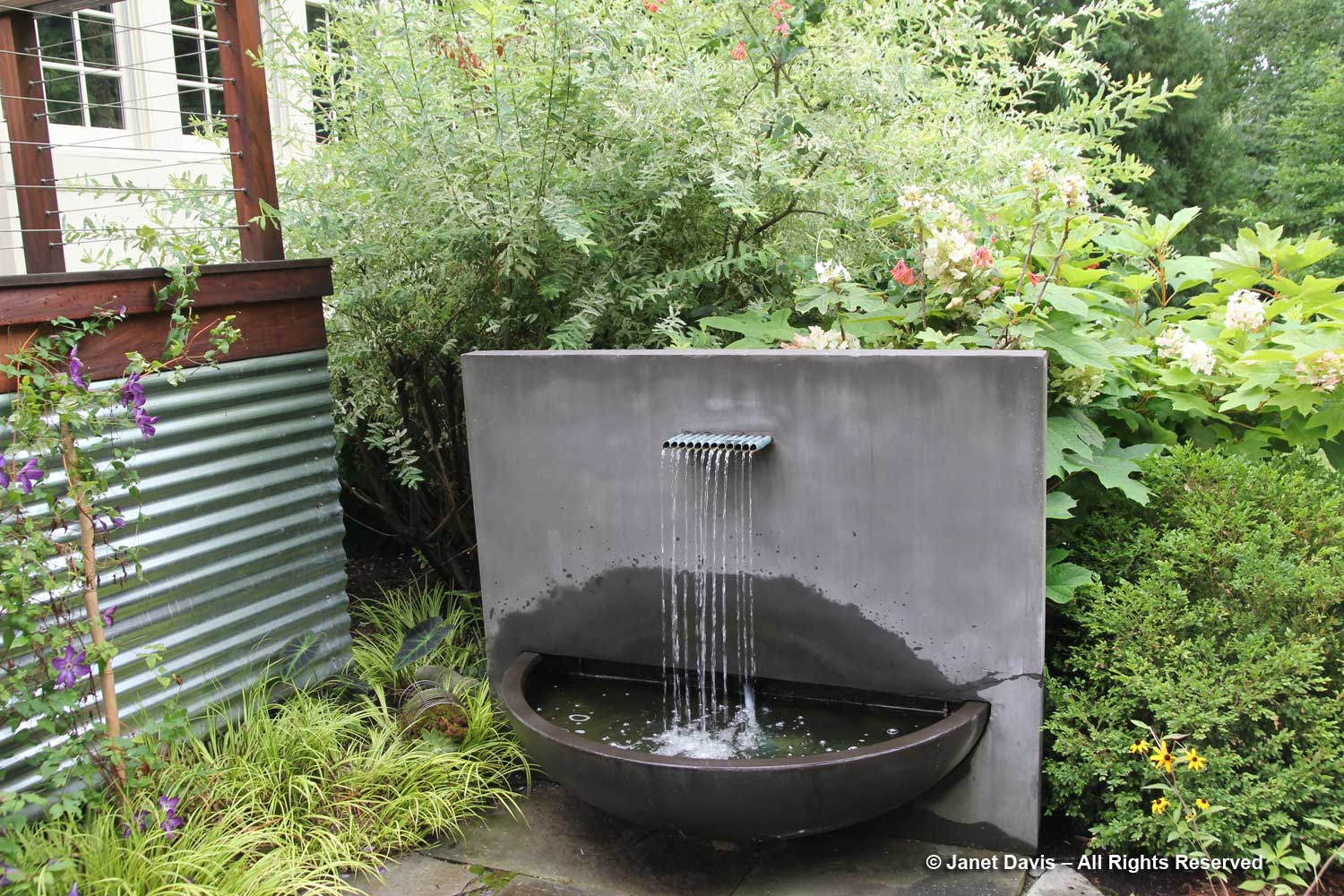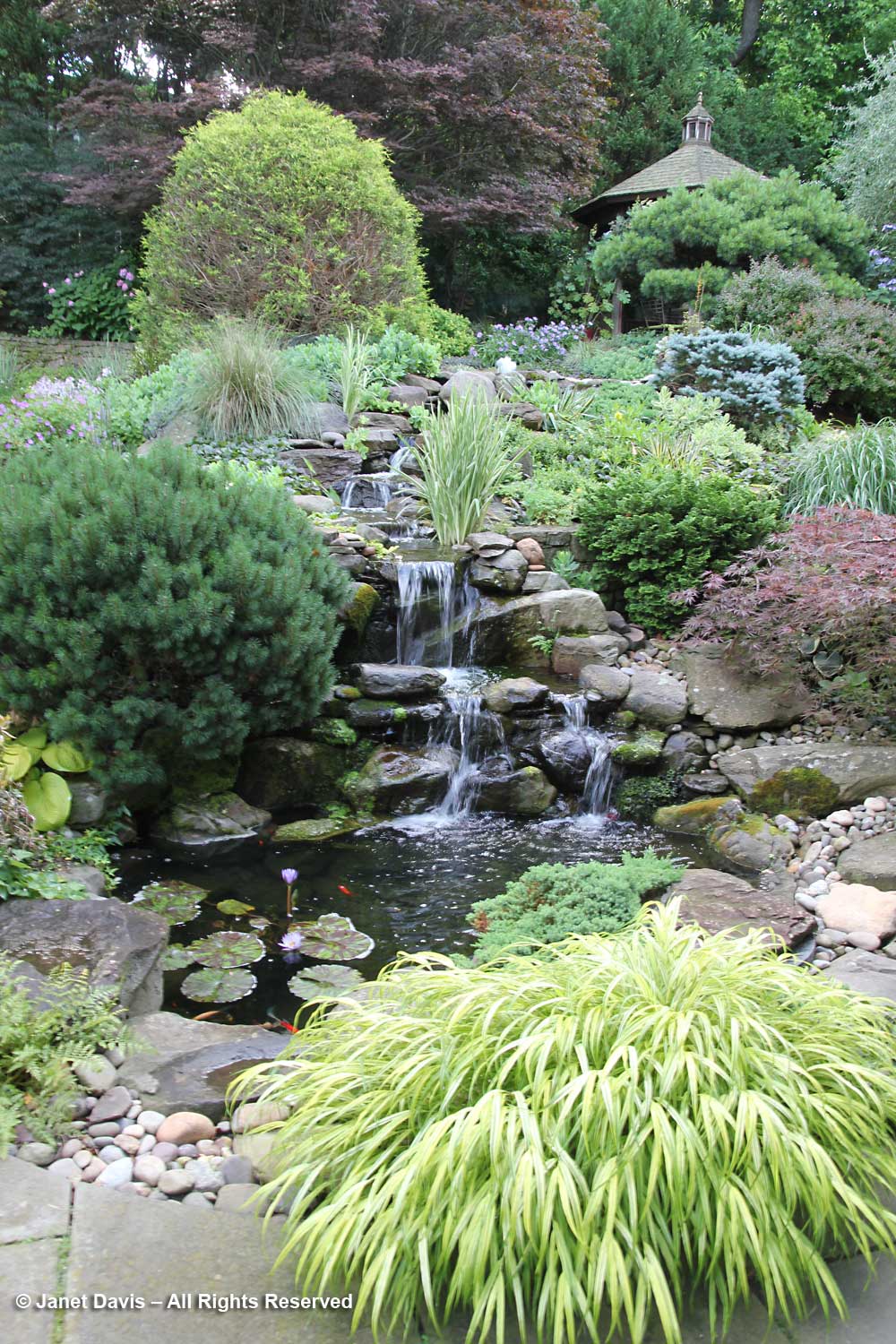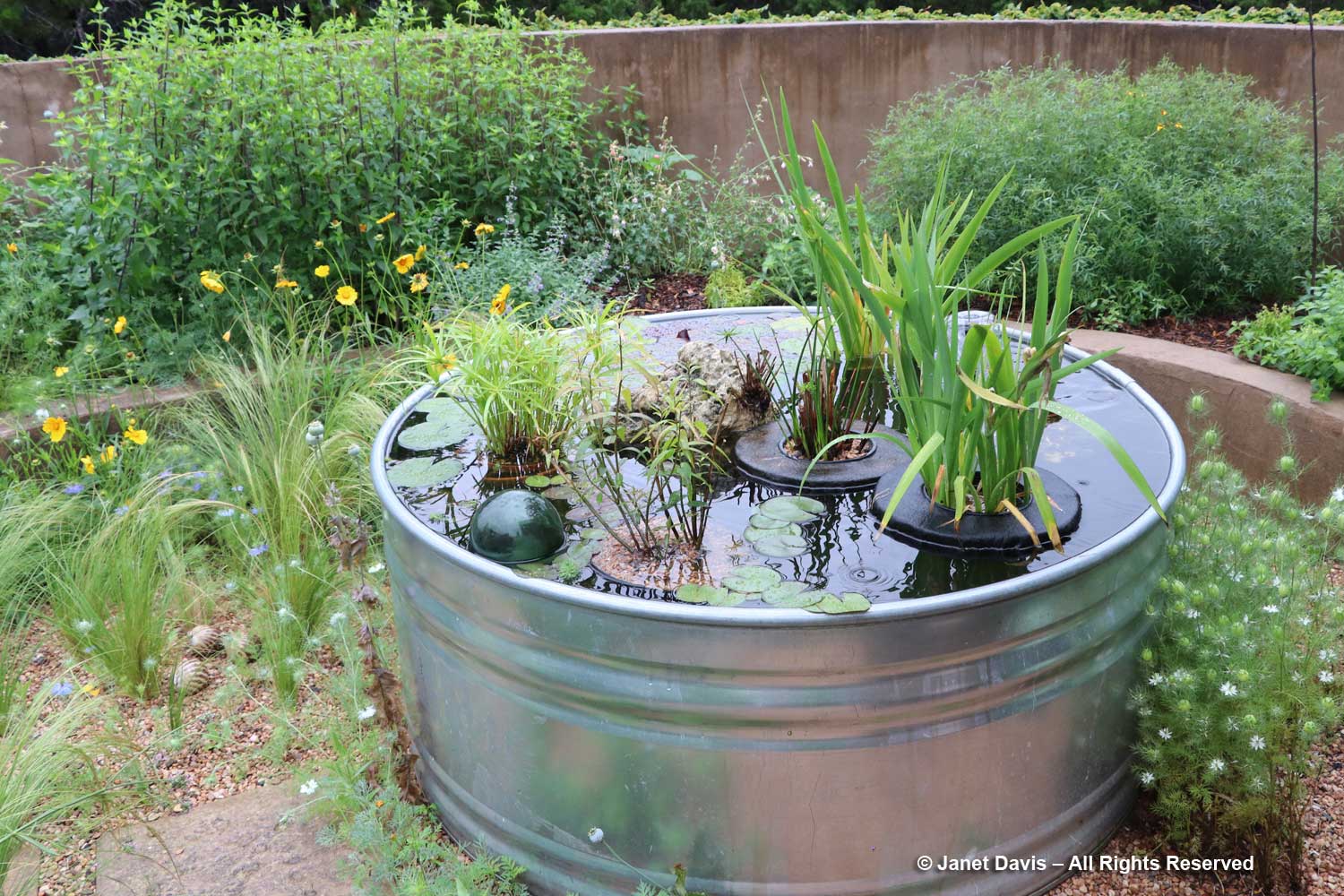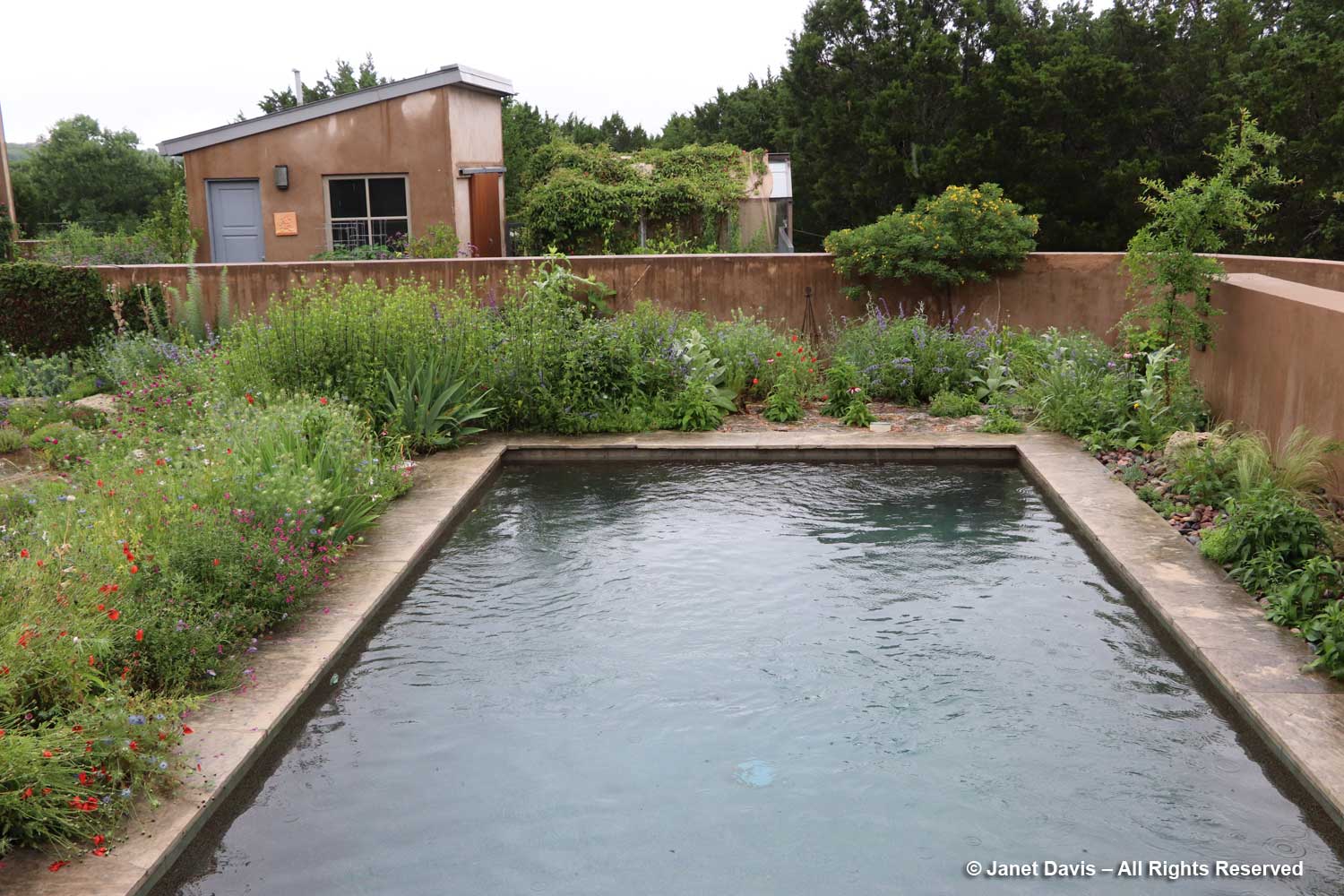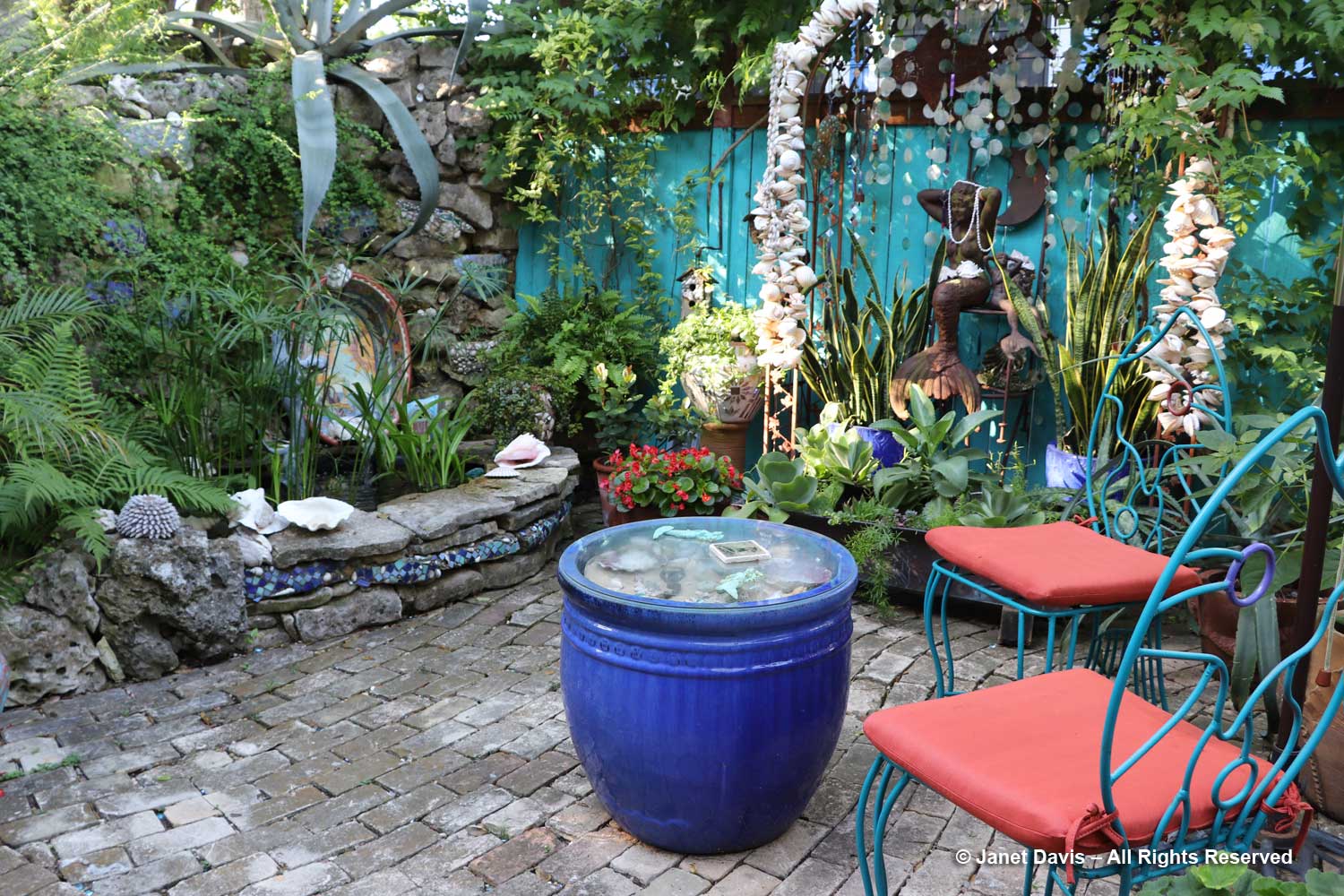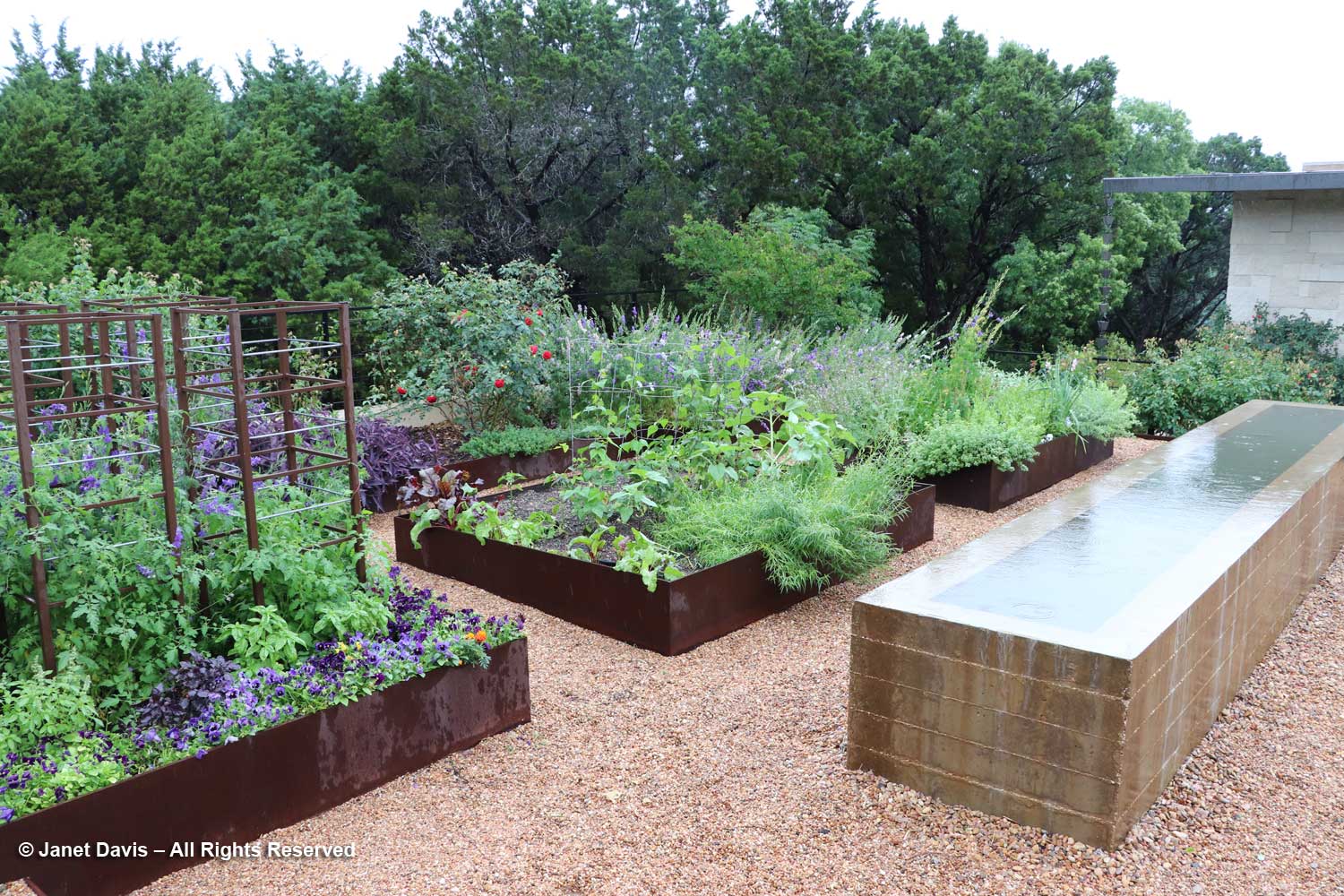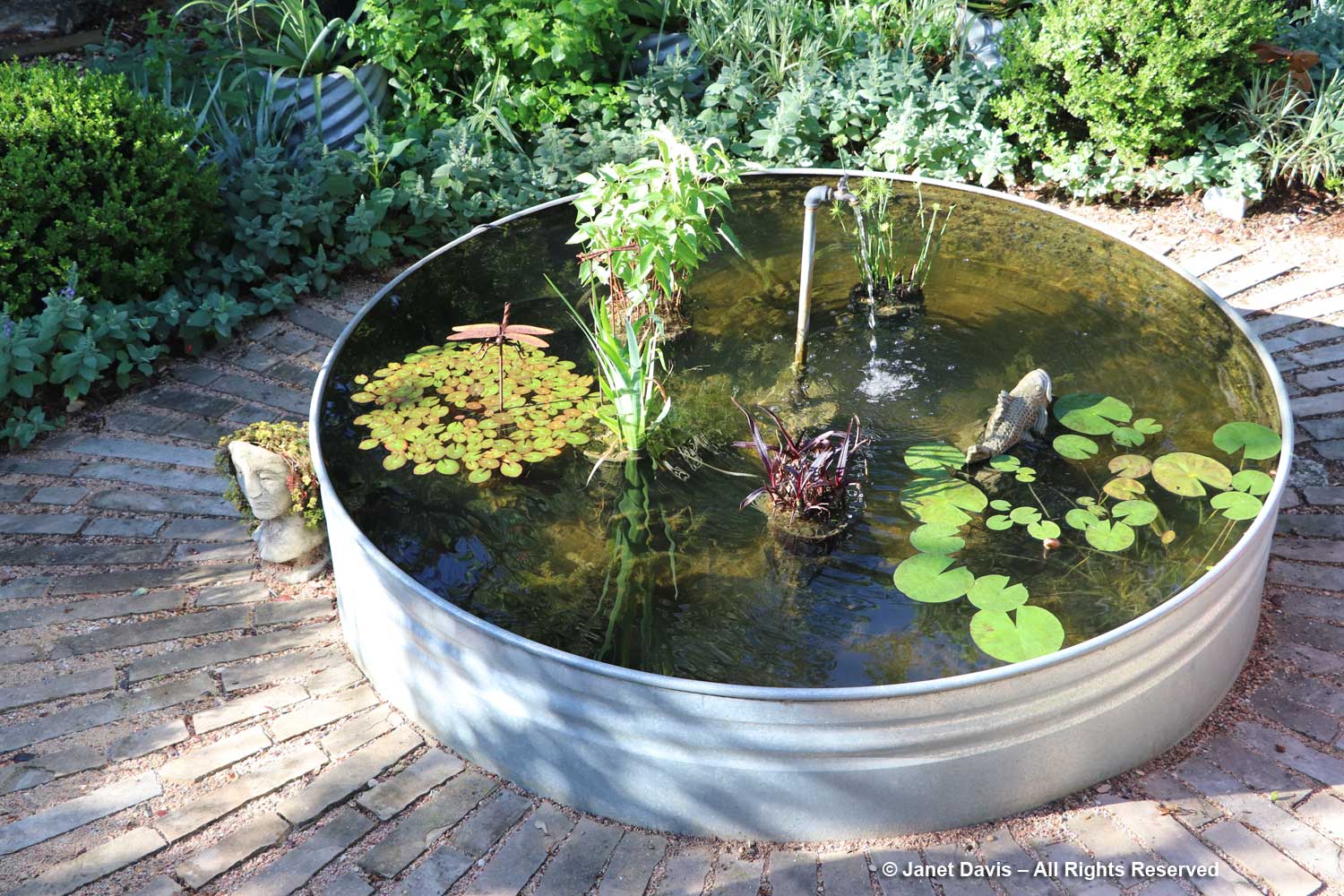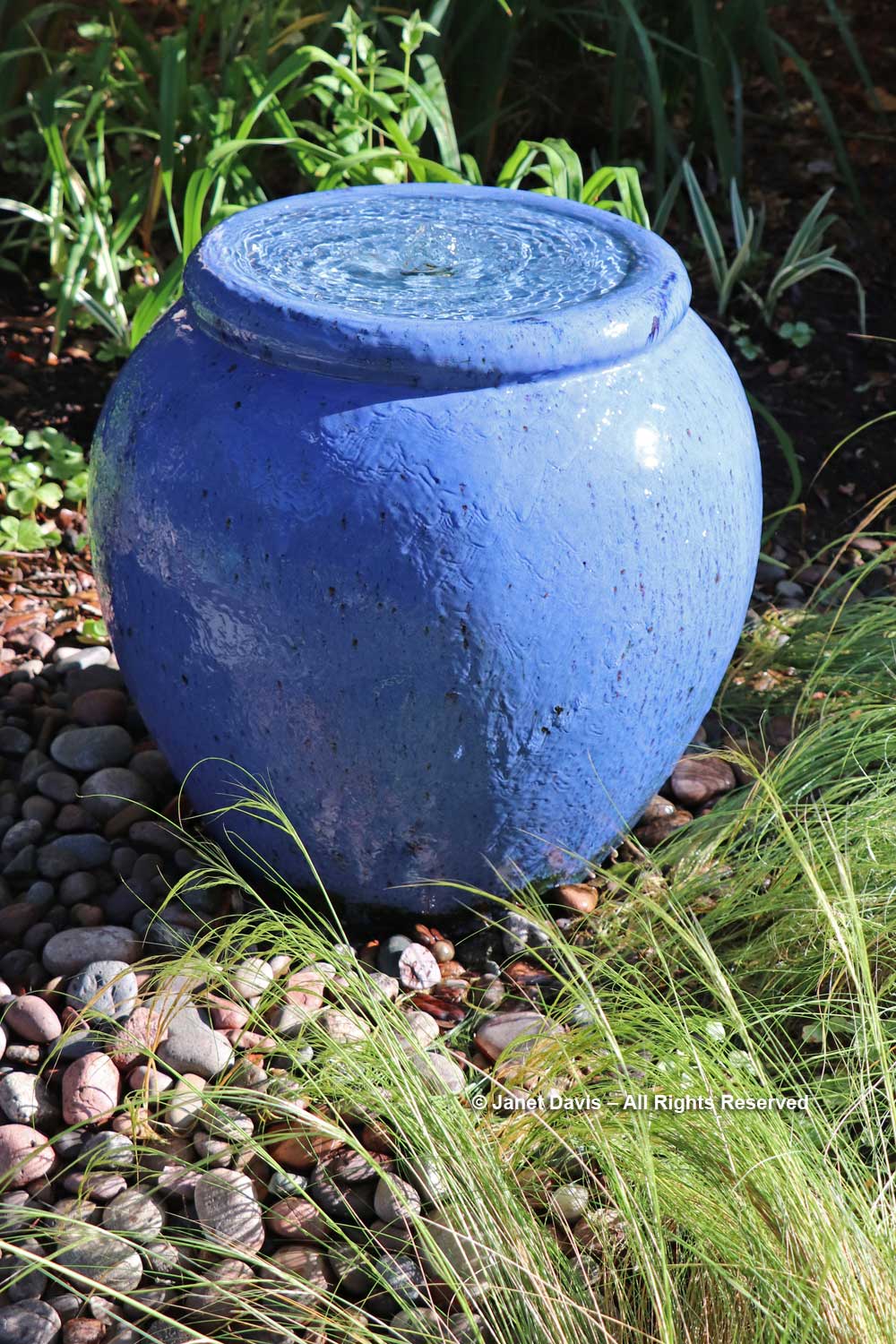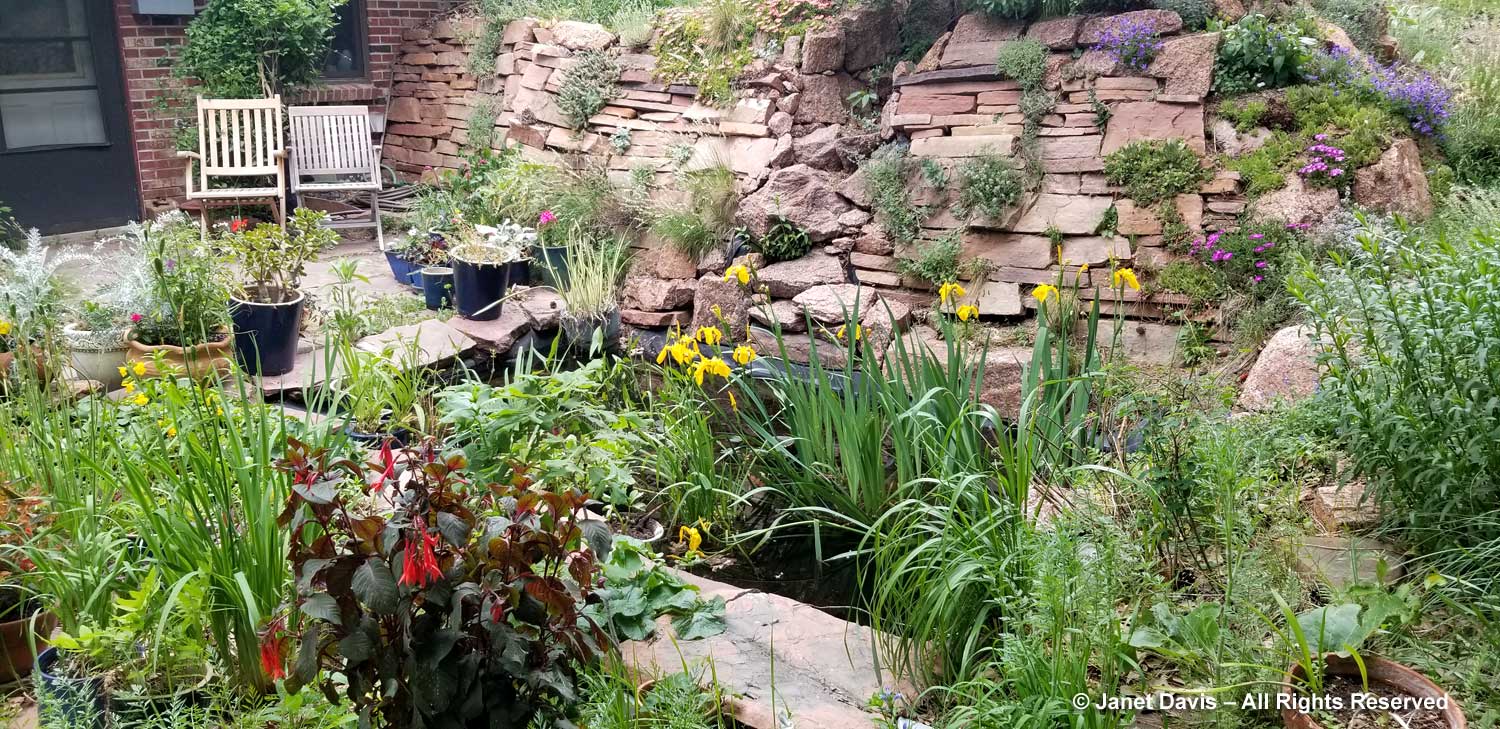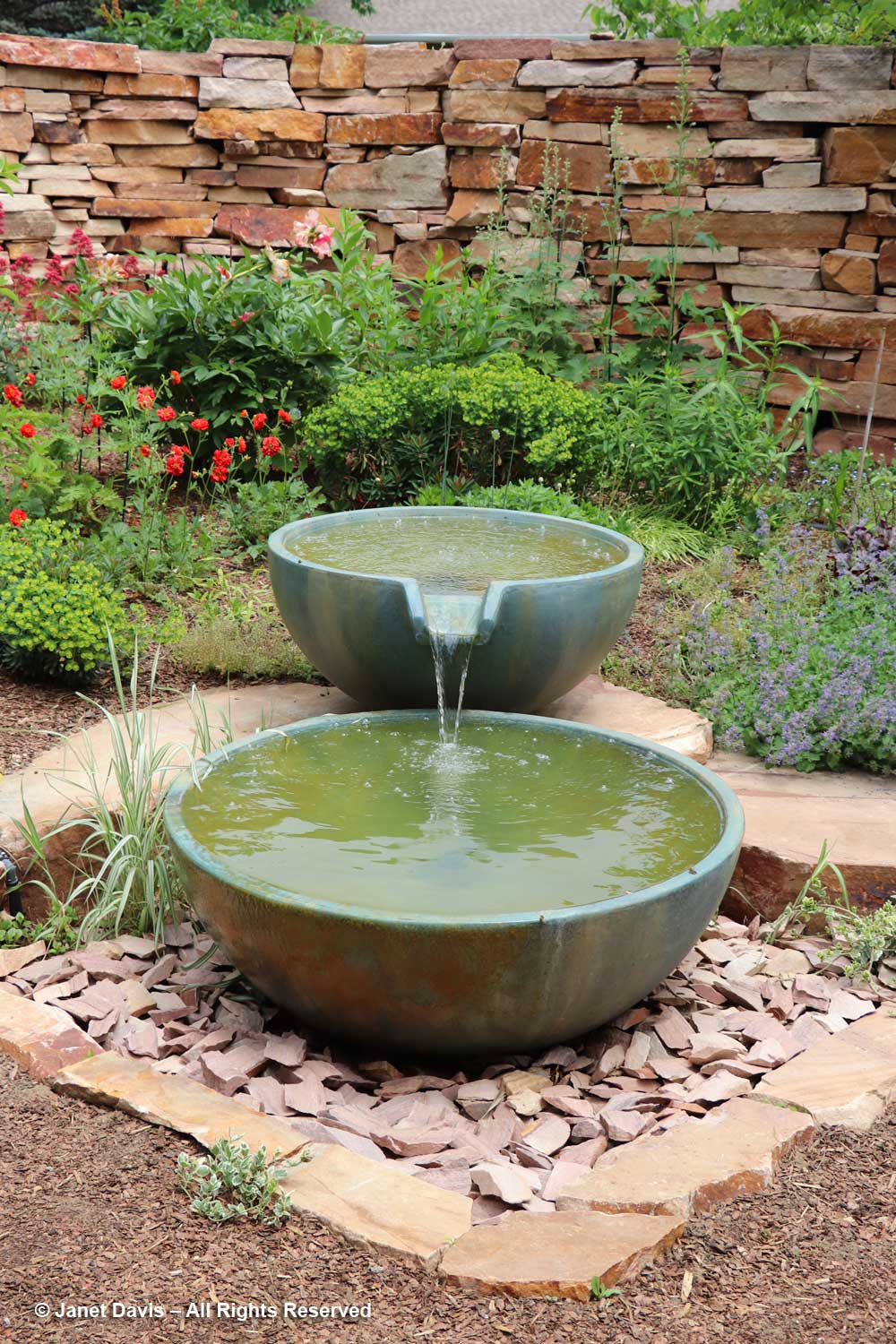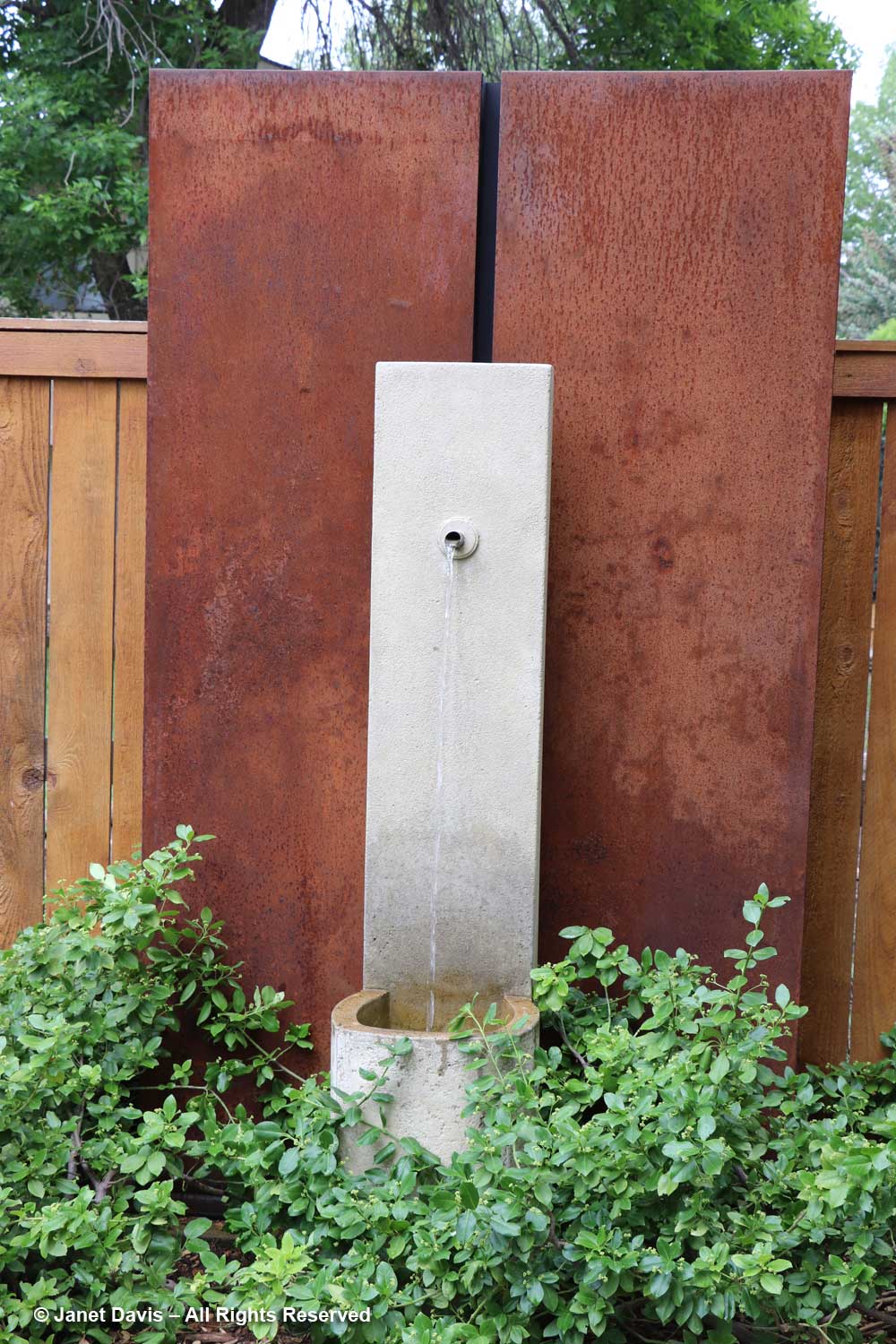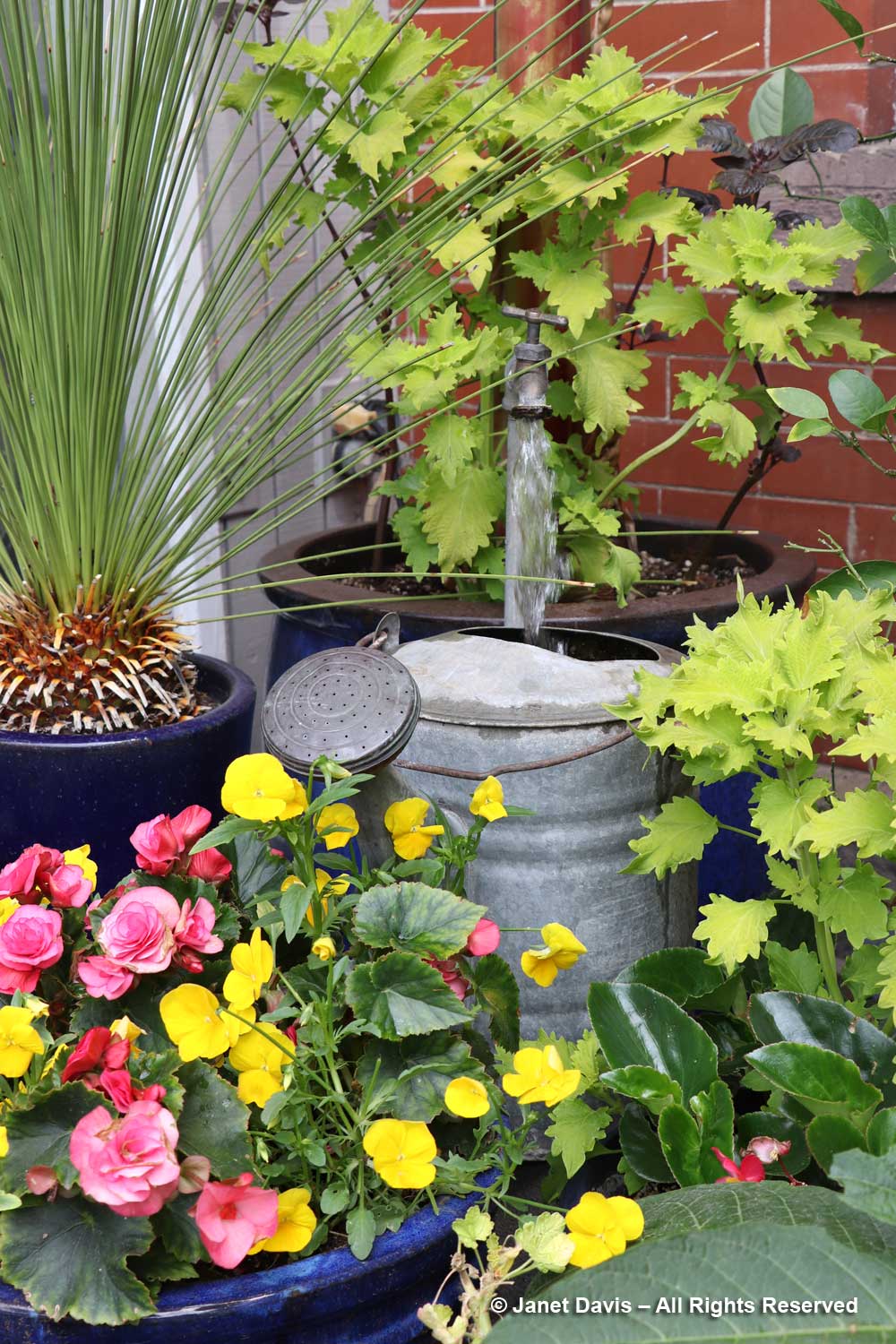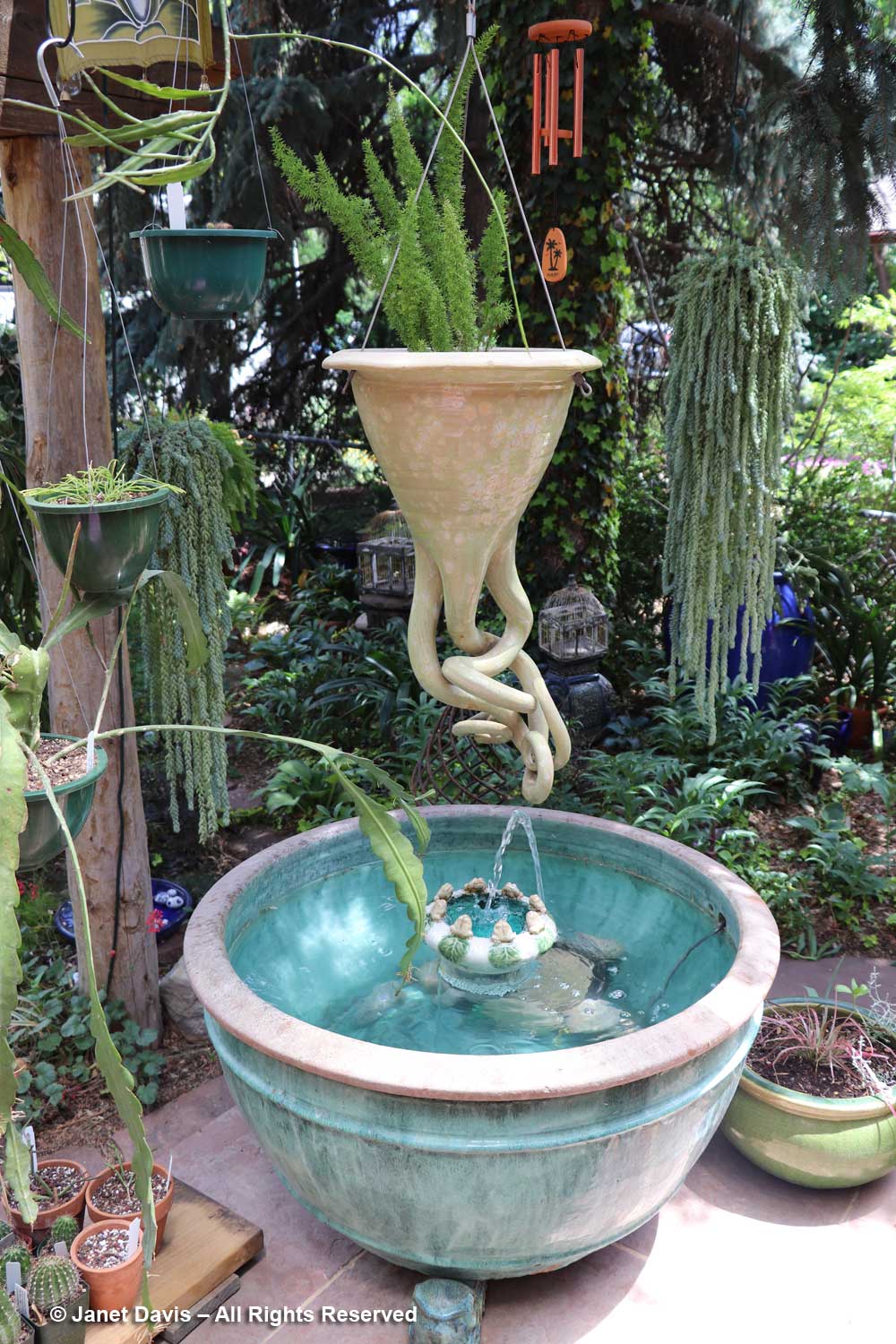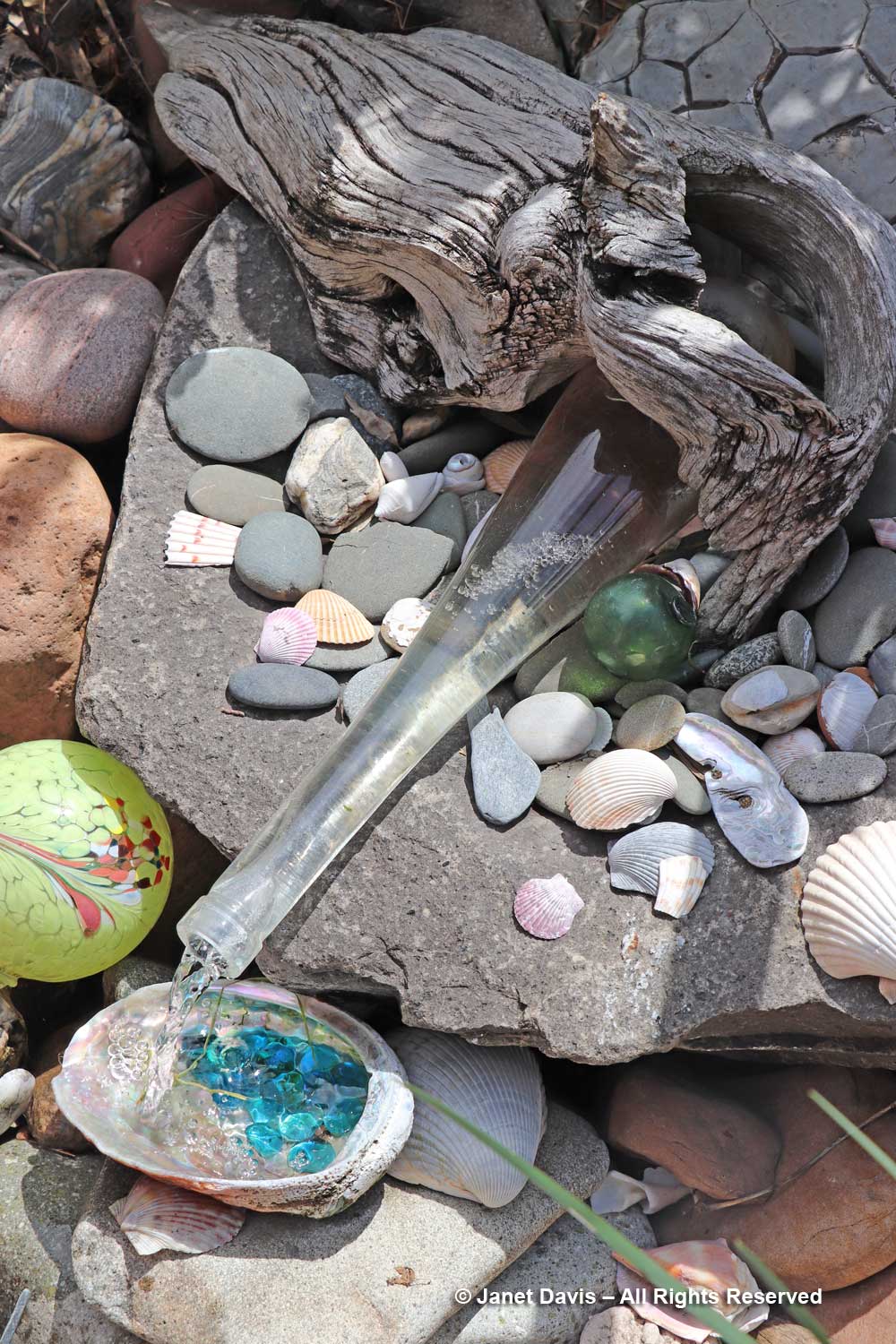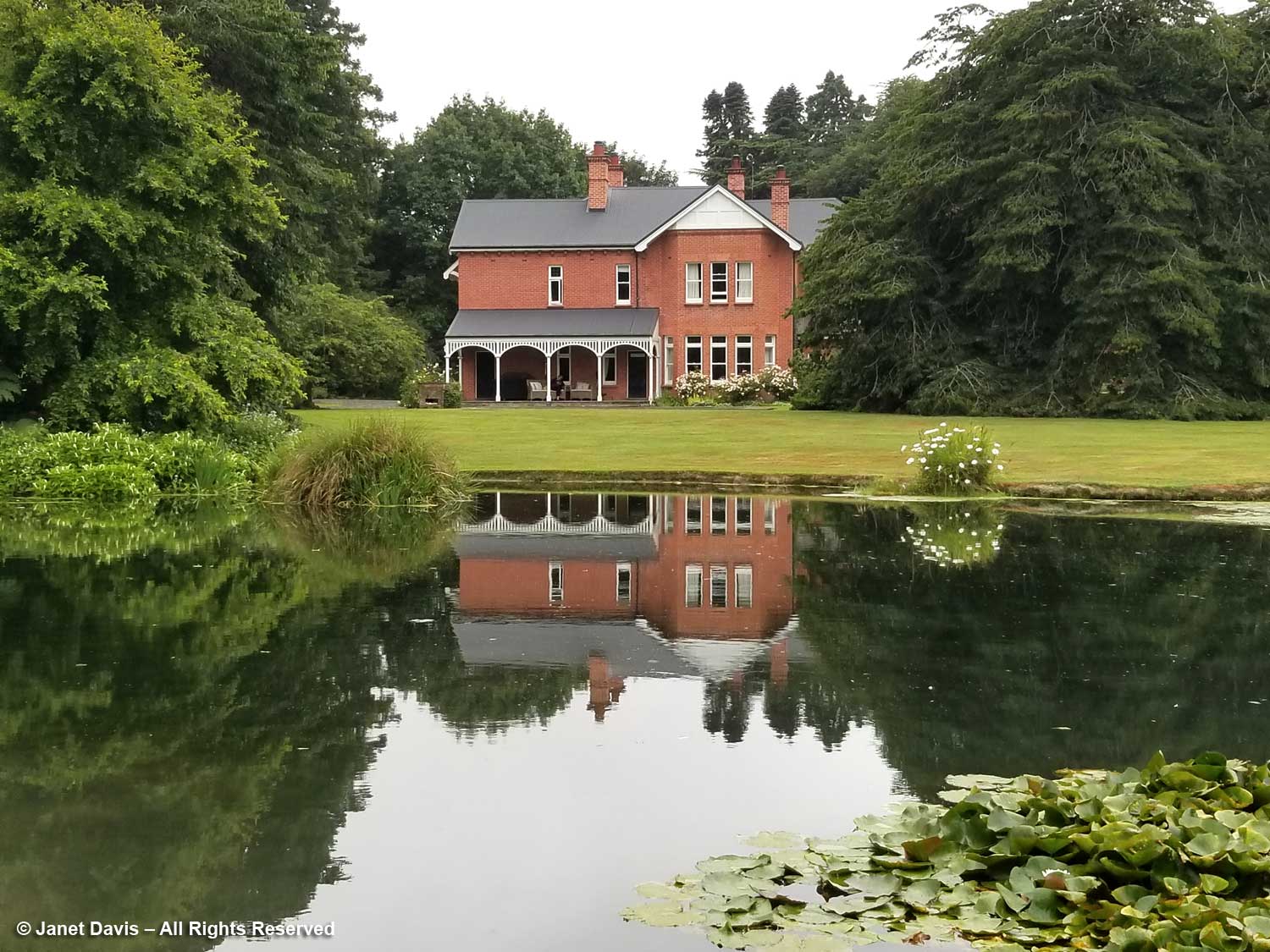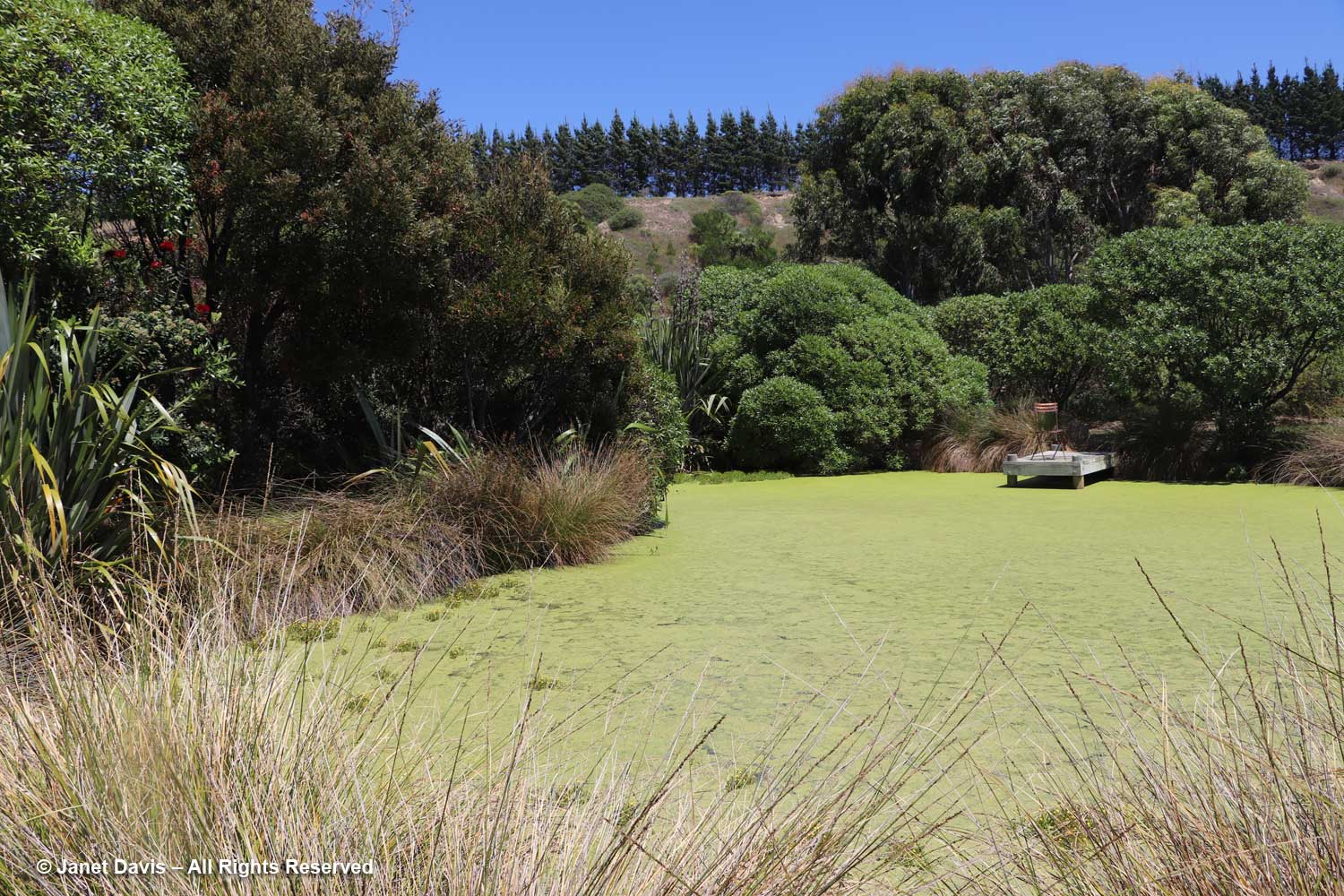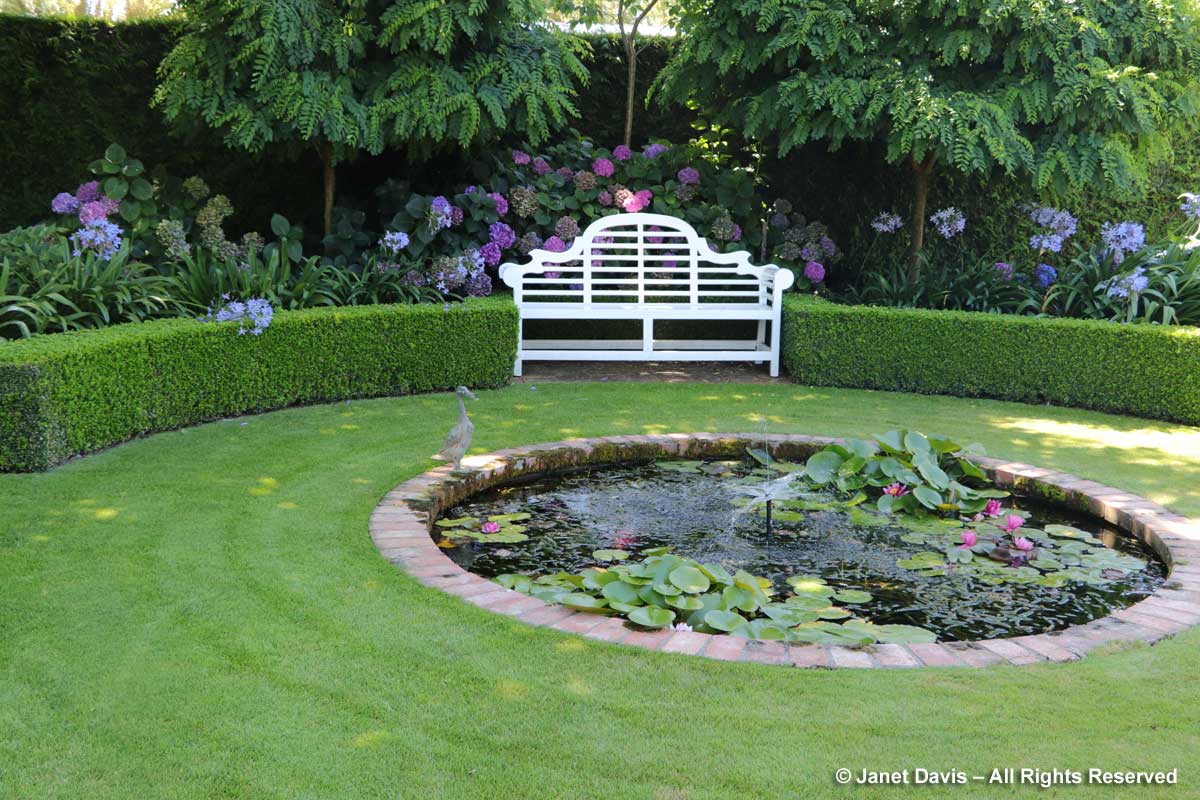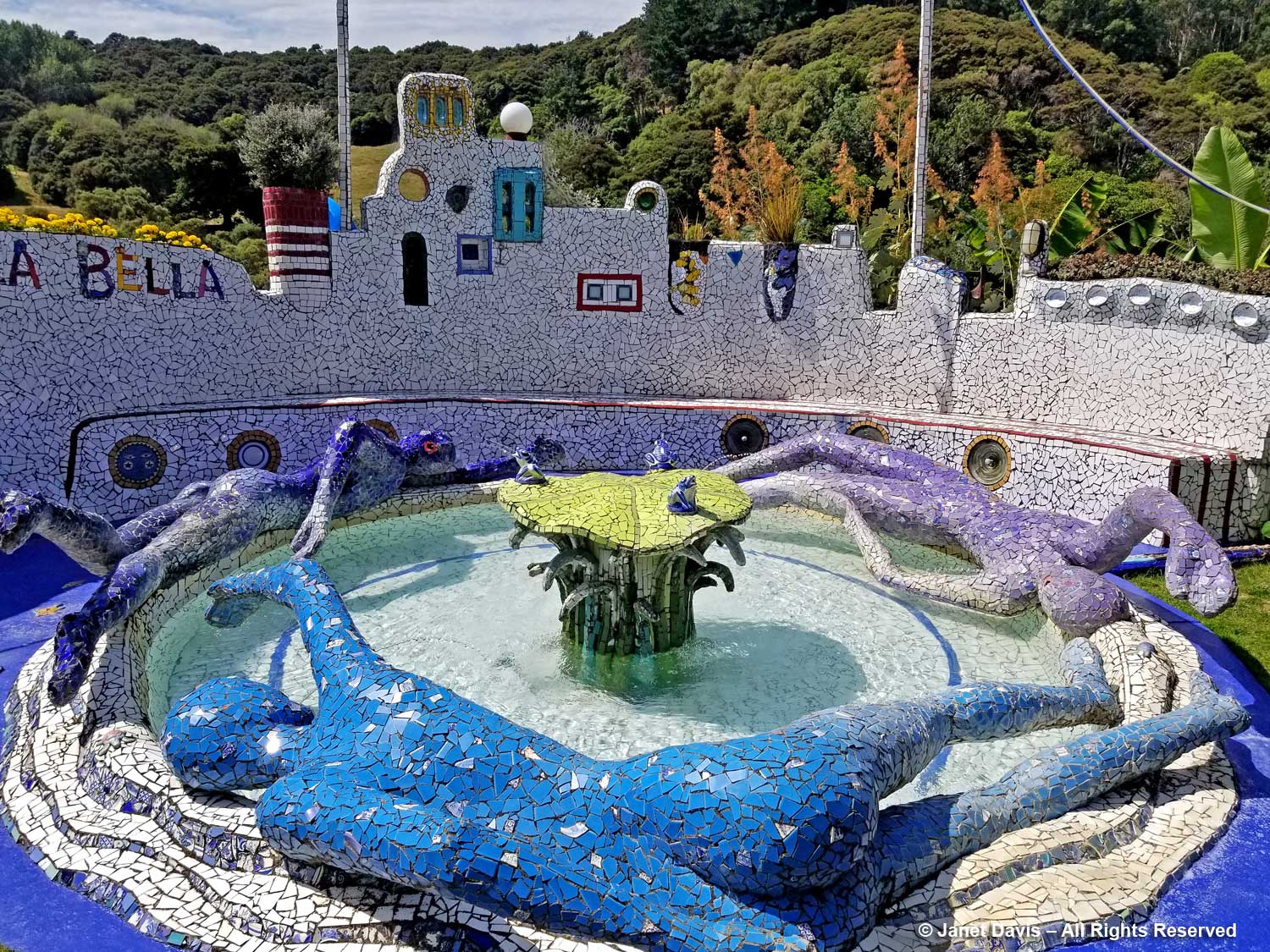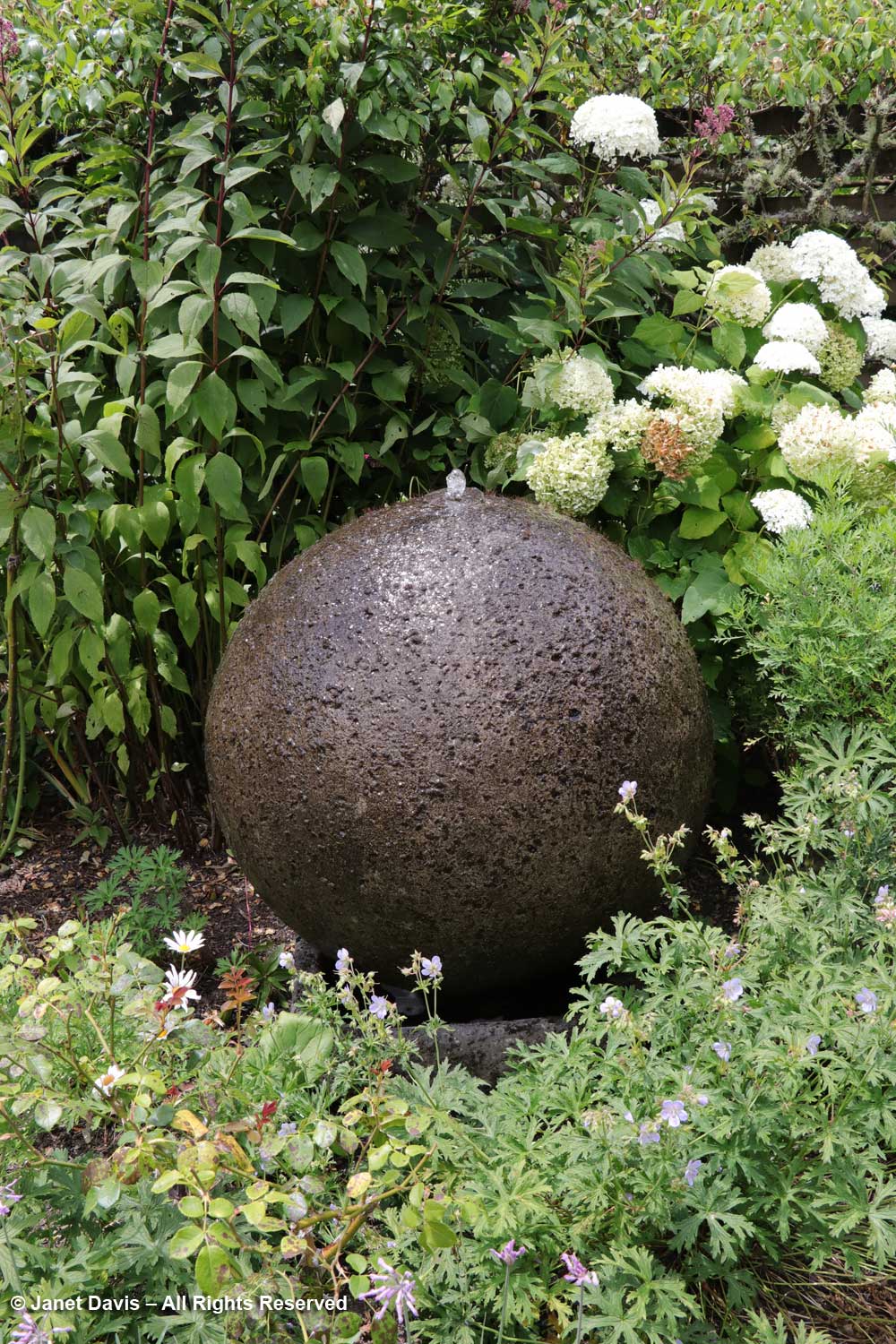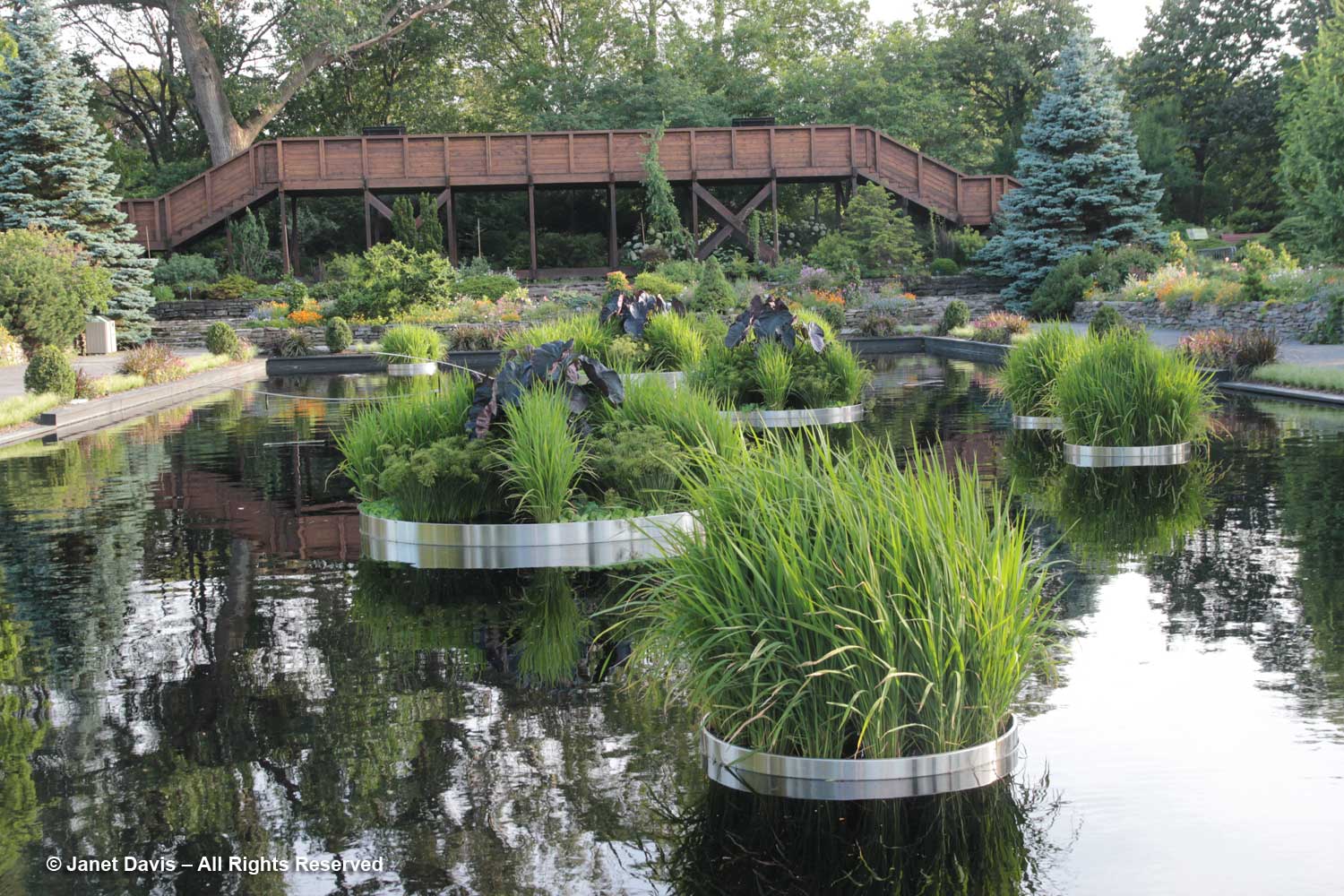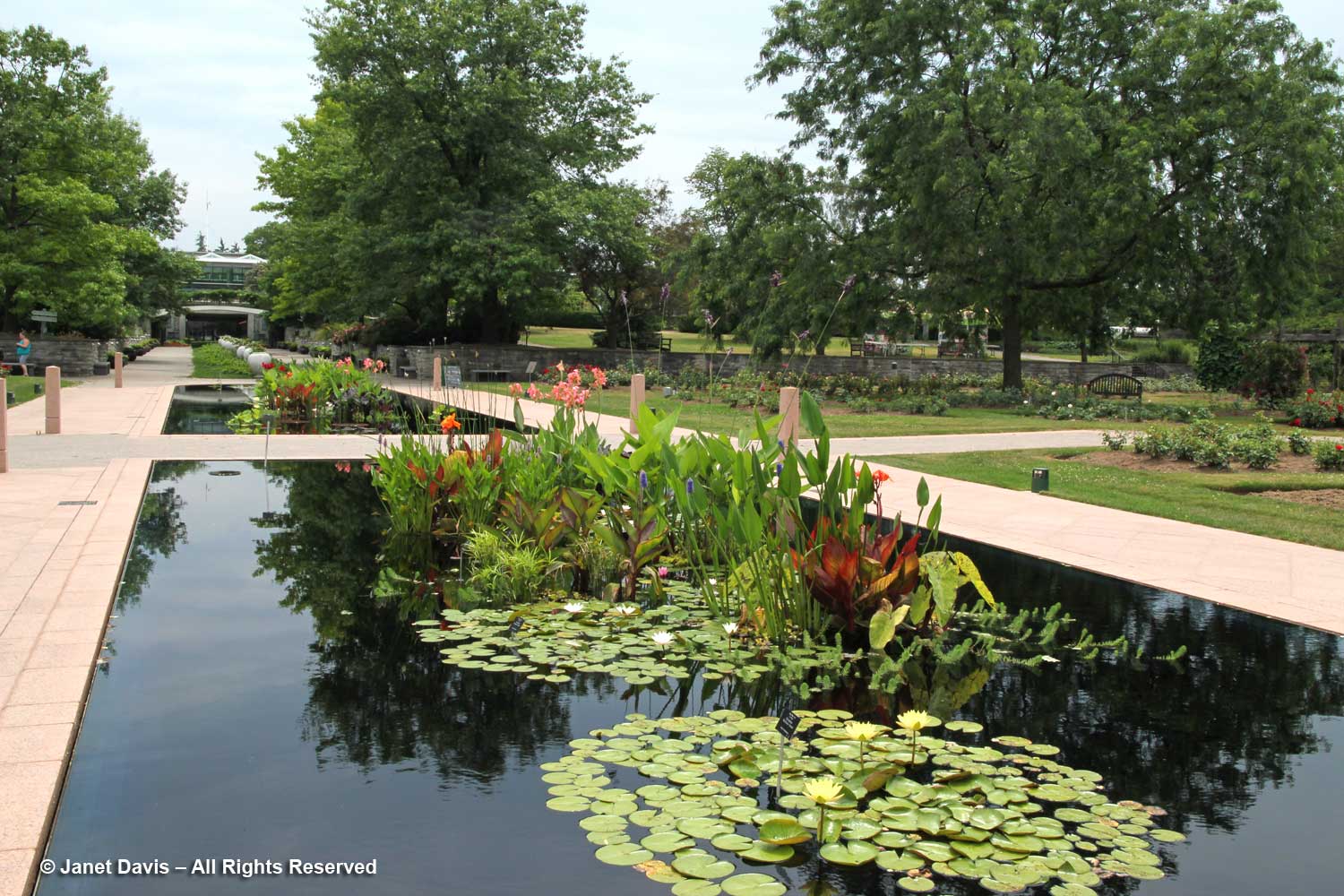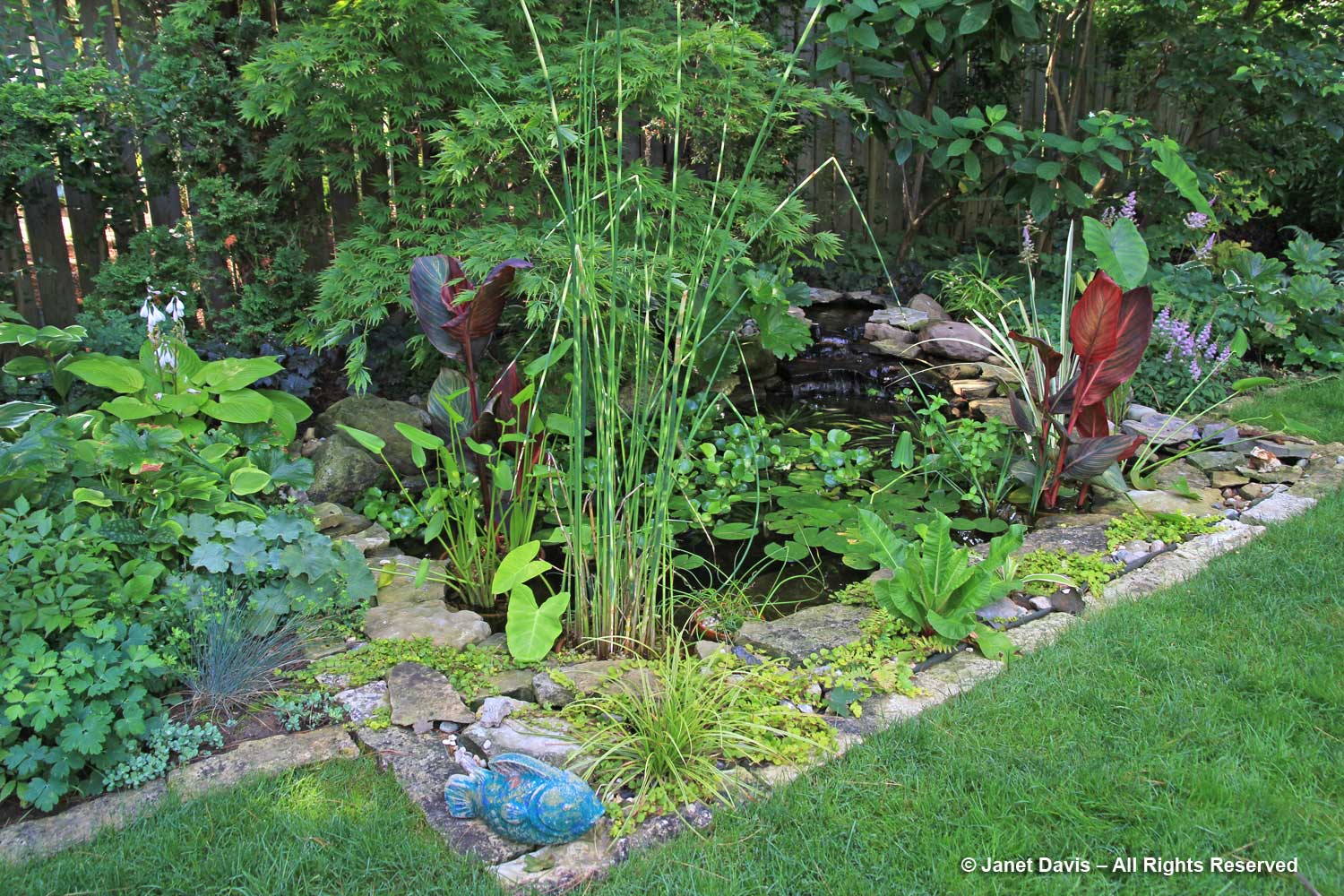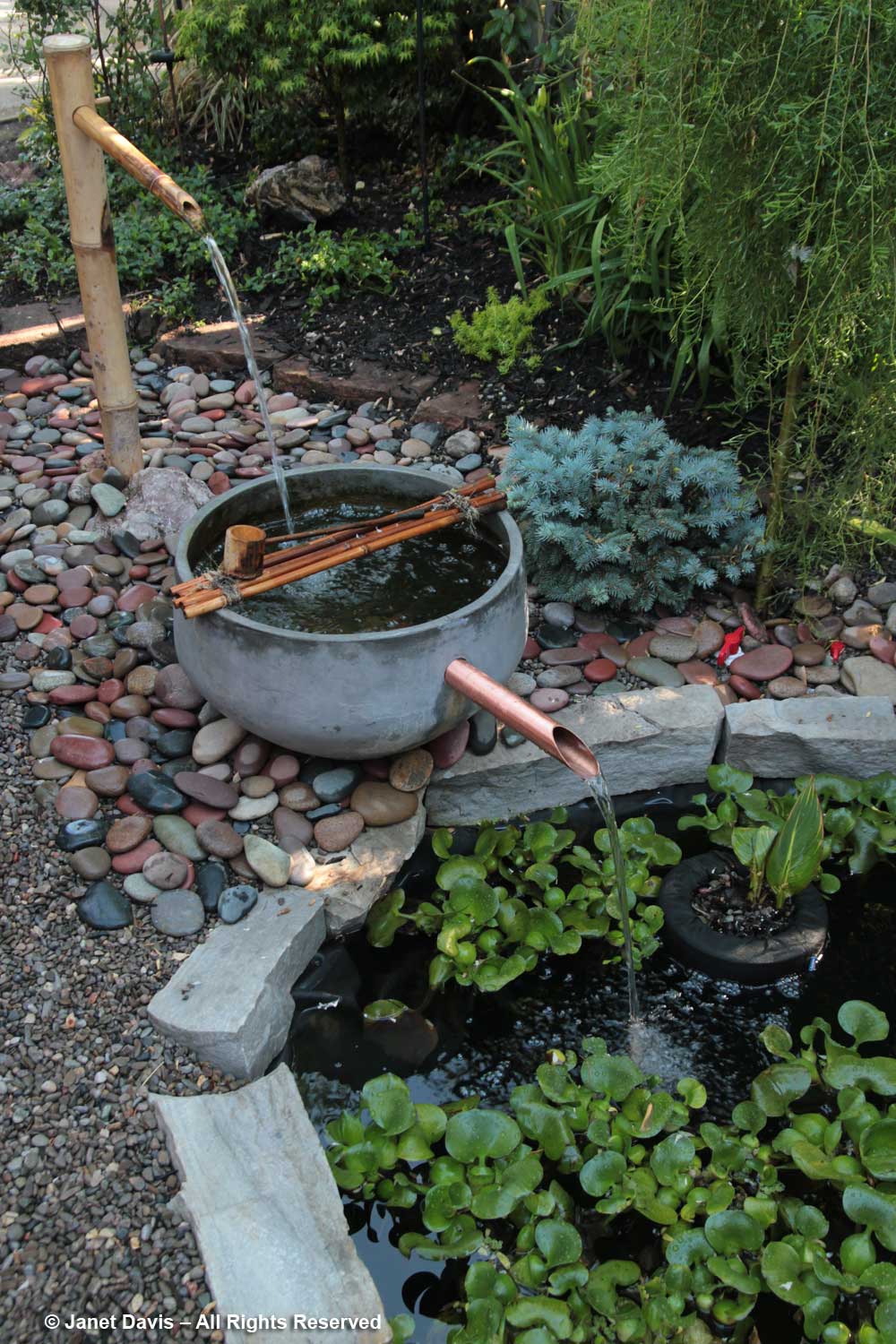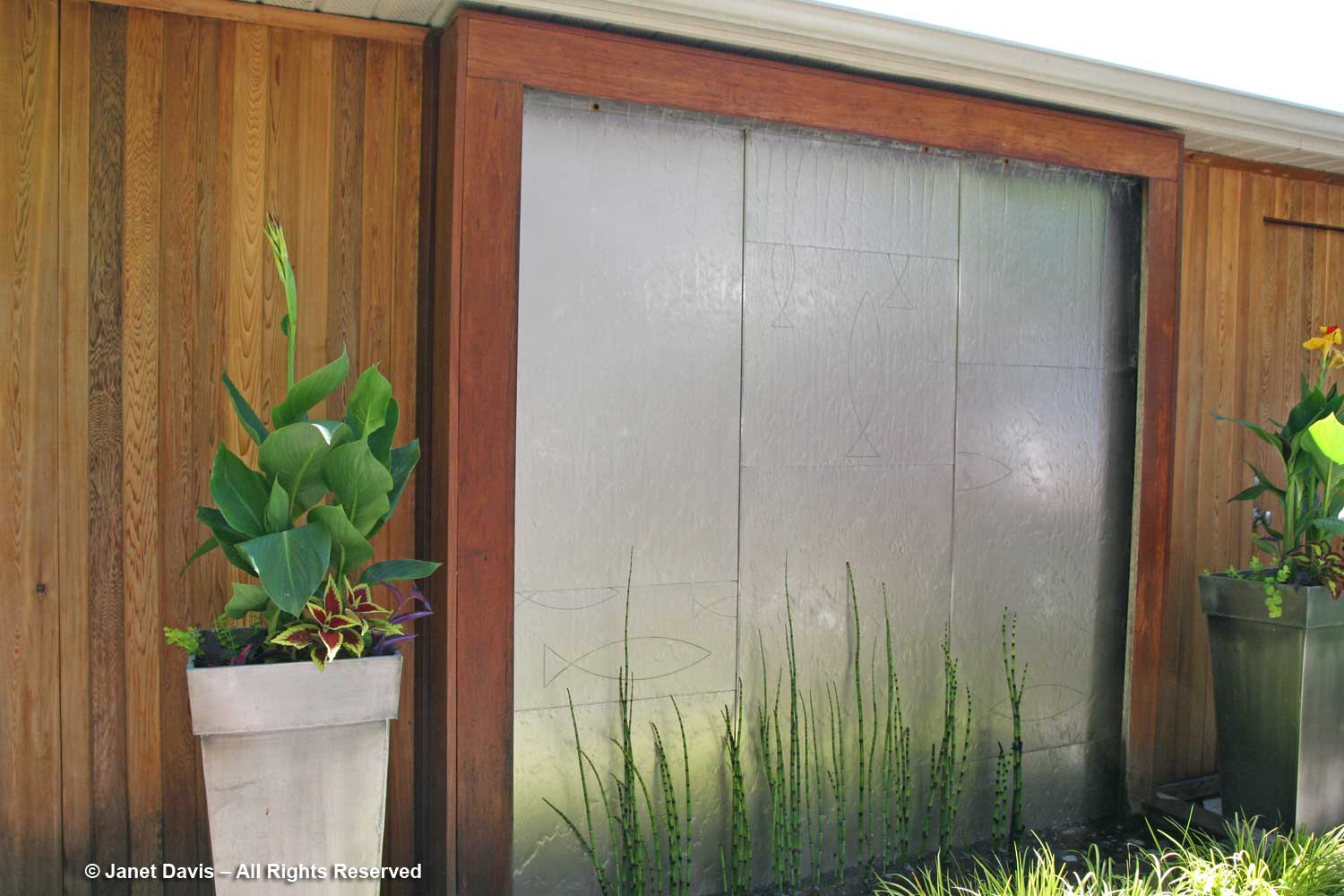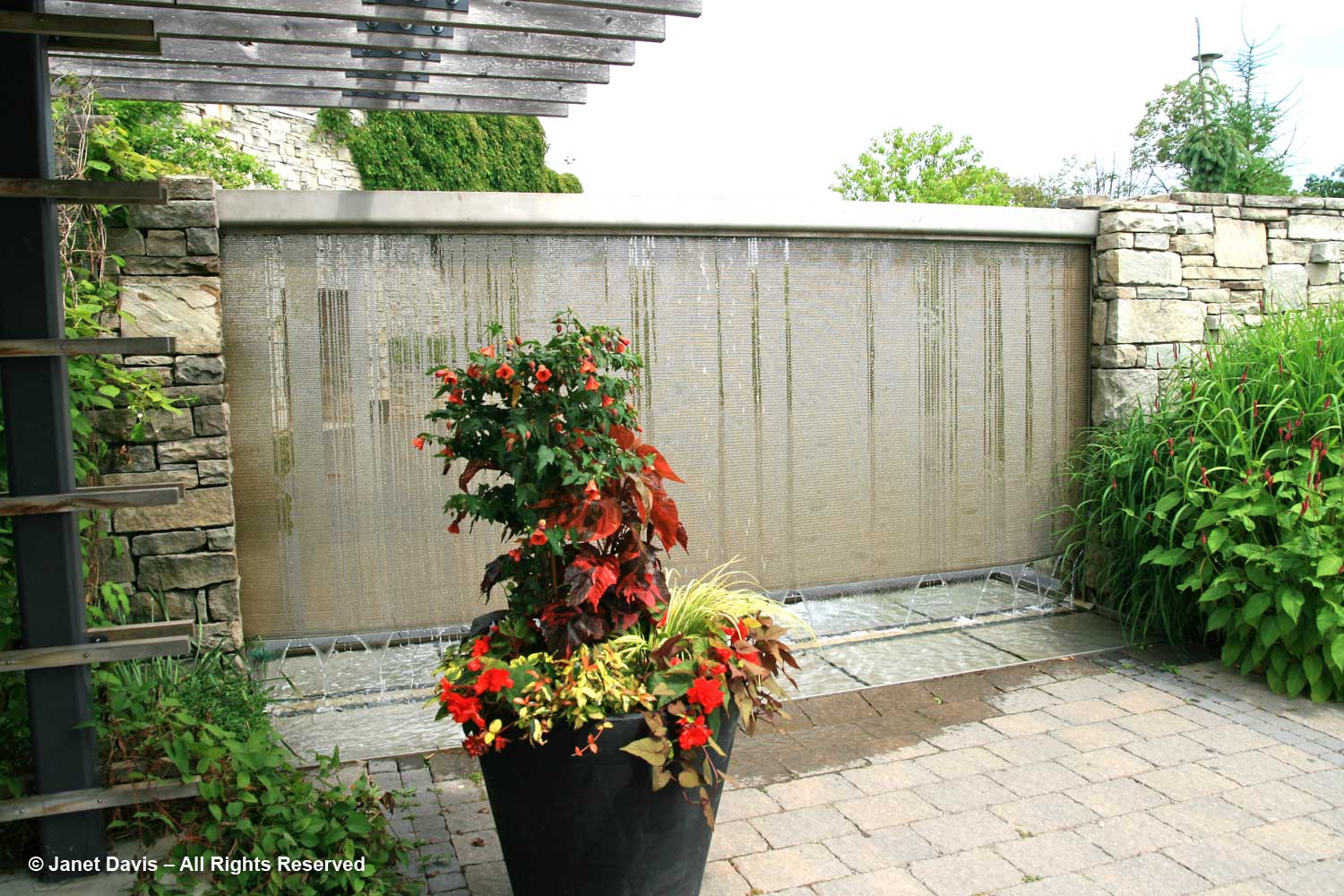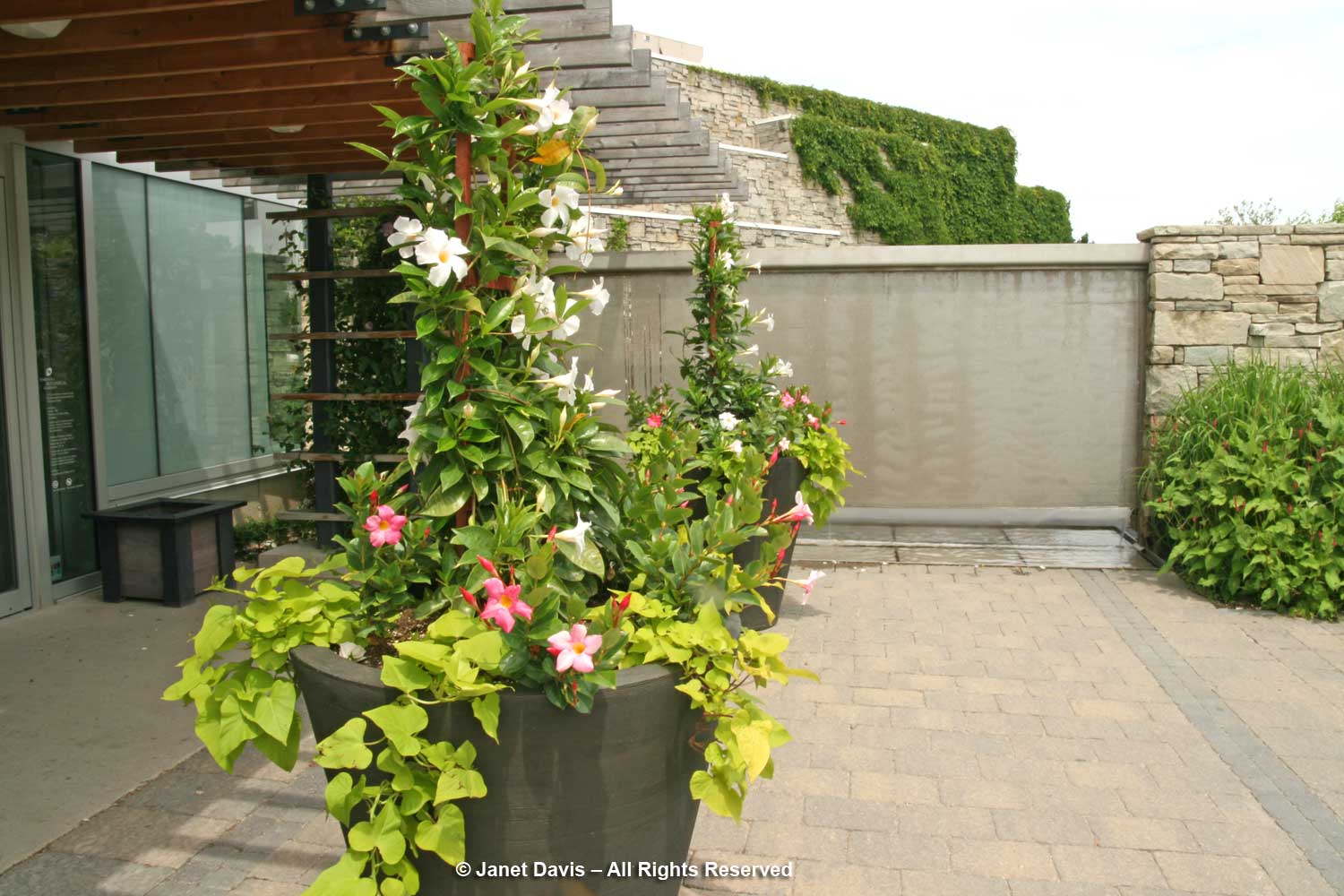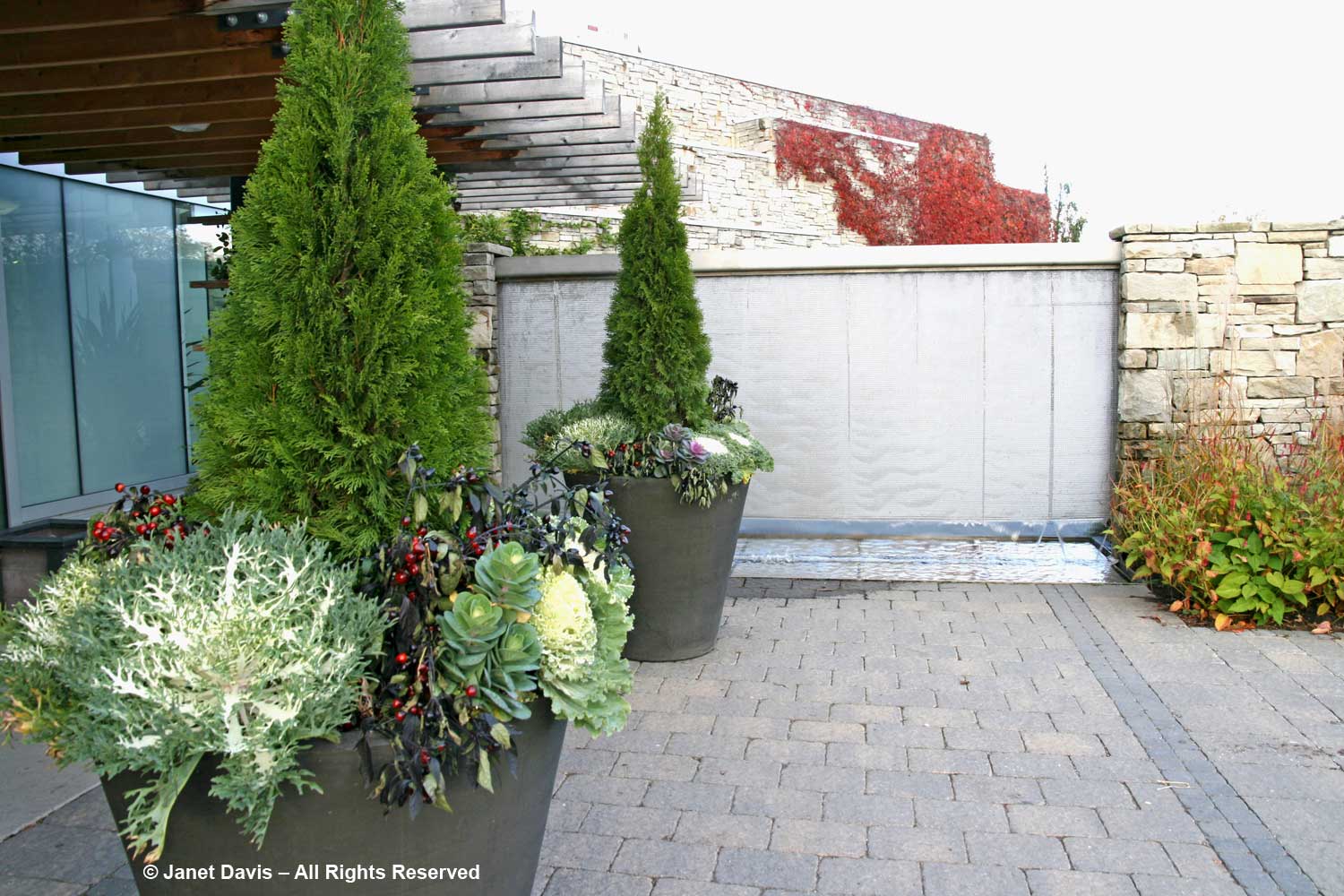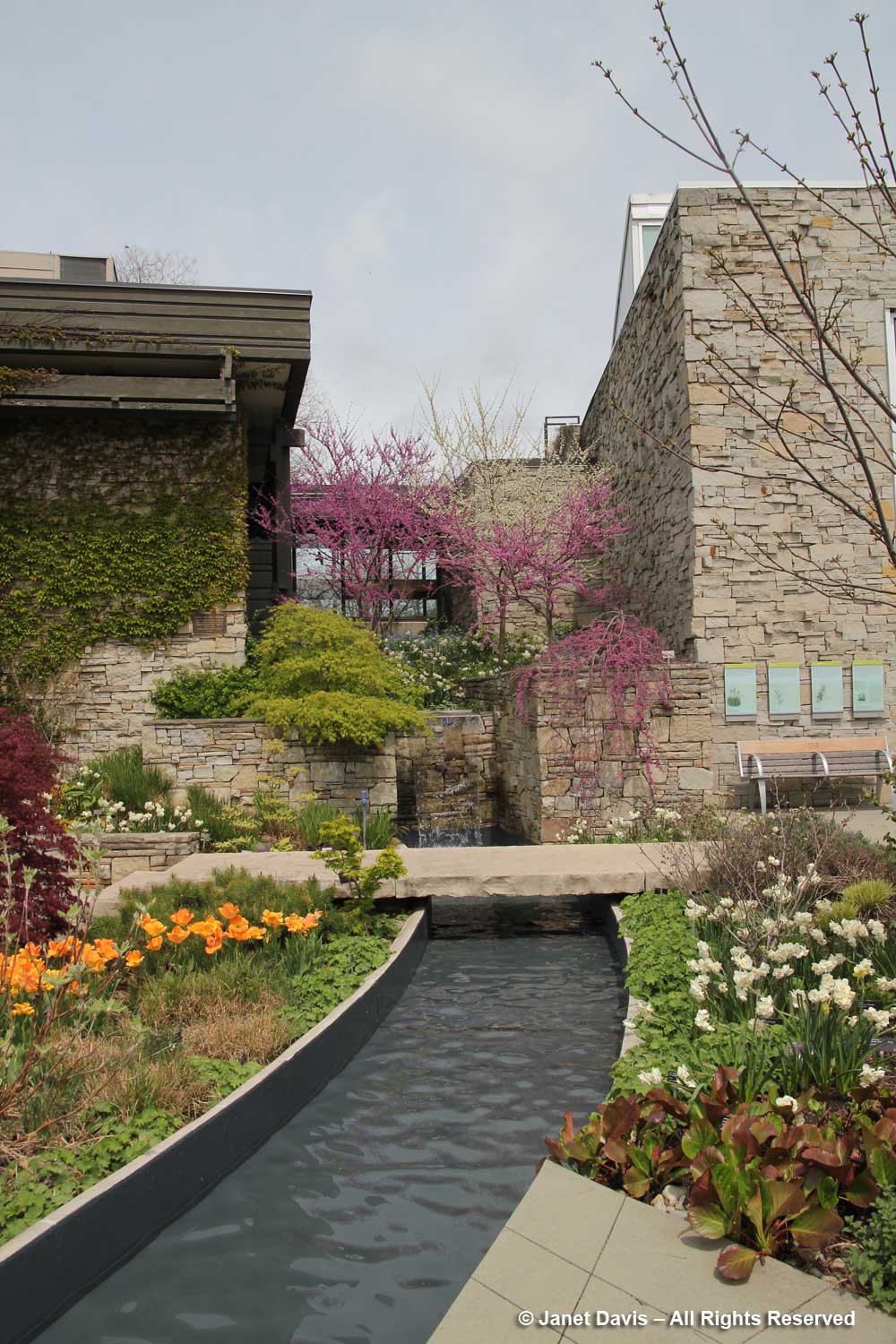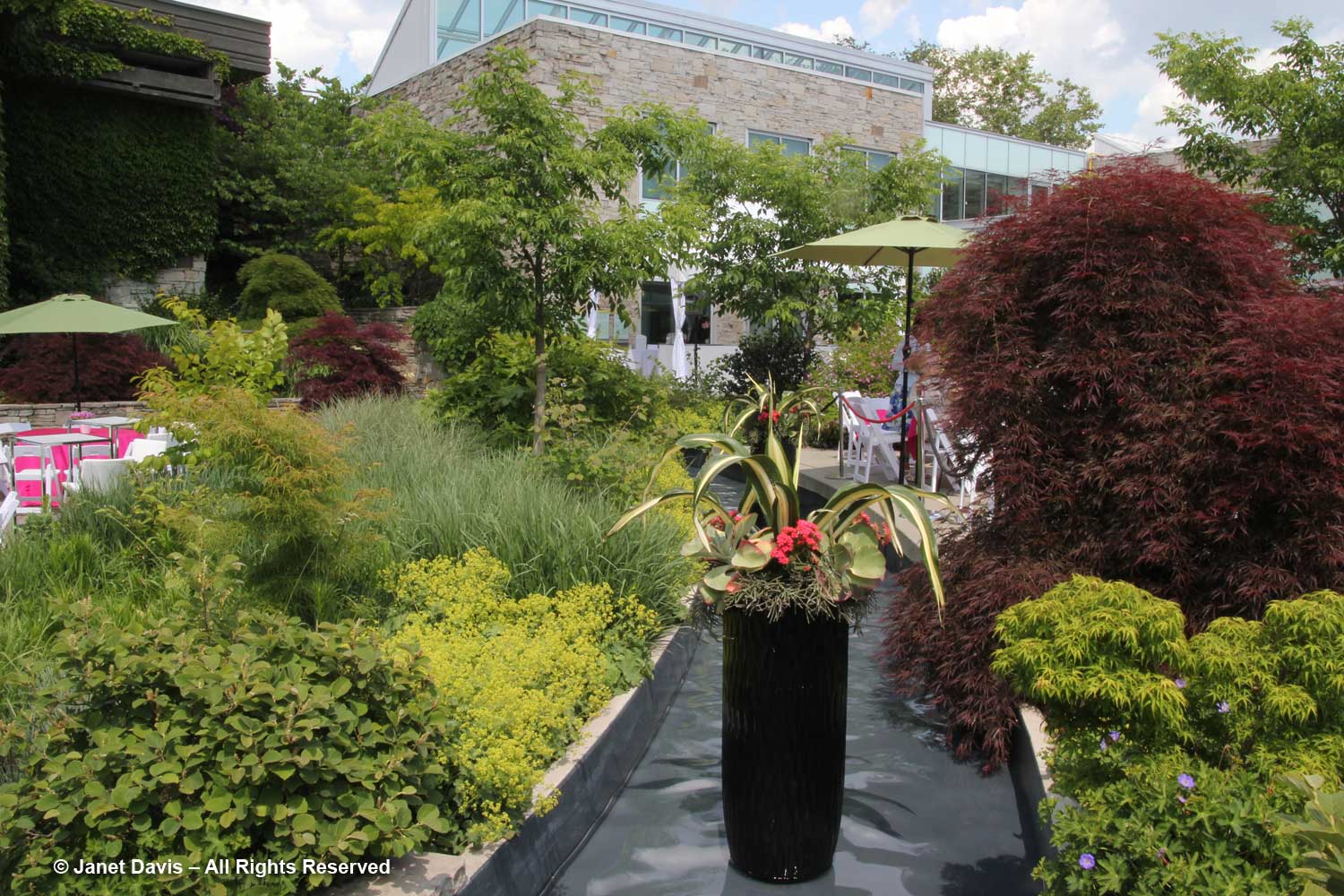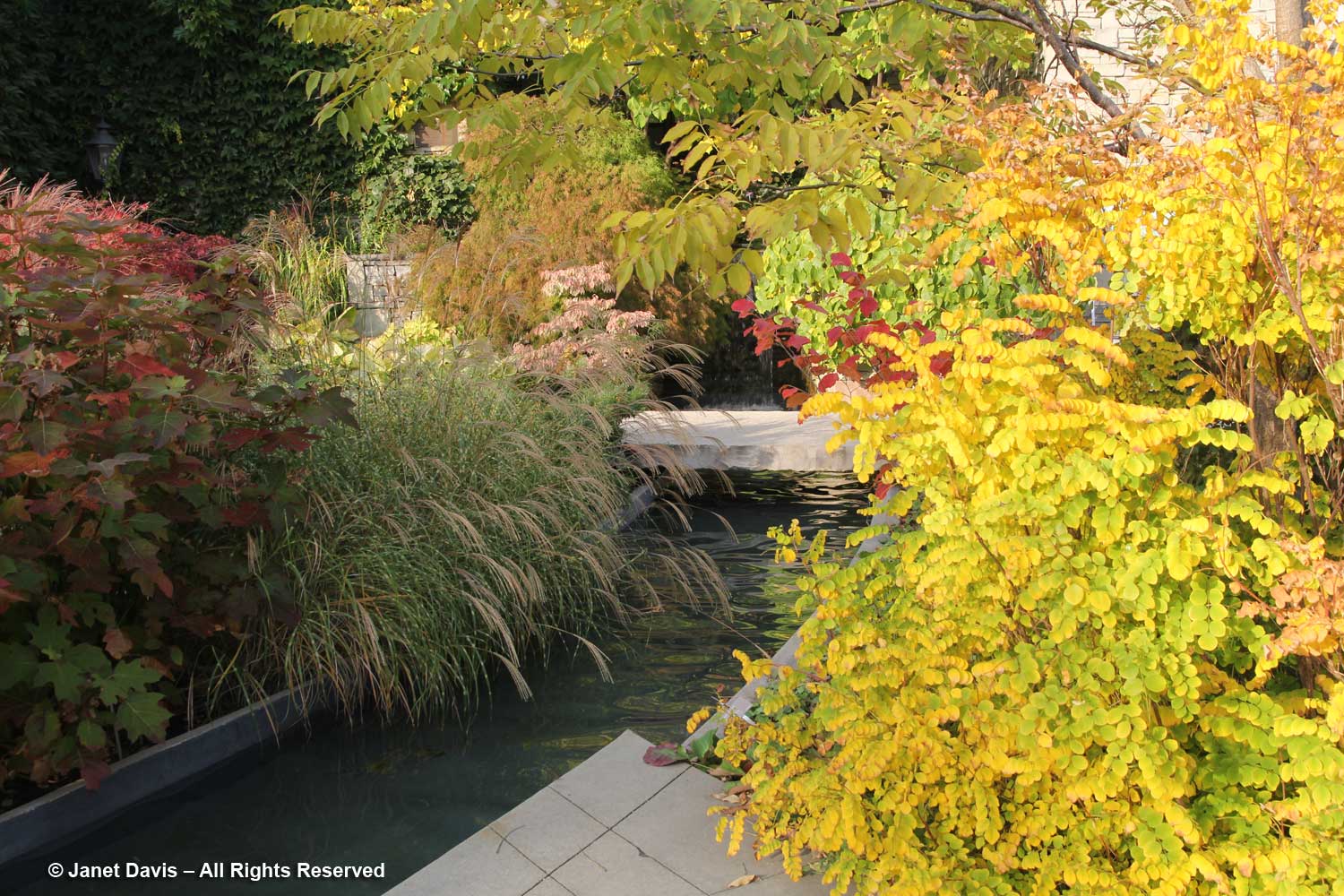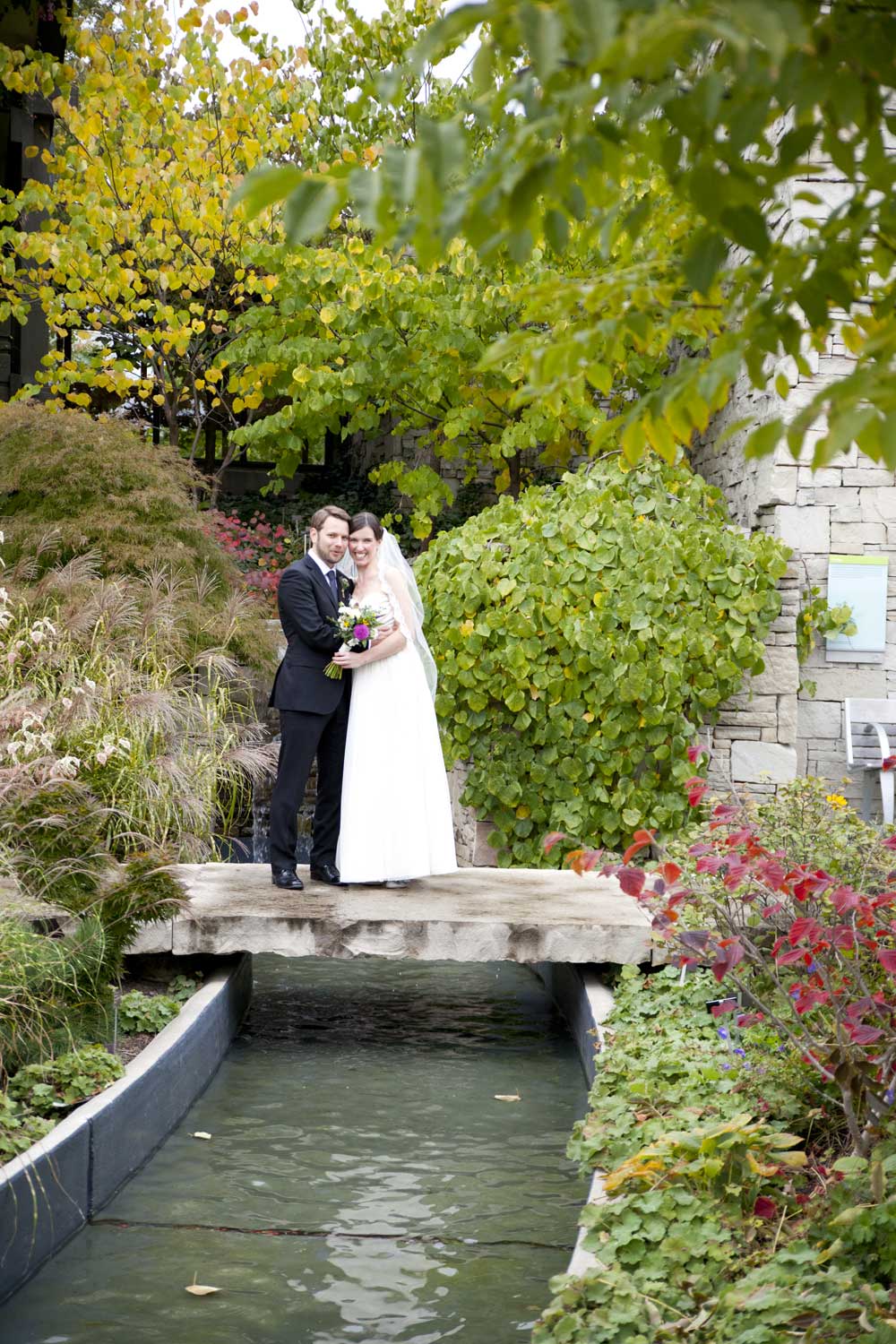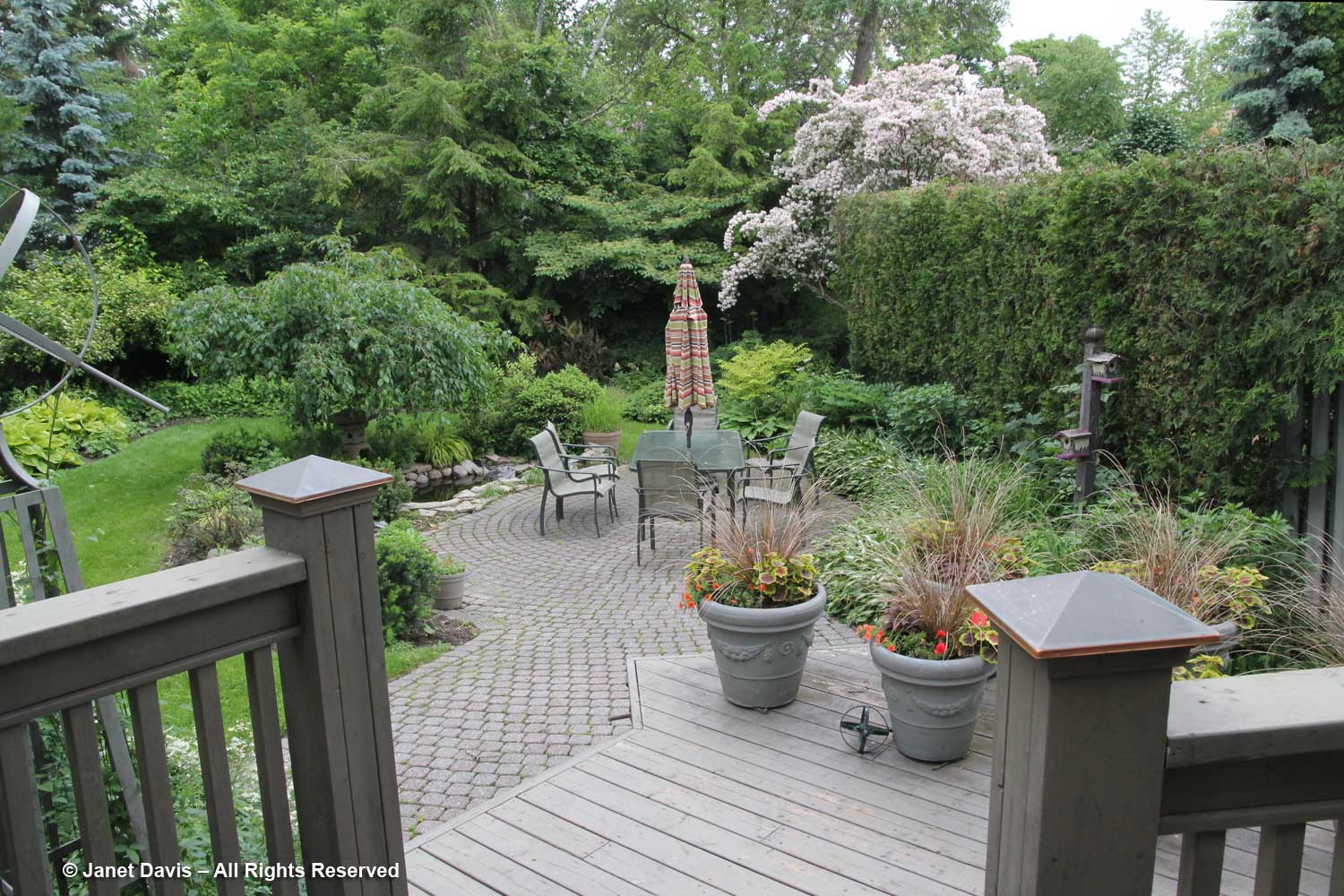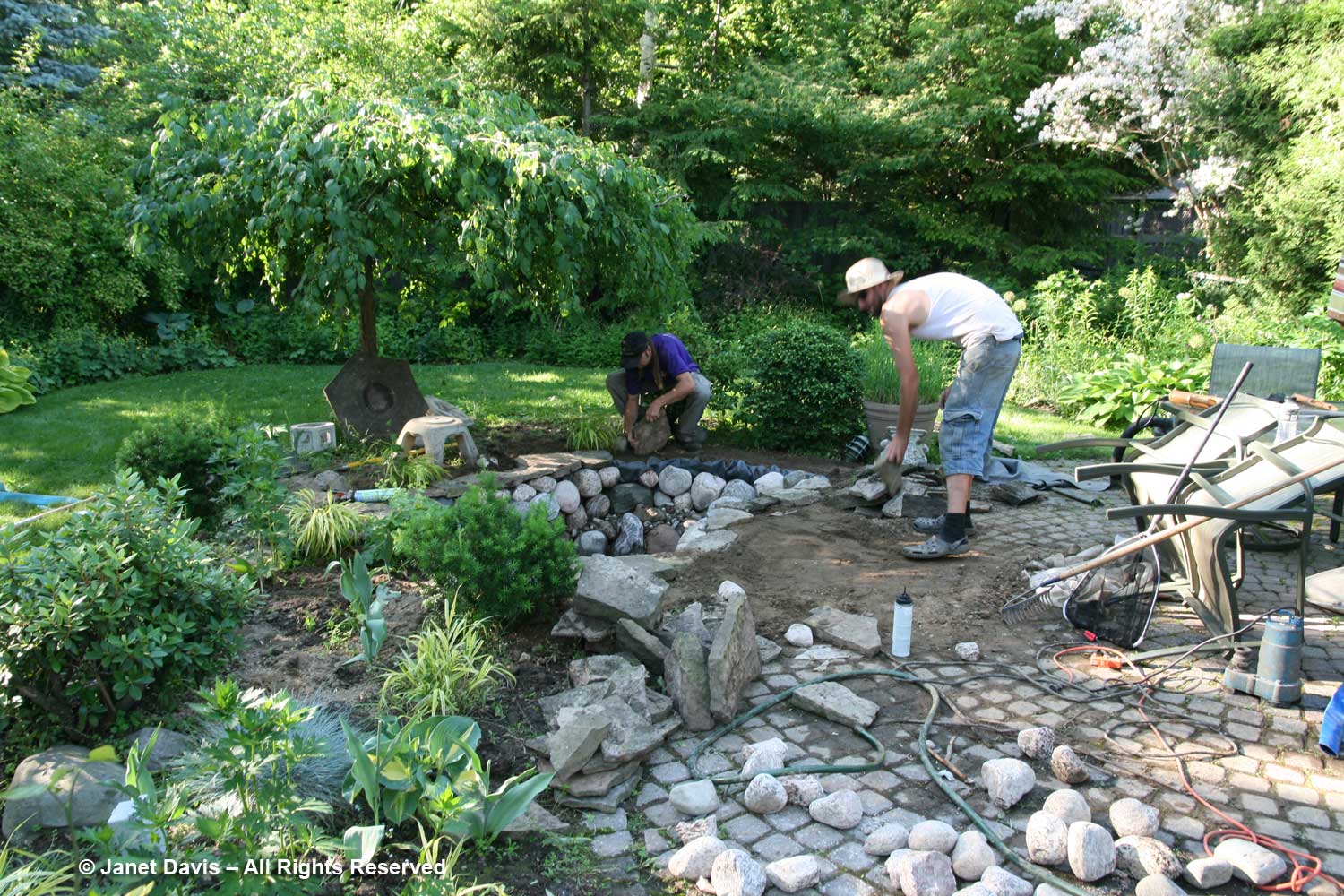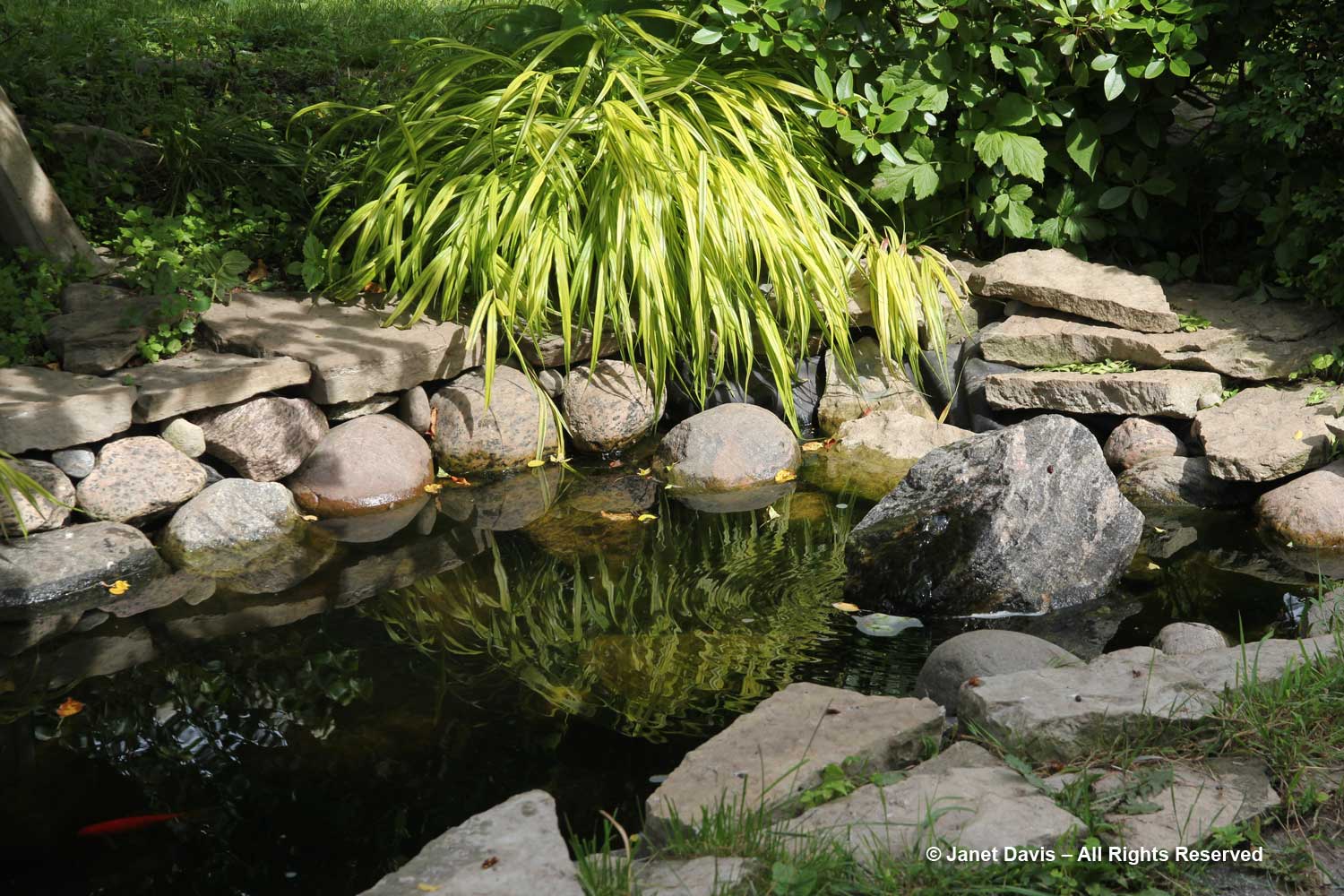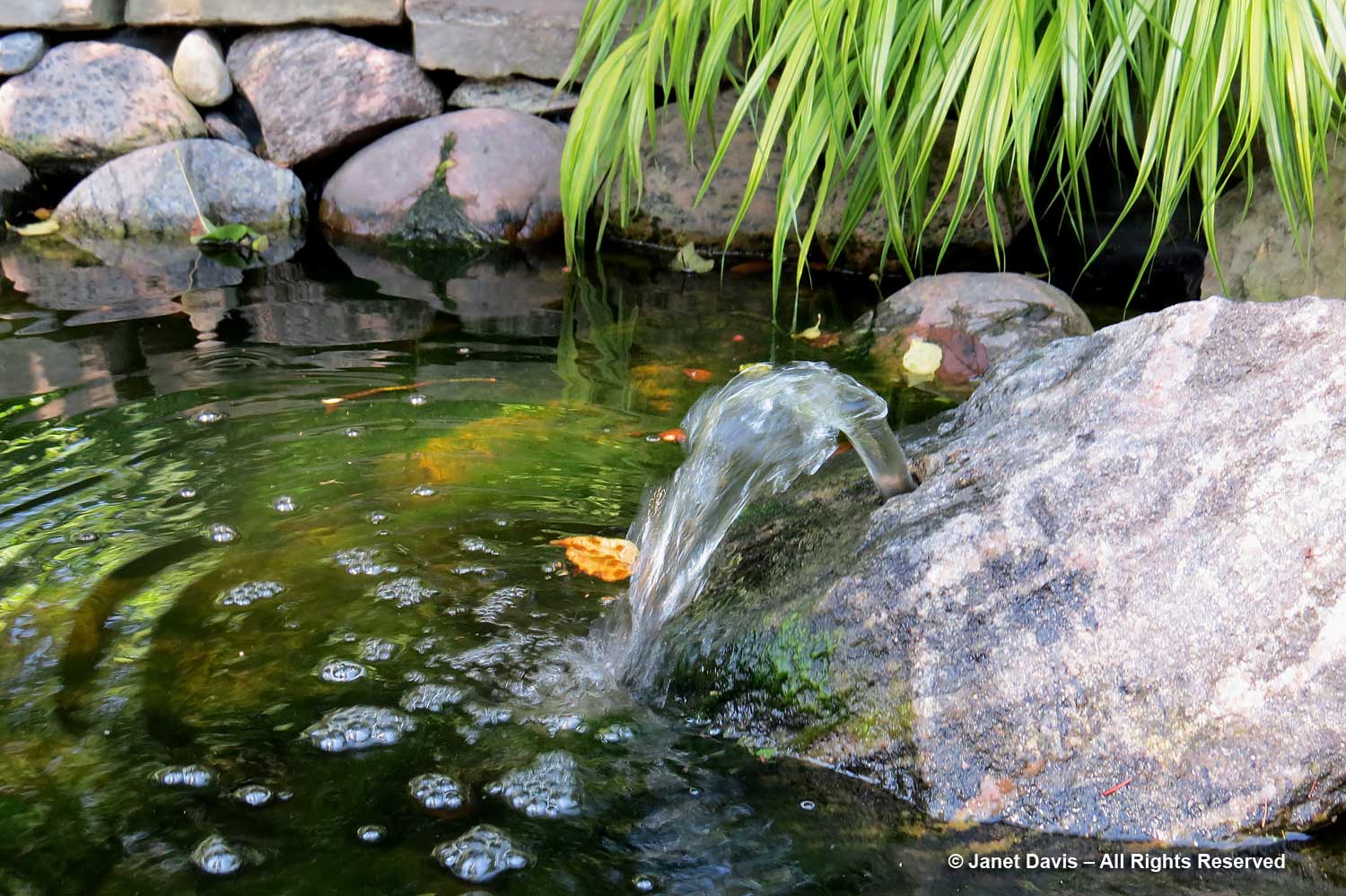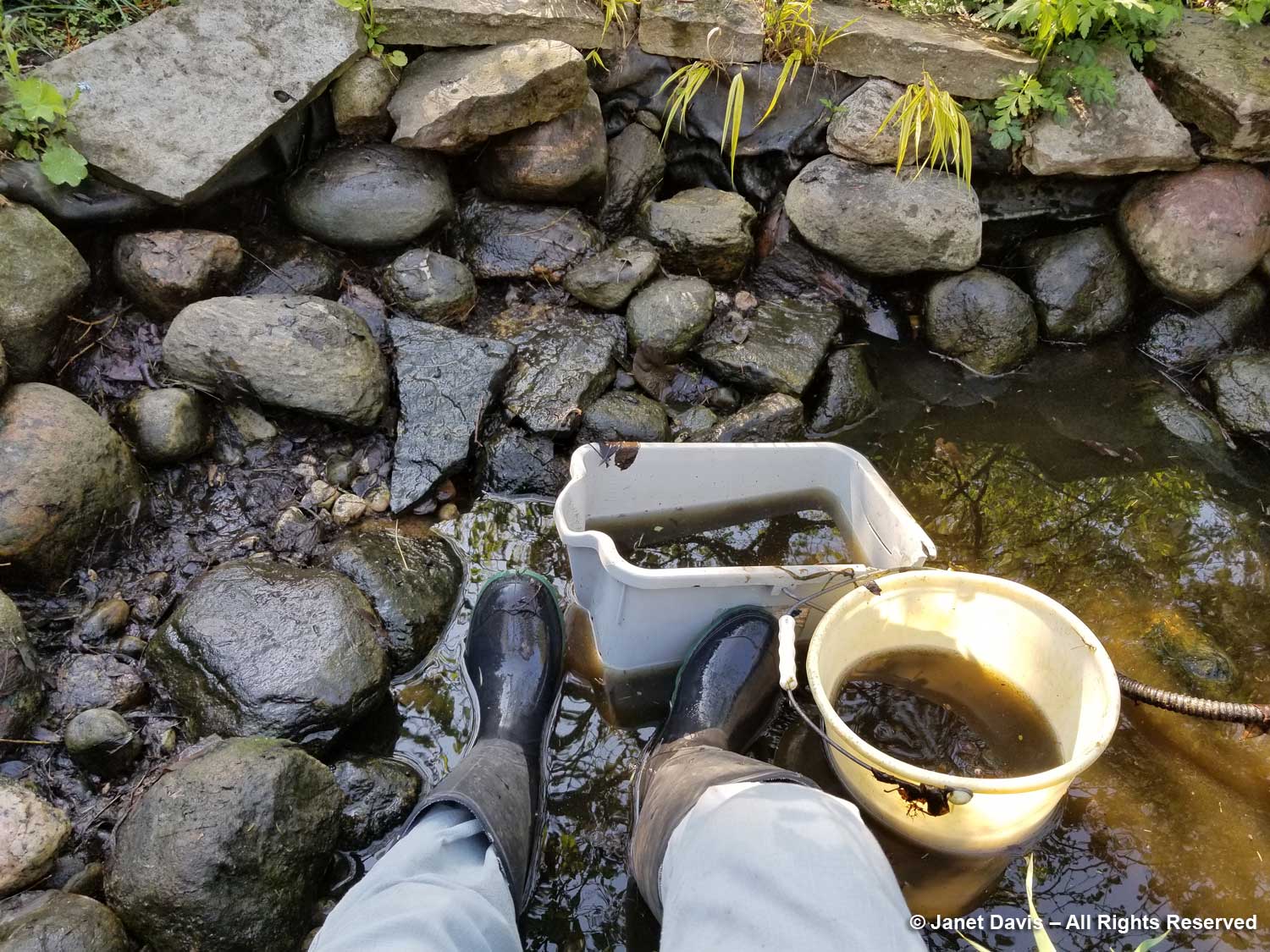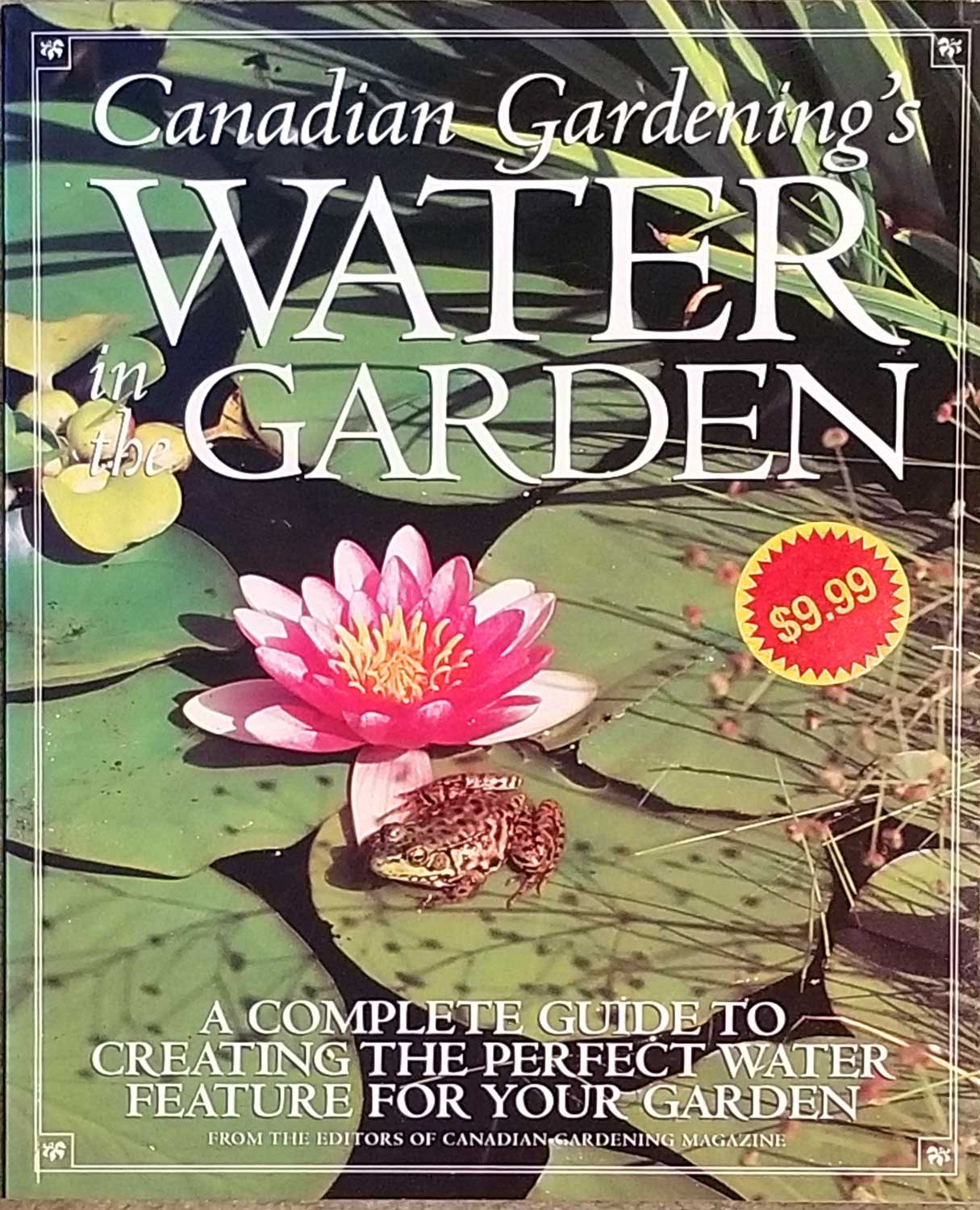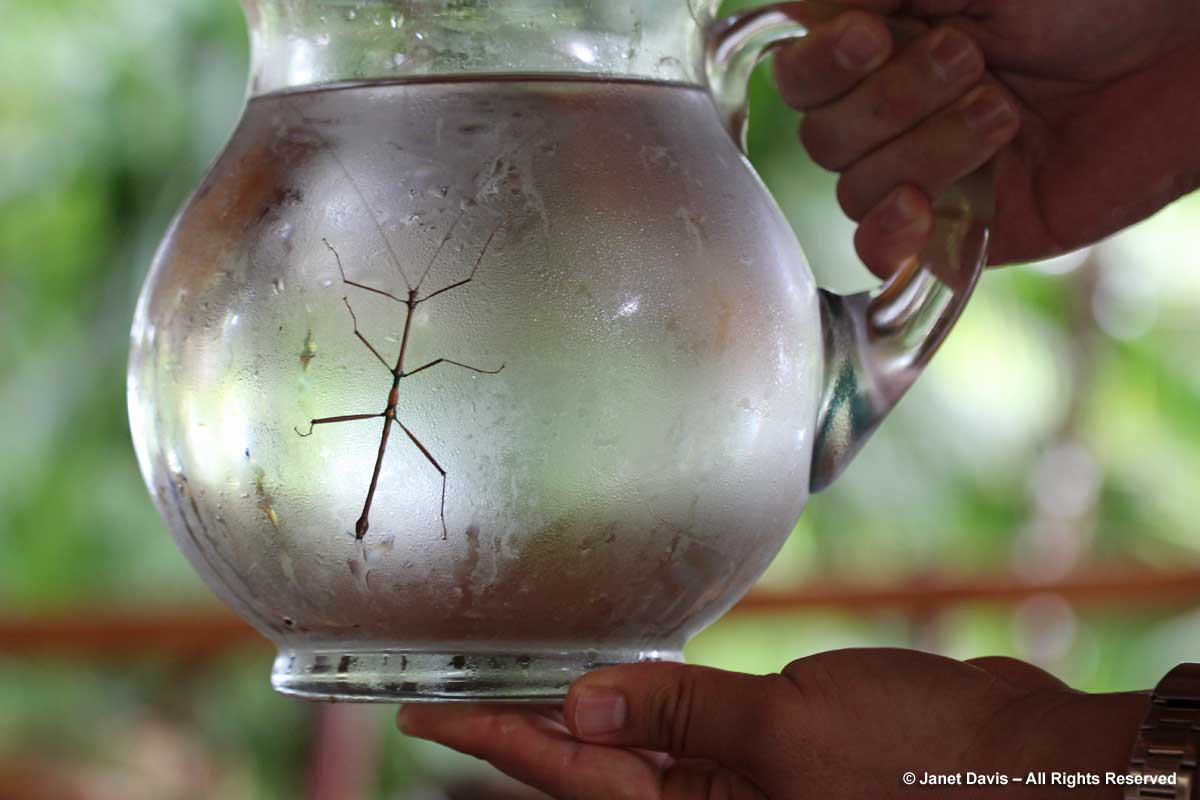I have been very fortunate to travel to Africa three times. In October 2014 (my second trip), we visited South Africa as part of a garden tour hosted by Donna Dawson. Apart from visiting Table Mountain and Kirstenbosch National Botanic Garden and wonderful gardens like Harold Porter National Botanical Gardens, Babylonstoren and Makaranga, we took part in a safari at the Southern Camp of Kapama Private Game Reserve. I wrote about that lovely adventure in three blogs starting here.
Kapama was adjacent to Kruger National Park and even though our time there was short (2 days), we saw an abundance of wild animals, including a black-maned lion who roused himself from sleep while we sat in our vehicle and watched.
In 2016 (my third trip), we attended a wedding at Lewa Wildlife Conservancy in Laikipia, north Kenya, followed by a few days on safari at a tented camp called Kicheche in Ol Pejeta Conservancy, below.
Our Kicheche guide Albert was very skilled, and I wrote a 3-part blog on our wonderful safaris at Kicheche starting here.
The most thrilling experience there – in fact one of my most exciting experiences anywhere – was watching two cheetah brothers mark territory, play and wash each other. Have a look at my YouTube video, below.
Kicheche was rustic (if a bush tent with a bathroom can be called rustic). Lewa Conservancy was different, in that it was also a festive social occasion, shared with friends from Canada and Kenya. Here I am with Lewa’s wonderful Maasai lodge manager, Karmushu.
But it was also much more luxurious. Thus, our beautiful Lewa Wilderness accommodation was set on the edge of a hillside leading down into a valley, with a little terrace and chairs outside. That proximity to the wild made our first night there very memorable.
Though we had spent a few days acclimatizing in the Nairobi suburb of Karen (including touring ‘Out of Africa’ writer Karen Blixen’s house) prior to flying into Lewa Downs on their own air strip….
…..we were very ready to sleep, especially given the welcoming four-poster beds in our little house, below. So I was in a dead sleep in the middle of the night when I awoke to a strange sound, like shells sliding slowly along a hard surface, very nearby. It was as if…. as if….. a large animal was dragging its paws as it settled itself onto the still warm polished concrete patio outside our shutters! “Doug!” I whispered. “There’s something outside!” I had to call a little louder to wake him up. “Doug, listen! I think it could be… I think it’s… a lion!” Then came the sounds again. Lions have retractable claws on their paws! How sturdy were those windows? Had we shut the door tight? “I’m getting into your bed,” I whispered, lifting the mosquito netting, putting my bare feet on the floor and scooting under his netting. We lay there, listening. Then there came a huge heaving sigh, just feet away “Uuuuahhhhahh.” It had to be a lion! We stayed awake for a long time listening, but eventually fell asleep again. By morning when we peeked out our shutters, there was no sign of our guest. We were excited to share the news with our friends under the pergola at breakfast, but before we could say anything, someone blurted out, “Hey! Did you guys see the lion this morning?”
Between wedding events, we were able to enjoy a few short game drives at Lewa.
At 62,000 acres (250 km2), it was established as a conservancy in 1995 on the site of a cattle ranch that had been owned by the Craig/Douglas family from 1922. Before becoming a conservancy, the family had established the Ngare Sergoi Rhino Sanctuary to protect endangered black rhinos from poaching for their horns. It is estimated that Kenya’s black rhino population had declined from 20,000 in the mid-1970s to just a few hundred by 1986, when the sanctuary was formed by the Craigs and Mrs. Anna Merz. We watched a mother black rhino and her calf being walked by rangers….
….. who waited while the rhinos grazed.
We saw some of Lewa’s estimated 400 migratory elephants as they came close to our vehicle…..
….. and dispersed to eat acacia foliage nearby.
We watched a critically-endangered Grévy’s zebra (Equus grevyi) – the largest living wild equid – feeding on grasses.
There were beautiful reticulated giraffes (Giraffa camelopardalis reticulata) browsing on thorn trees. The population of reticulated giraffes in east Africa has declined by half in the past 30 years from 36,000 to around 15,000, leading in 2018 to their ‘endangered’ designation by the IUCN. With wildlife conservancies like Lewa offering protection, their numbers are now starting to rebound.
The giraffe neck is one of nature’s miracles. Giraffes are the tallest land mammals extant. The long neck was originally thought to have evolved in order for giraffes to compete successfully in browsing on high trees, i.e. the “competing browsers” hypothesis. But since giraffes feed during the dry season on low trees with their necks bent, as in the above photo, that theory has been challenged in favour of the “necks-for-sex” hypothesis. Evidently, the longest, strongest necks on males — used in their ‘necking’ form of fights — help eliminate romantic competition and therefore attract female mates.
Both hypotheses are given credence today. And whatever the case, the reticulated giraffe is a beautiful animal….
….. with a very sweet face.
I was fascinated by this video of Lewa staff working to remove a metal ring from a giraffe’s leg.
I’ve always been interested in nature’s evolutionary version of a “harem”, as with impalas, Kenya’s most common antelope species. Below we see a herd of female impalas and their dominant male.
There were vervet monkeys at Lewa, too.
The photo below shows a monkey walking the railing at Lewa Wilderness Lodge’s outdoor dining pergola, with the expanse of the beautiful conservancy behind it.
Our game drive wound around a promontory rising out of the savannah.
We saw lots of interesting birds at Lewa as well, including the beautiful superb starling, below.
The blue-naped mousebird had the familiar tuft of our male blue jays and cardinals.
Near Lewa’s abundant farm beds, there were garden areas with flowering aloes where the Hunter’s sunbird was nectaring, below.
This beautiful tapestry defines “garden” at Lewa….
And this.
I had a special tour of the Lewa farm by Will Craig. There were bananas, mangoes, papayas, citrus, pomegranates and all types of vegetables growing in rows.
Fragrant blackthorn trees (Senegalia mellifera) were in flower and alive with honey bees.
******
But where’s the music here? Given that this is the 20th blog in #mysongscapes of winter 2020, we can’t just be gallivanting around African savannahs looking at elephants!
Well, that’s where my first trip to Africa comes in, way back in 2007. As a 30th anniversary gift to ourselves, we signed up for a safari to several prominent game parks in Kenya and Tanzania, including Amboseli, Ngorongoro Crater, Maasai Mara, Tarangire and the Serengeti. It was an opportunity to be close to wild animals, like the elderly lion below taking a few moments of shade beside a safari vehicle in Ngorongoro Crater. It is also my very favourite travel experience.
Now I’m going to set the scene. We’re in the majestic Serengeti. Savannah grasses as far as the eye can see. The name “Serengeti” derives from a word used by the Maasai to describe the area, siringet. It means “the place where the land runs on forever”
It’s ‘sundowners’ time, i.e. cocktail hour…. and our safari group has been served drinks by our wonderful guides, who hail from tribes in both Kenya and Tanzania, which is where the Serengeti is located. (I was given this small photo of Doug and me on the occasion.)
I needed my glass of wine that day, for I had resolved to sing a little song on the Serengeti. I do love to sing. Not on stage, but at family sing-alongs at the cottage on summer nights; helping to lead the carols and songs at our annual Christmas skating party; at the occasional industry karaoke party; and… loudly… in the shower. The song I had in mind was one I’d heard as a young teen in Vancouver, when my mom took me to see Harry Belafonte and his special guest singer from South Africa, Miriam Makeba. I think it was 1960, Miriam would have been 27 years old. I was transfixed by this young woman who could emanate clicks from somewhere deep in her throat, in the manner of the Xsoha language of her home country. One of the songs she sang was The Click Song. Over the decades, Miriam Makeba would become known as ‘Mama Africa’. Most of all, I loved a song that Belafonte and Makeba sang together in Swahili – the language of Kenya and Tanzania – called ‘Malaika’, or ‘My Angel’ in English. Written by Adam Salim in 1945, it told of a young man who was sad because he didn’t have enough money for the dowry to marry his sweetheart. It appeared a few years later on an album I bought, below.
Over the years, I played the album and sang the song over and over, until I knew the words by heart. So on that occasion in 2007, when I’d had a few glasses of wine to give me courage, I left our group and walked over to where our guides were standing, waiting for us to finish. “I have a song to sing to you,” I said. They laughed. “Okay!” Then I proceeded to sing all three verses of Malaika. When I finished, they burst into applause. “Mama Africa!” they cried. I was so happy (and relieved) and I sang it again the next night for our friends as we travelled in our safari van under the moonlight from a barbecue dinner on the savannah. I don’t have a recording of that cocktail recital (thank goodness), but I do have a video I made featuring my own photos of our 2007 safari with Harry Belafonte and Miriam Makeba singing ‘Malaika’ as soundtrack.
*******
MALAIKA (Adam Salim 1945, sung by Harry Belafonte and Miriam Makeba)
Malaika
Nakupenda malaika
Malaika
Nakupenda malaika
Ningekuoa dada
Nashindwa na mali sina we
Ningekuoa malaika
Nashindwa na mali sina we
Ningekuoa malaika
Zasumbua roho yangu
Pesa
Zasumbua roho yangu
Nashindwa na mali sina we
Ningekuoa malaika
Nashindwa na mali sina we
Ningekuoa malaika
Hukuwaza kidege
Kidege
Hukuwaza kidege
Nashindwa na mali sina, we
Ningekuoa malaika
Nashindwa na mali sina, we
Ningekuoa malaika
This is the 20th blog in #mysongscapes series of winter 2020 that combine music I love with my photography. If you enjoyed reading it, have a look at the others. And please leave a comment if you enjoyed any of them.
- Joni Mitchell’s ‘Night in the City’;
- Paul Simon’s ‘Kodachrome’ and my life in photography;
- Vietnam and Songs of Protest;
- Galway Bay and memories of my grandfather and Ireland;
- Simon and Garfunkel’s Parsley, Sage, Rosemary and Thyme;
- The John Denver lullaby I sang to my first grandchild, Today While the Blossoms Still Cling to the Vine.
- Gordon Lightfoot for a Snow Day
- Madame George by Van Morrison – my favourite song in the world
- Brown Eyed Girl(s) – Van Morrison’s classic and my black-eyed susans
- Raindrops – on flowers and in my gardens
- Miss Rumphius and the Lupines
- Bring me Little Water – on water in the garden
- Amsterdam… Spring Sunshine – a Dutch travelogue and a brilliant Broadway play
- Both Sides Now – a reflection on clouds and Joni Mitchell
- Crimson & Clover and Other Legumes – a love letter to the pea family, Fabaceae
- Mexico – James Taylor serenades in my travelogue of a decade of trips to Mexico
- Crystal Blue Persuasion – blue flowers in the garden
- My Bonny – remembering the late Laura Smith (and my dad)
- Up on the Roof – a Carole King love-in and a lot of green roofs

